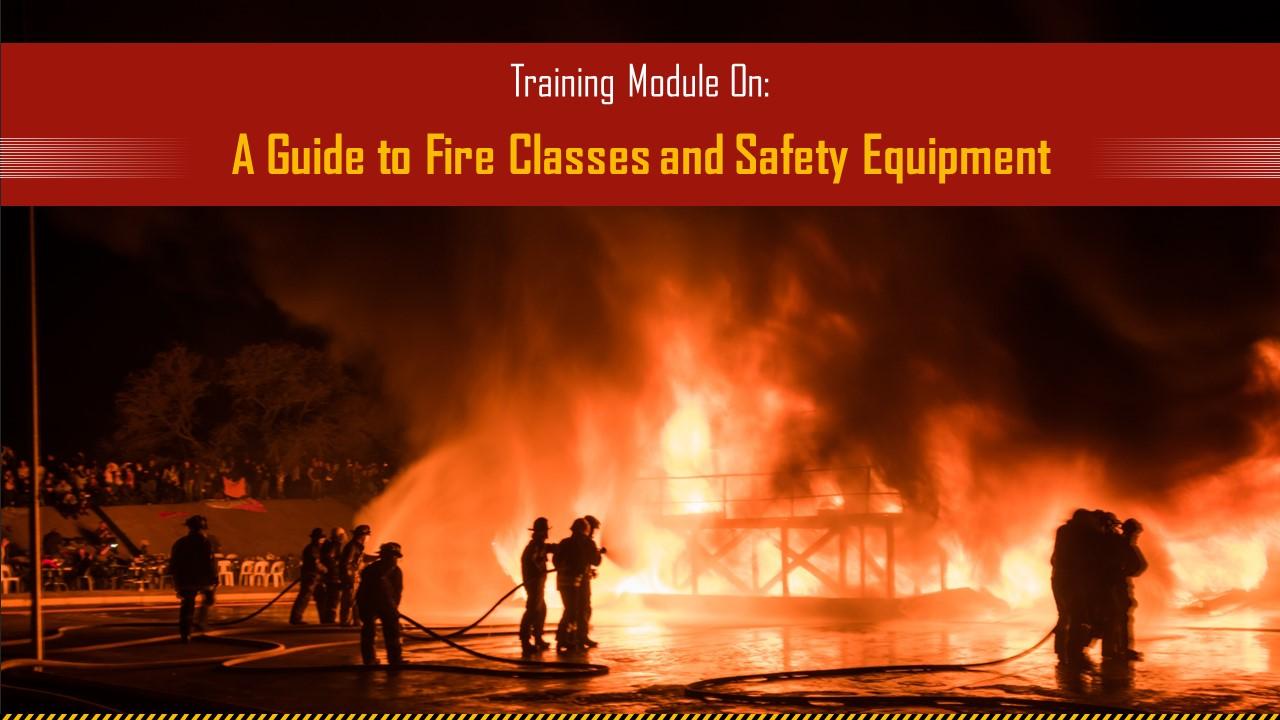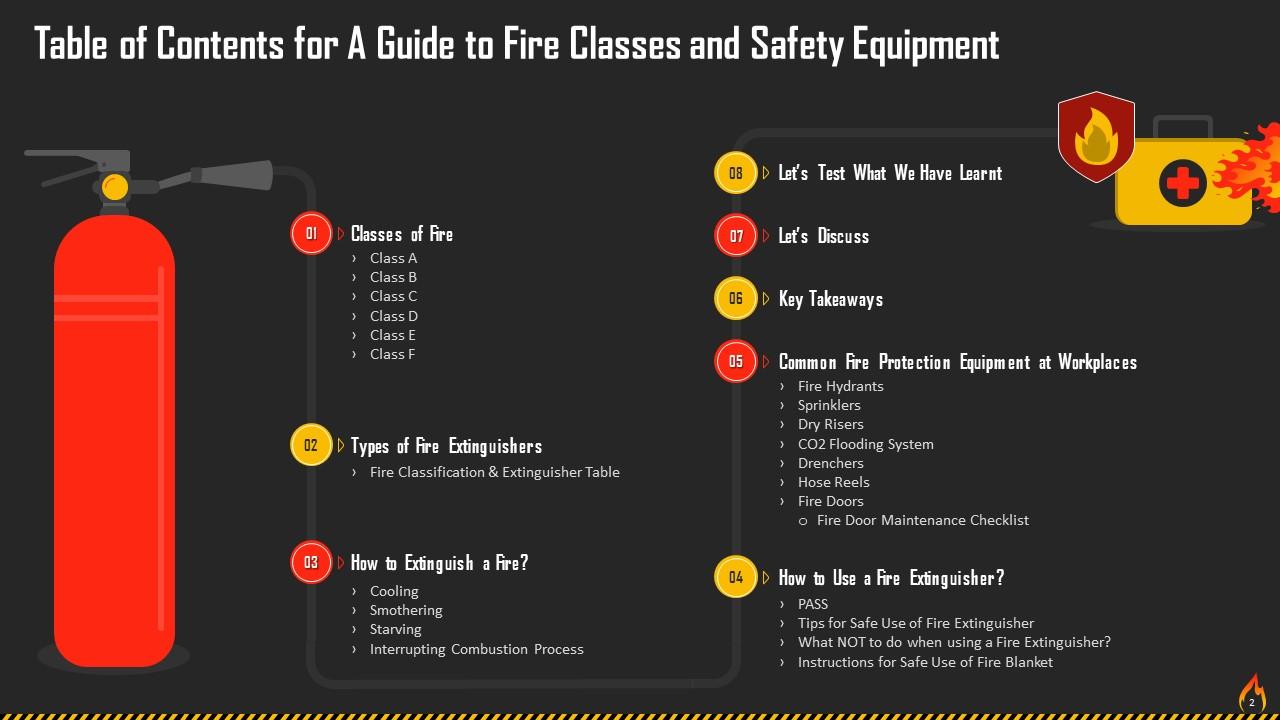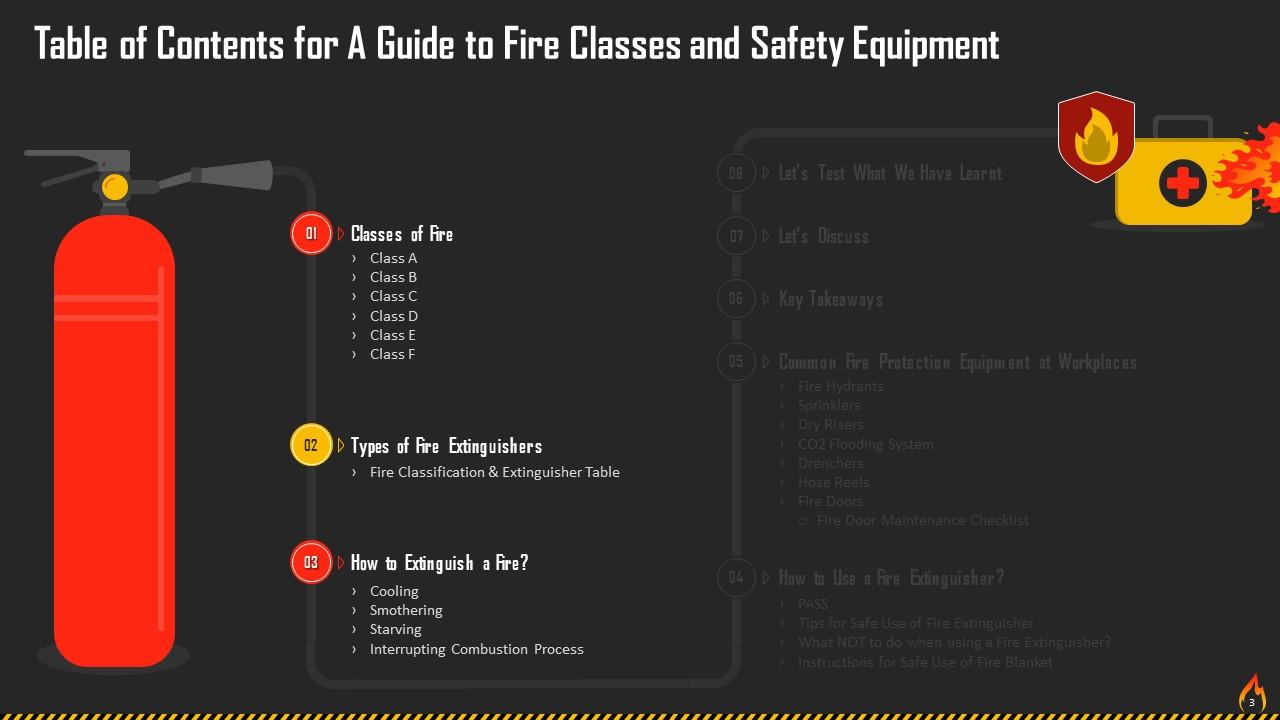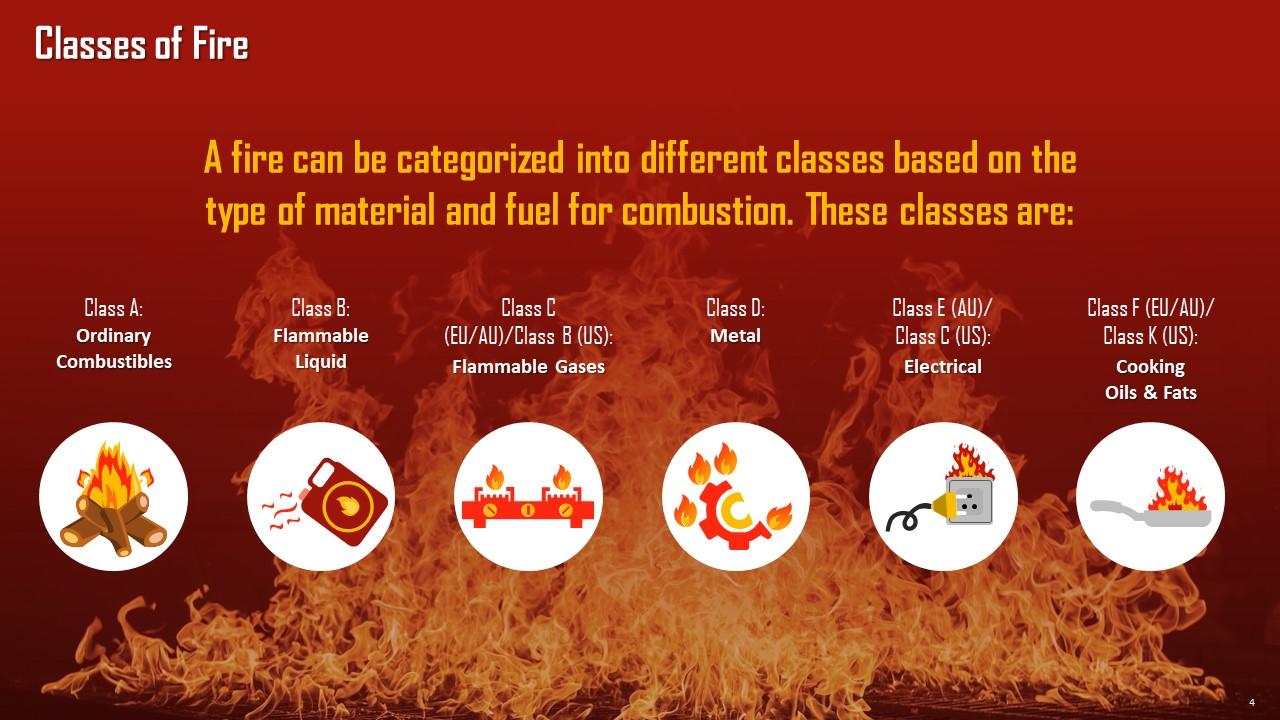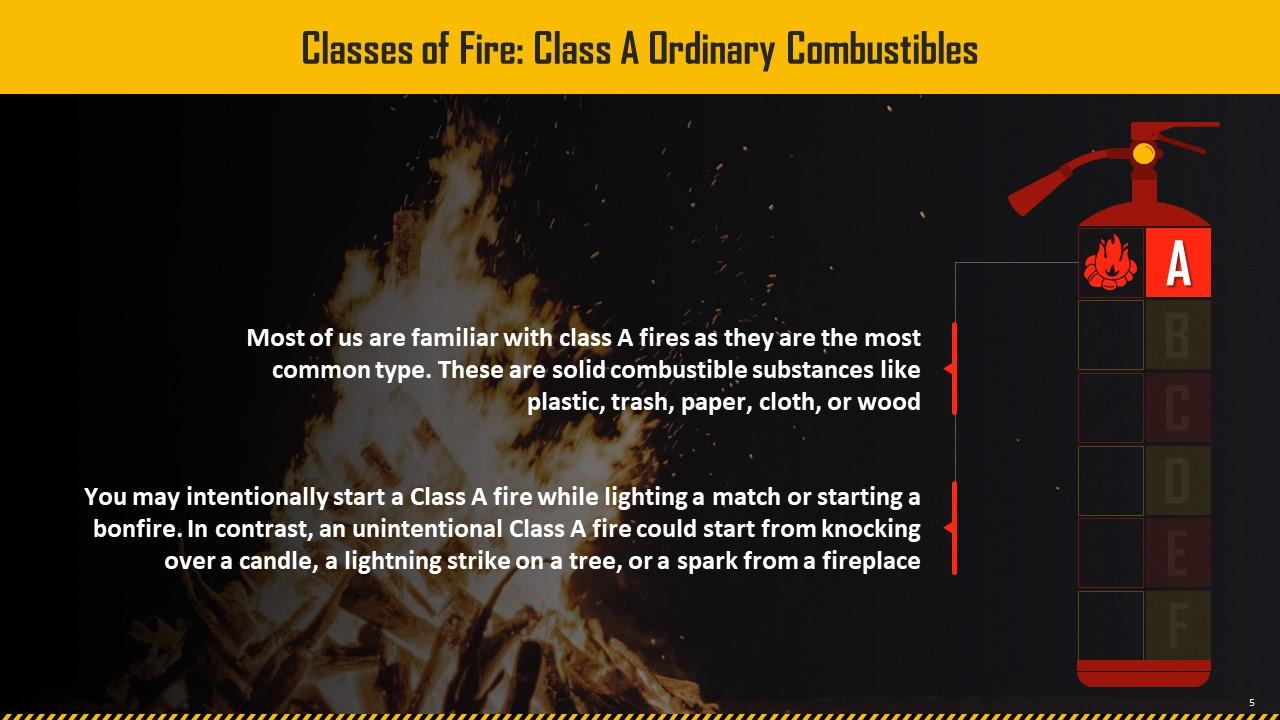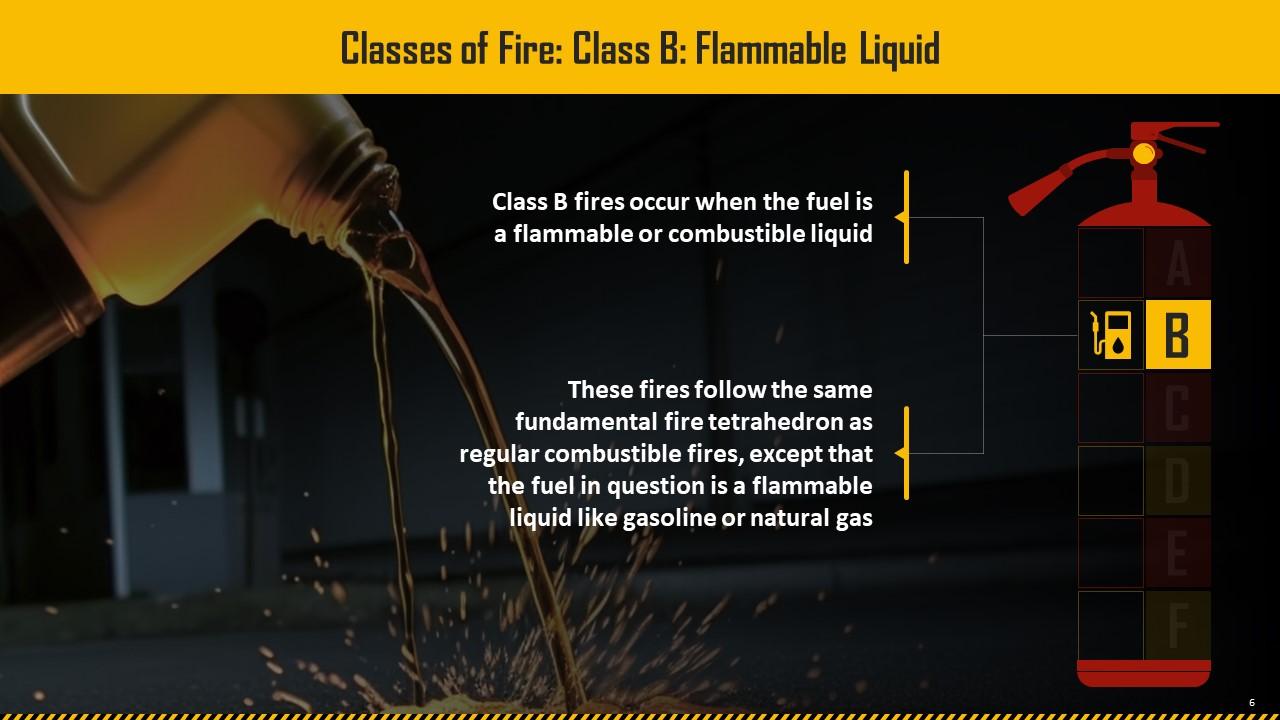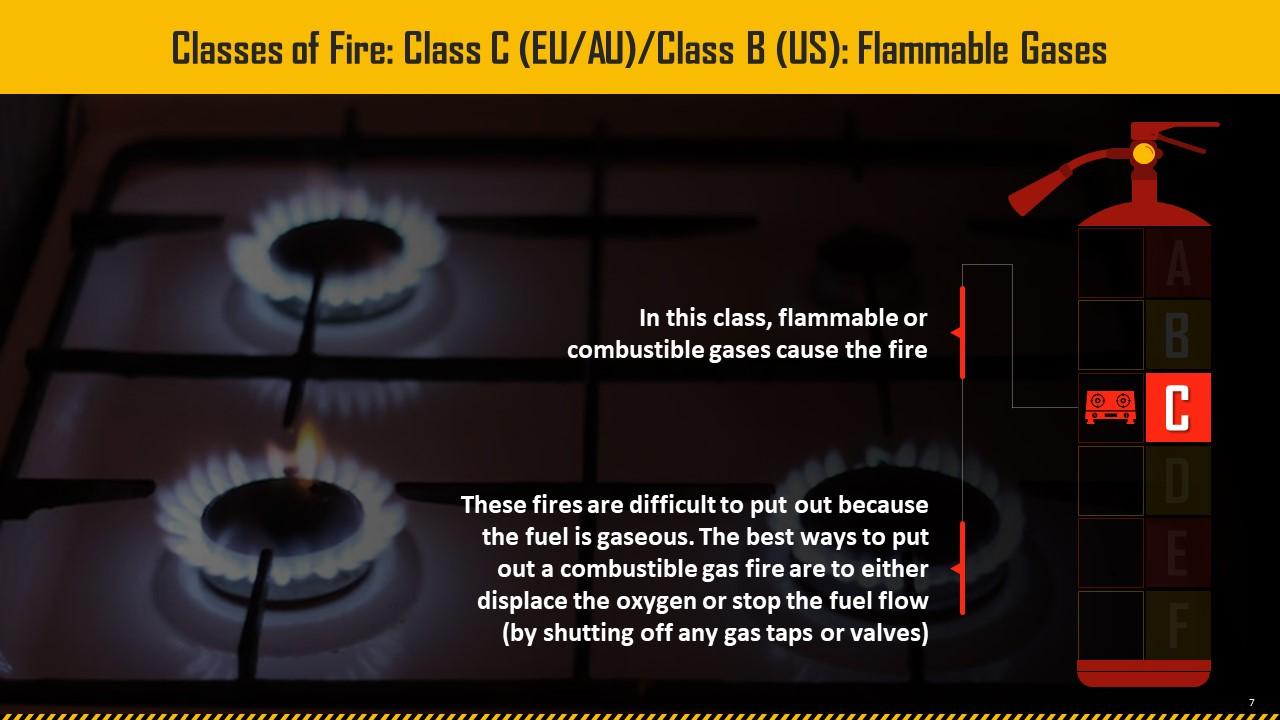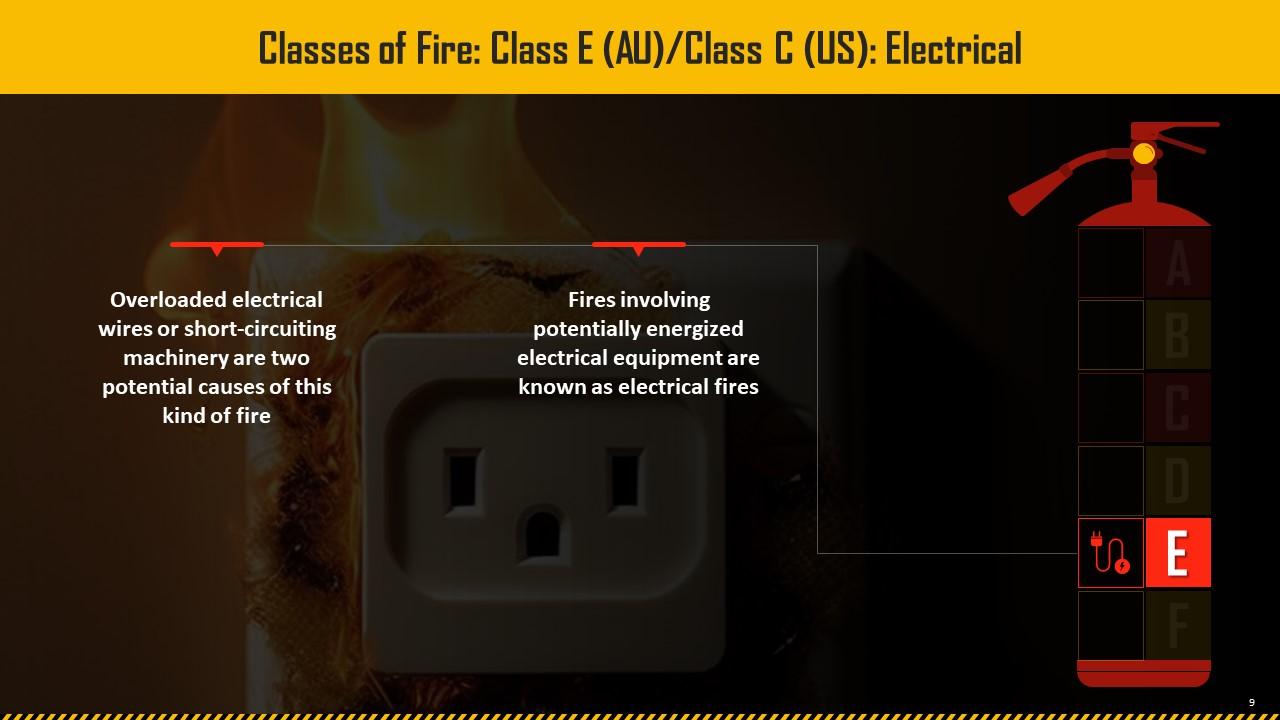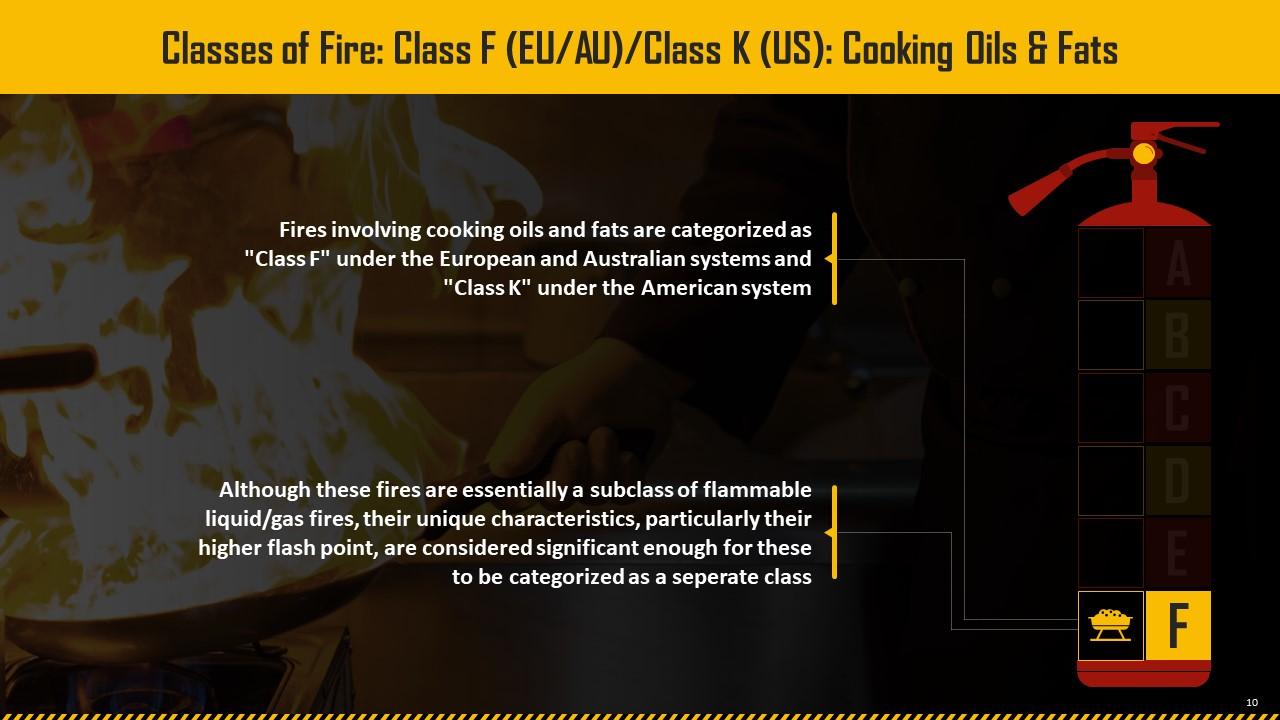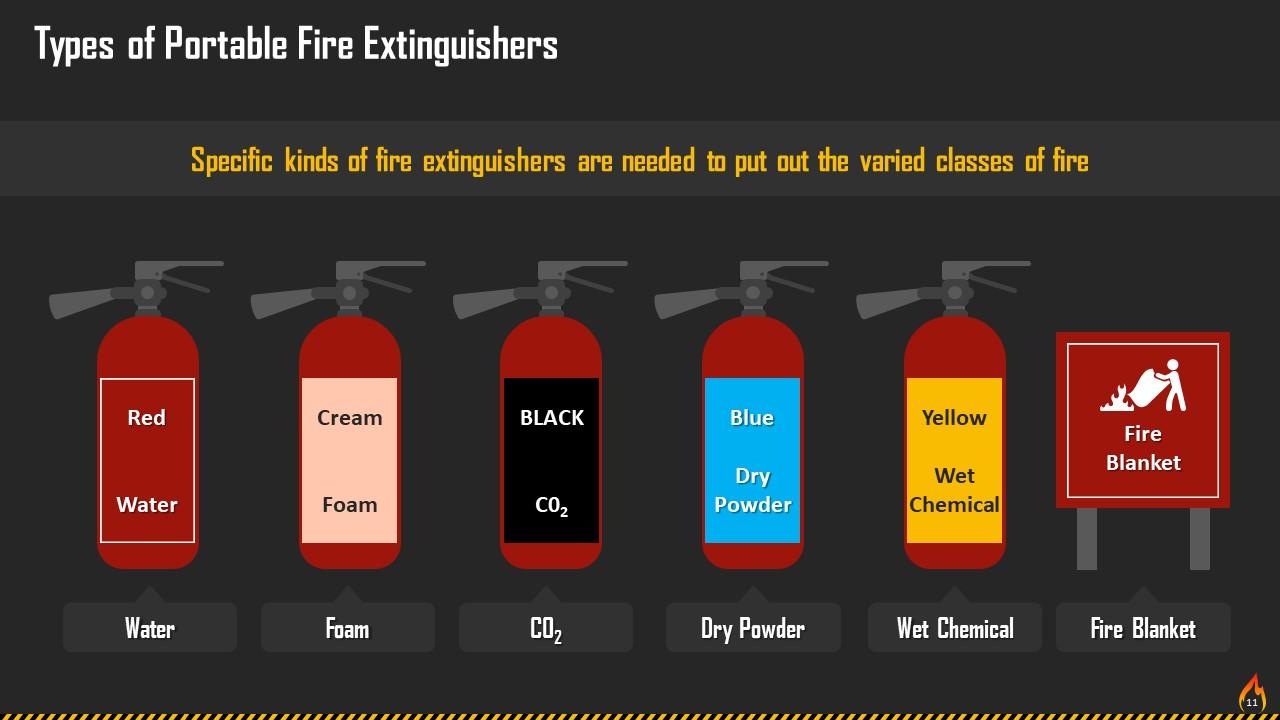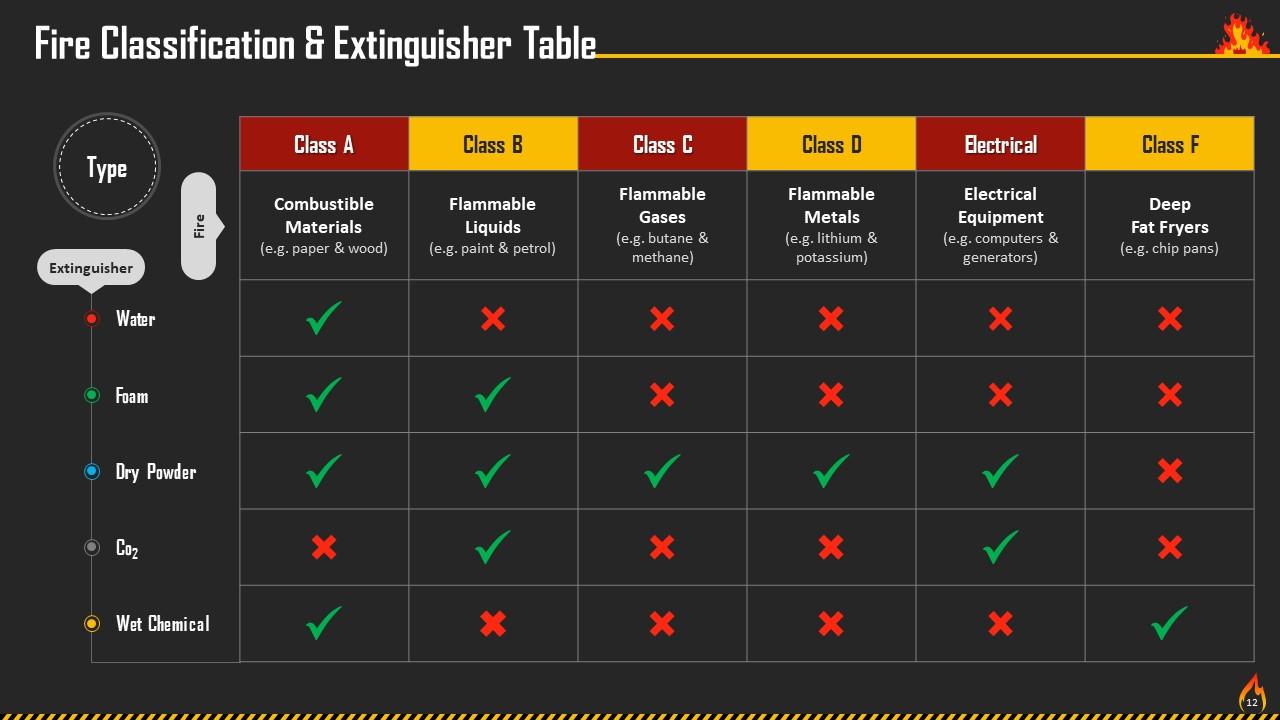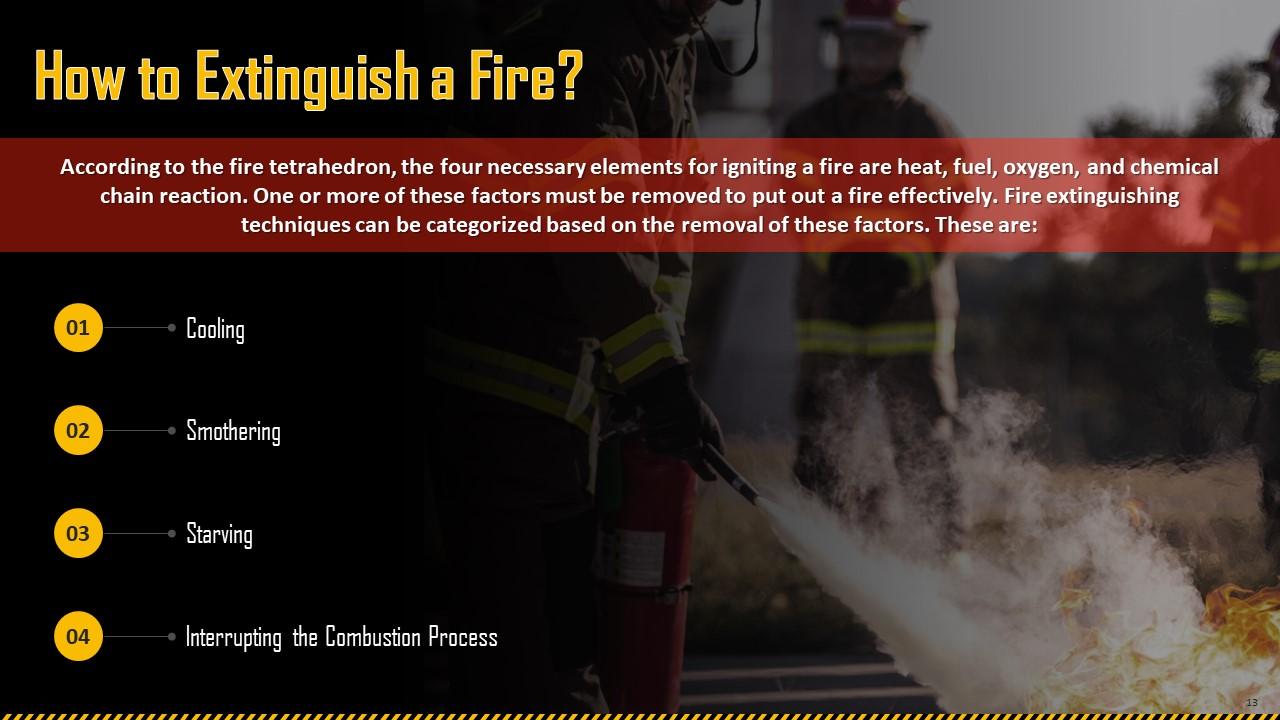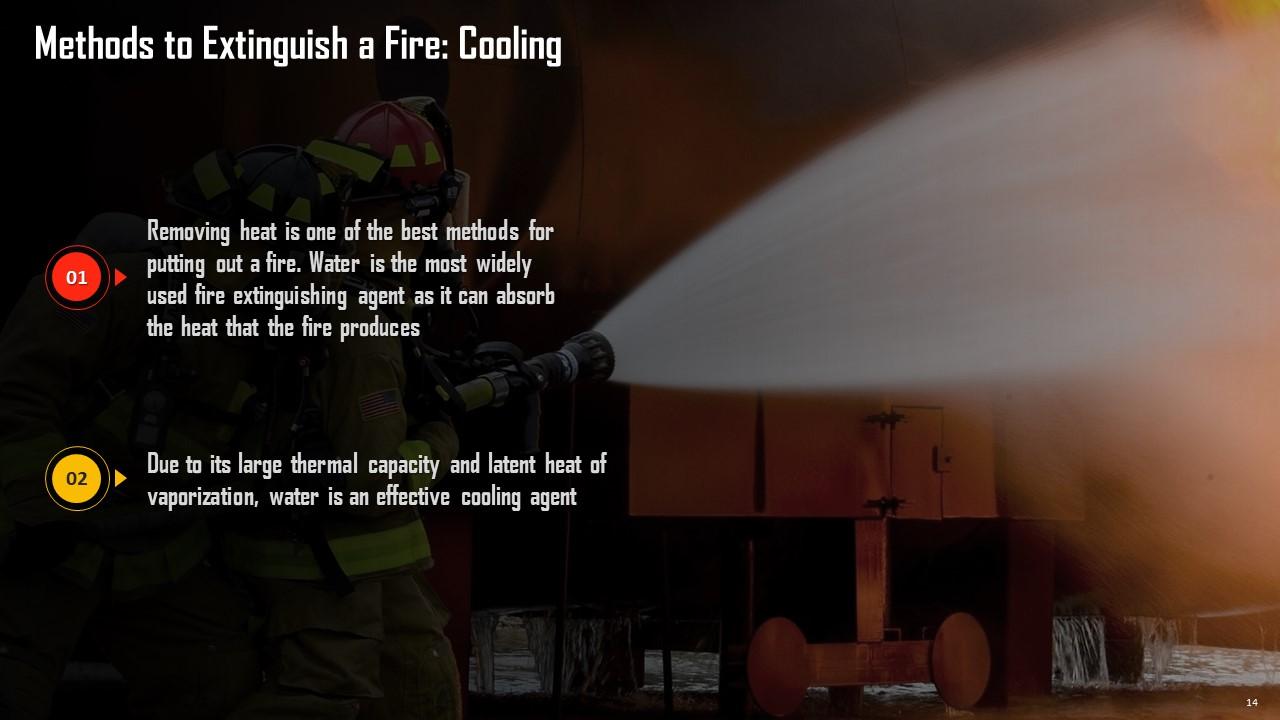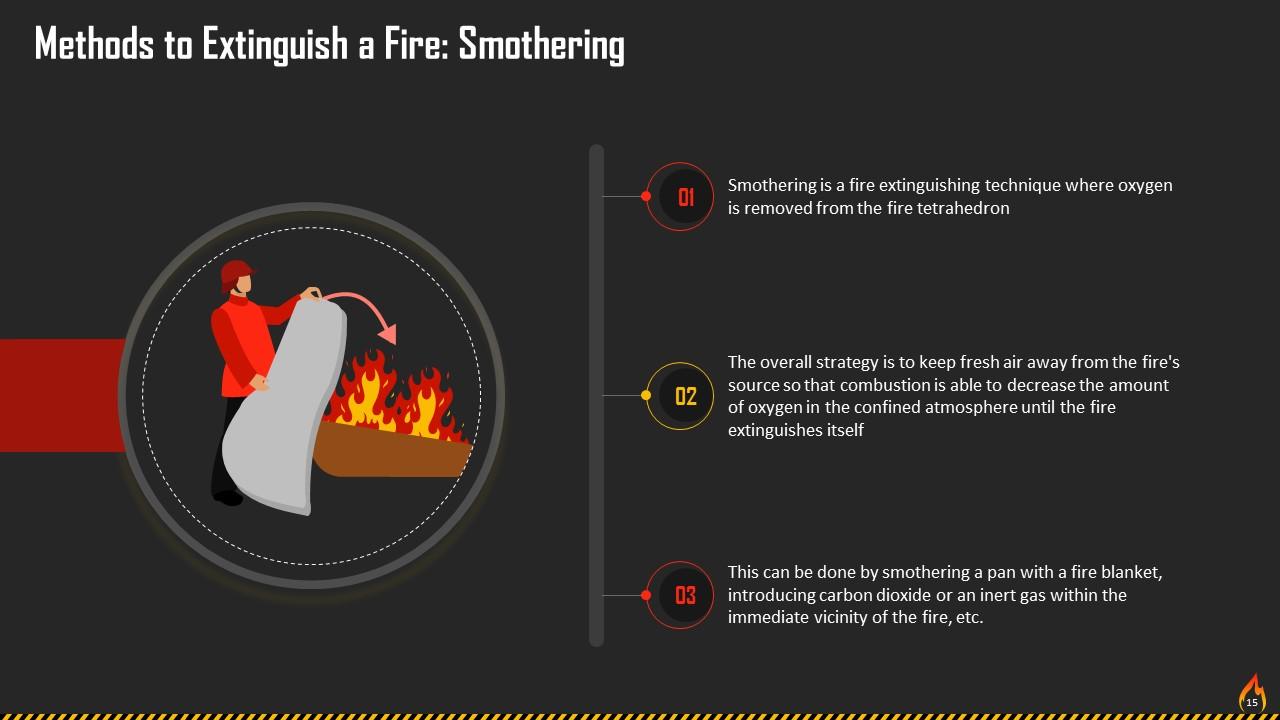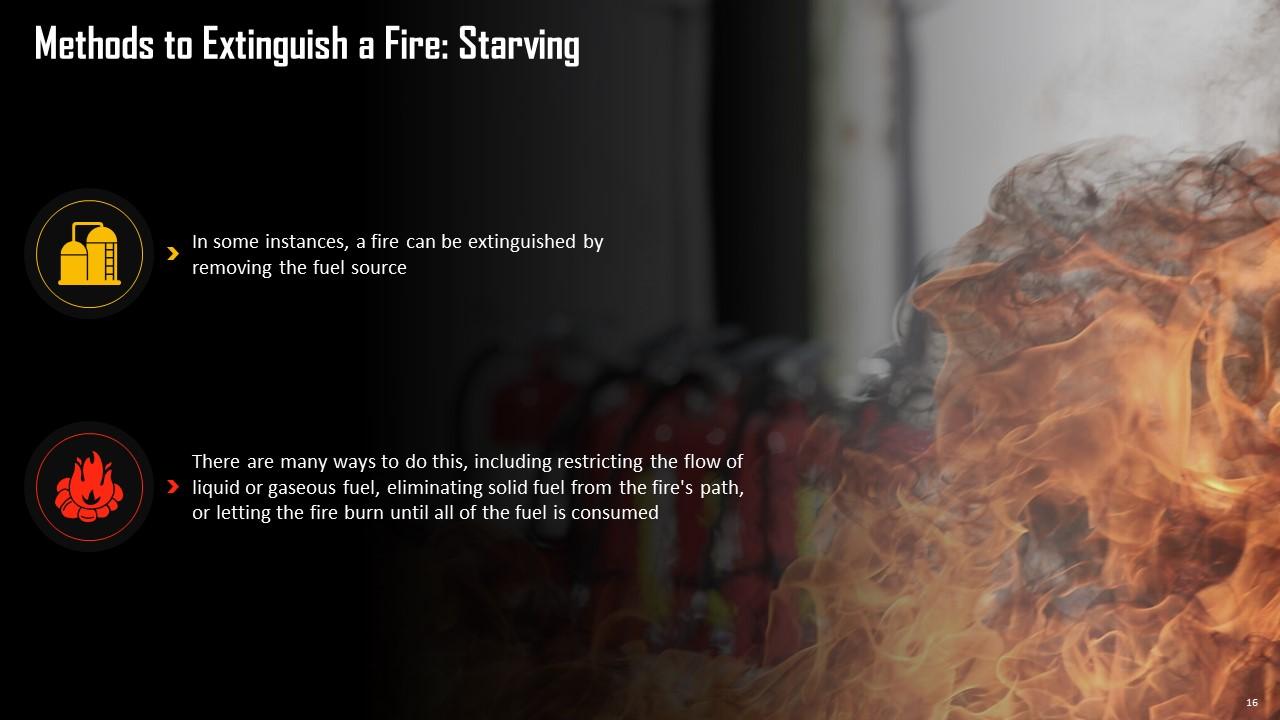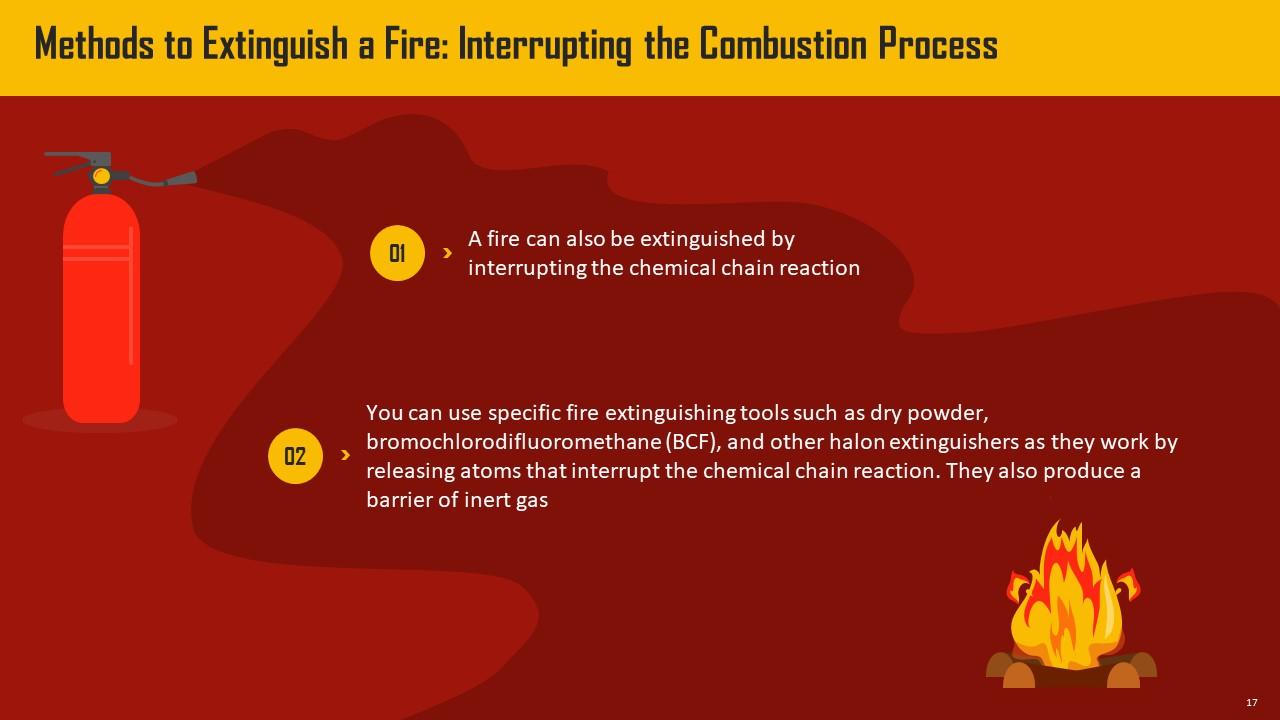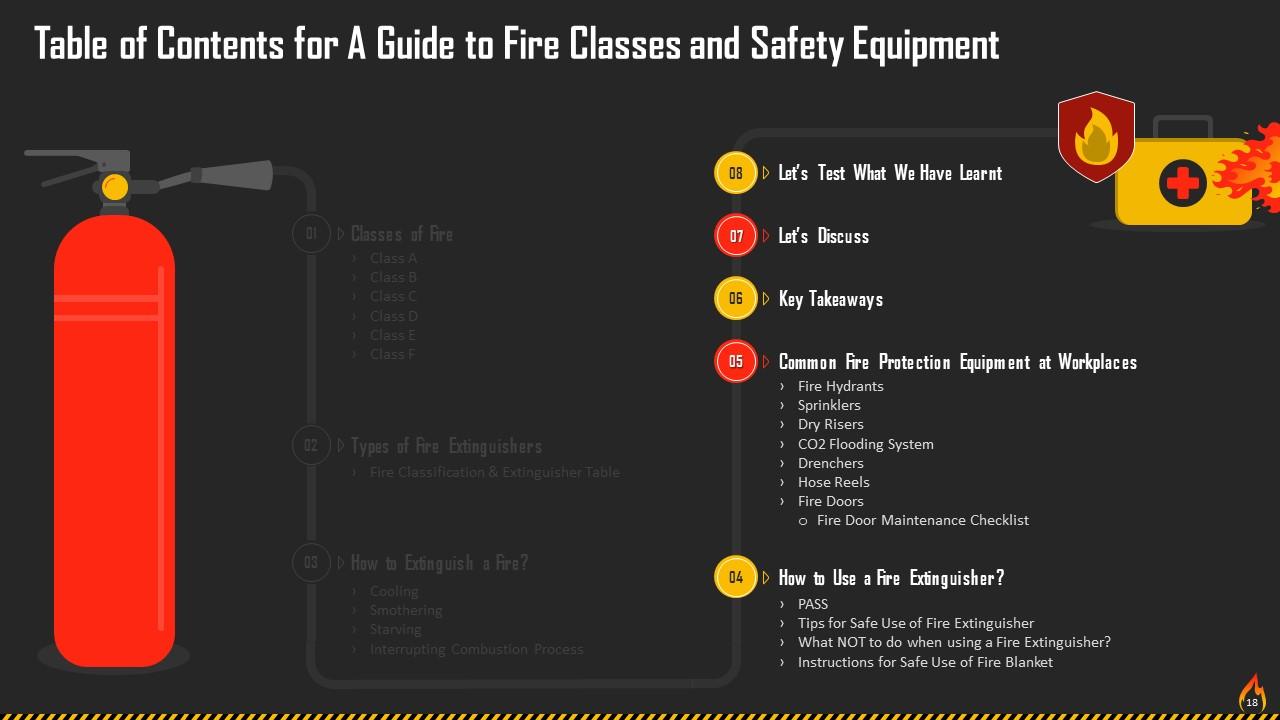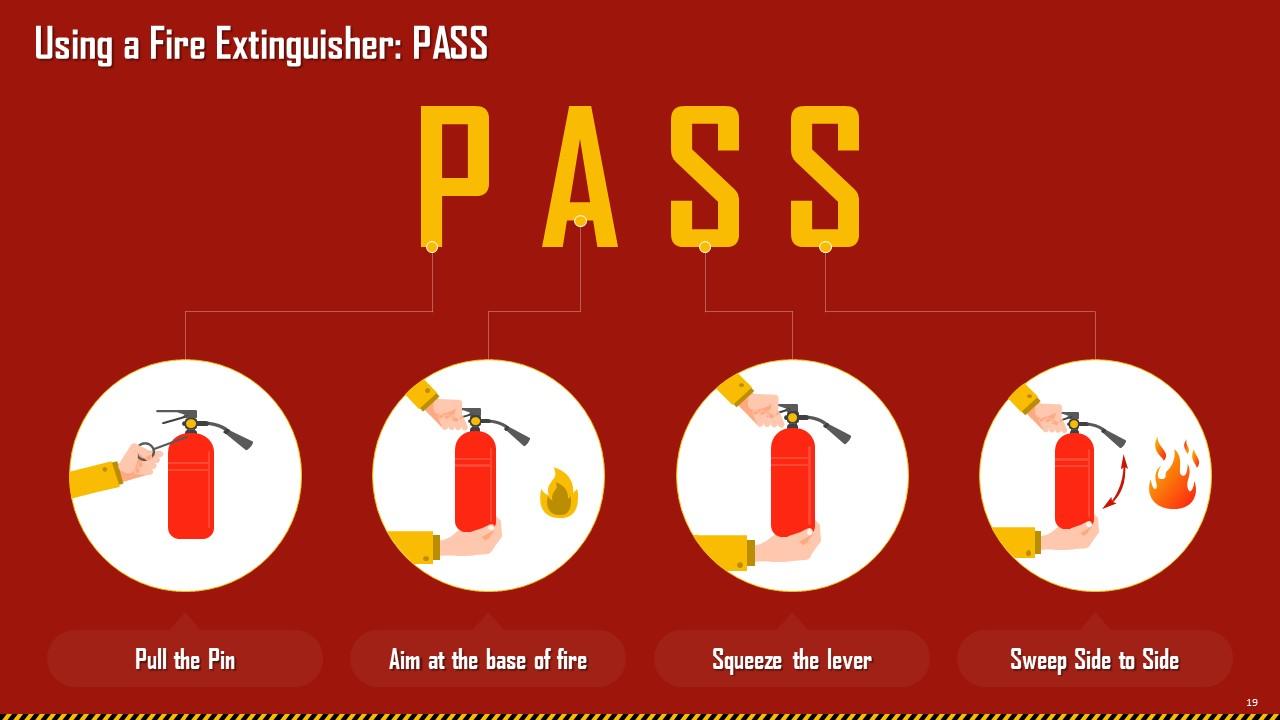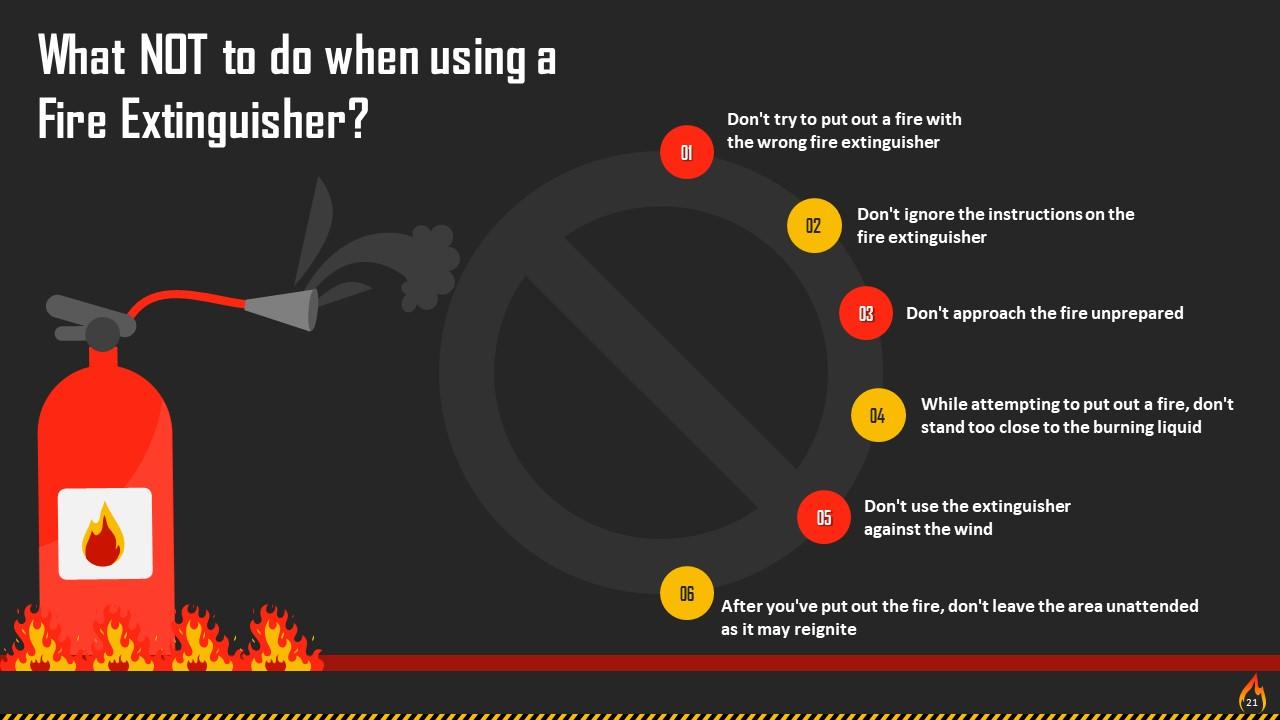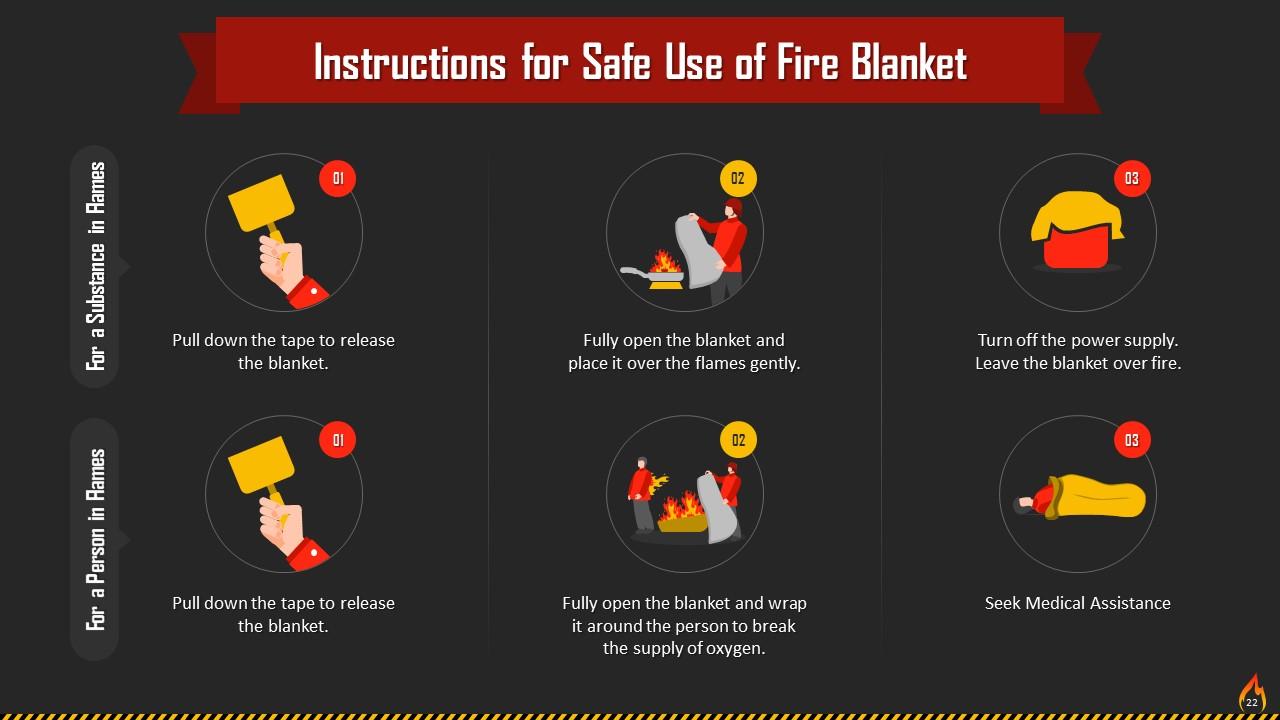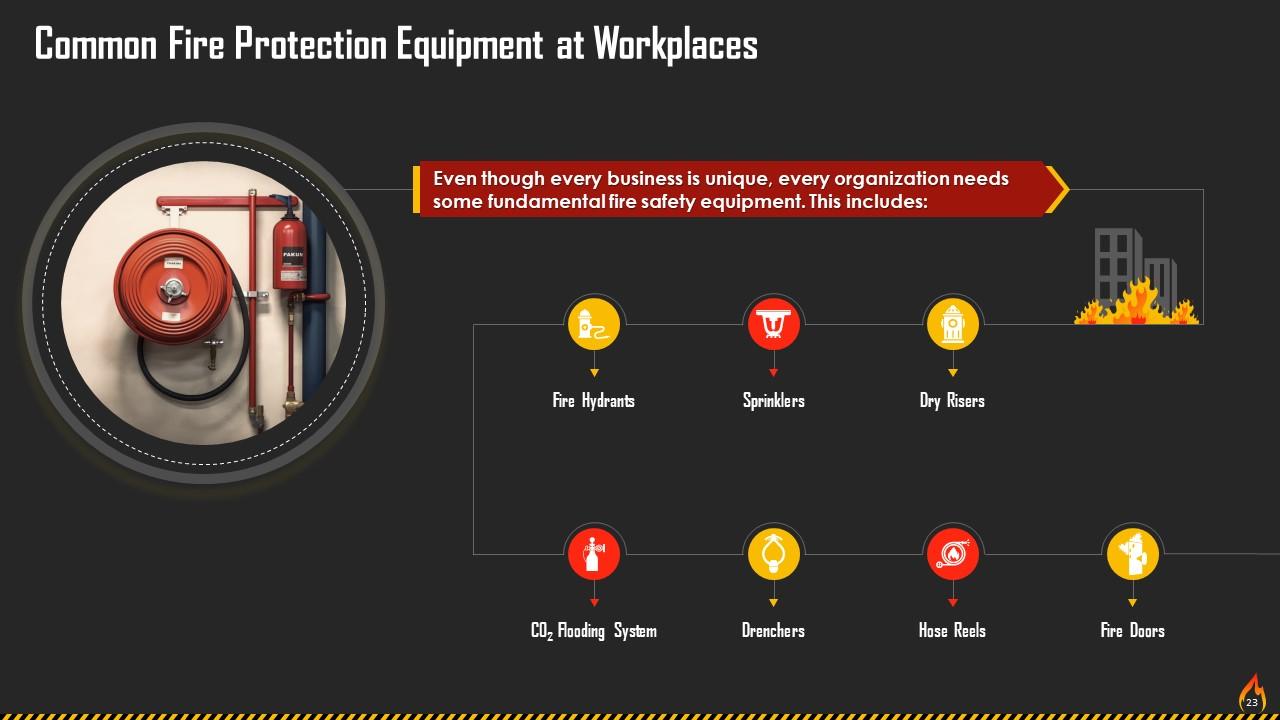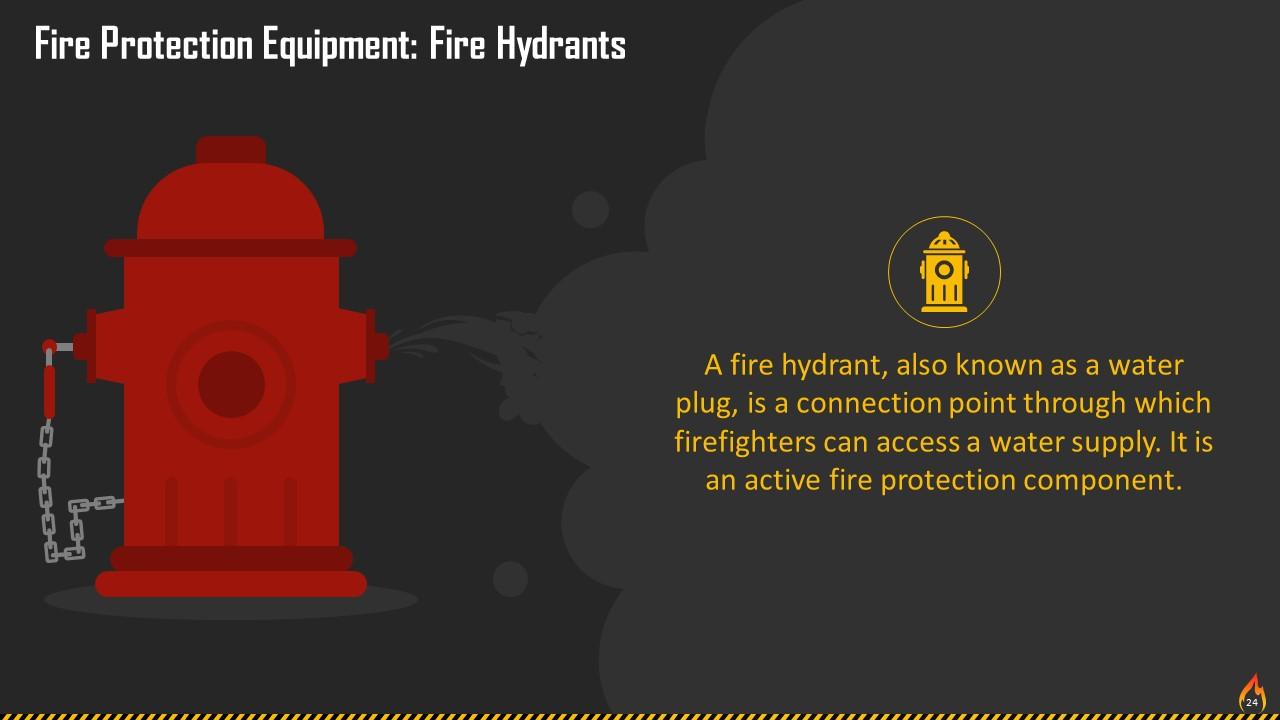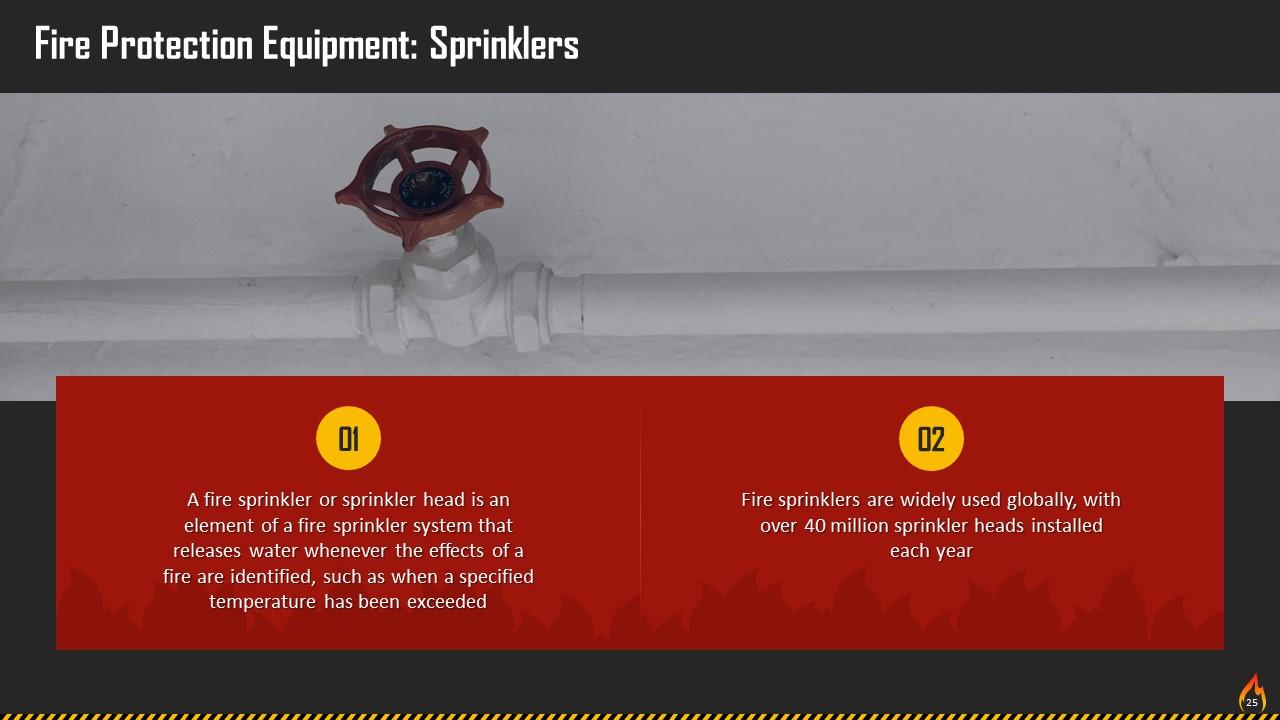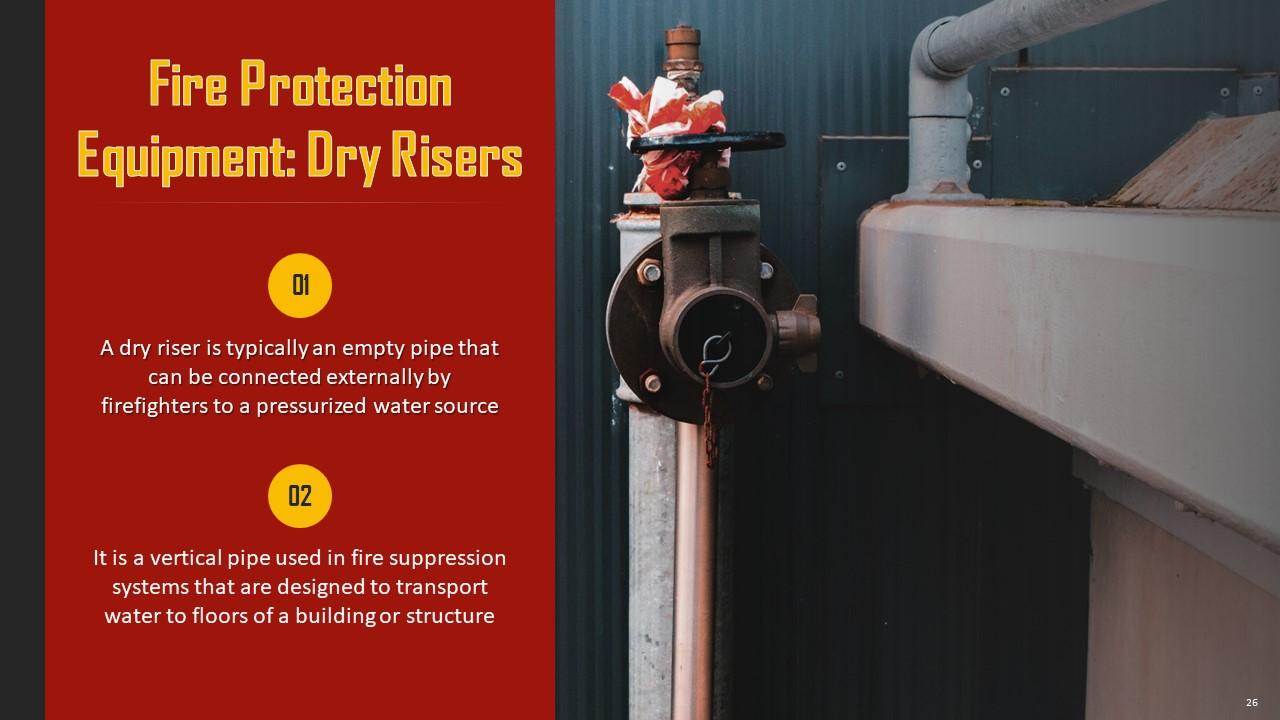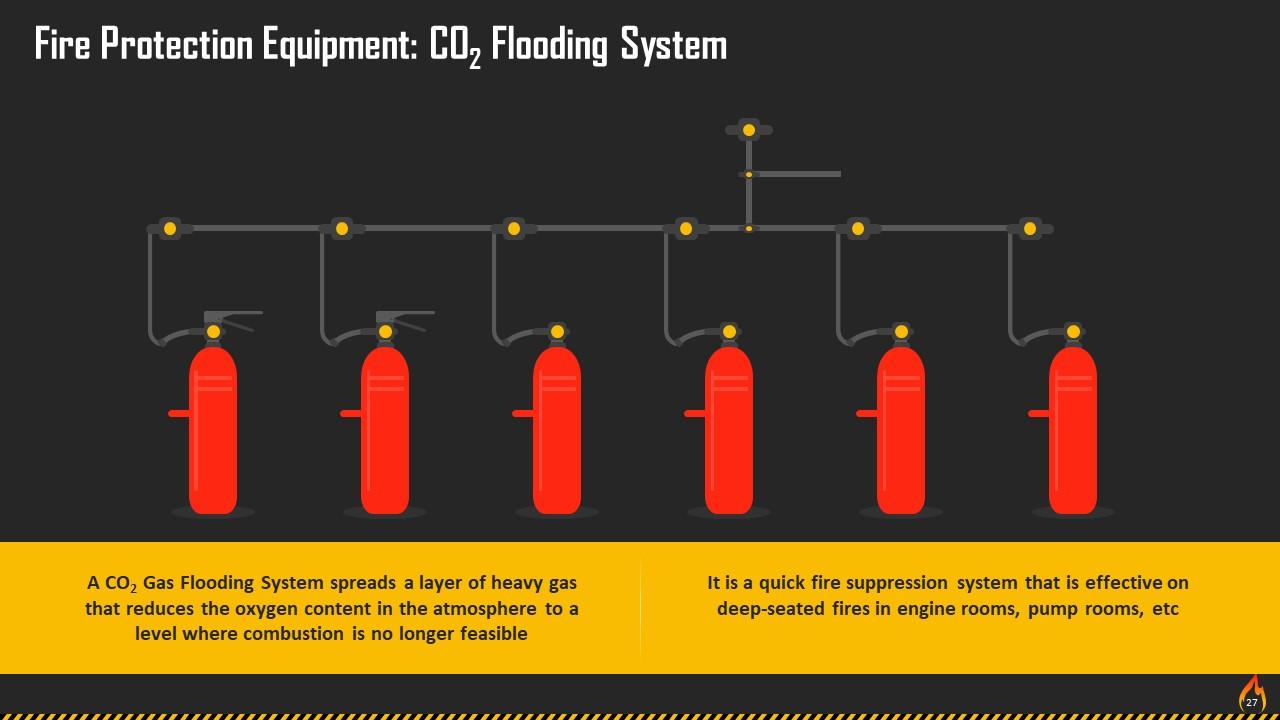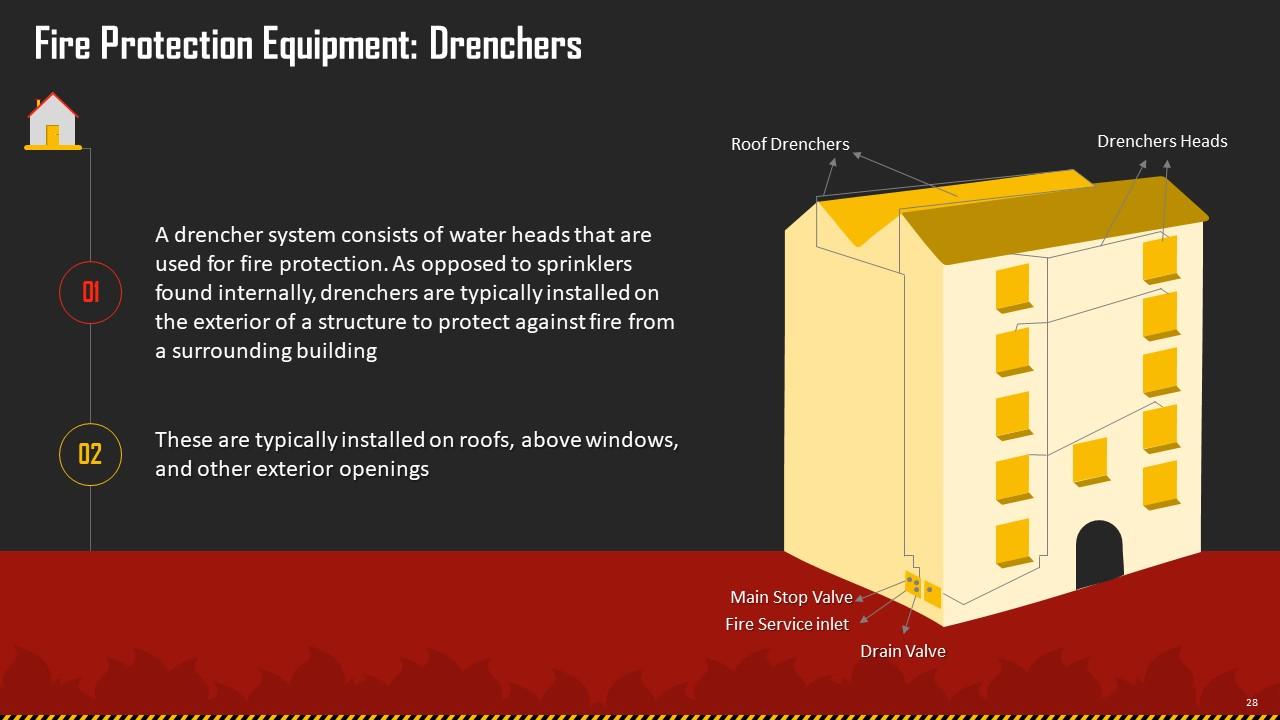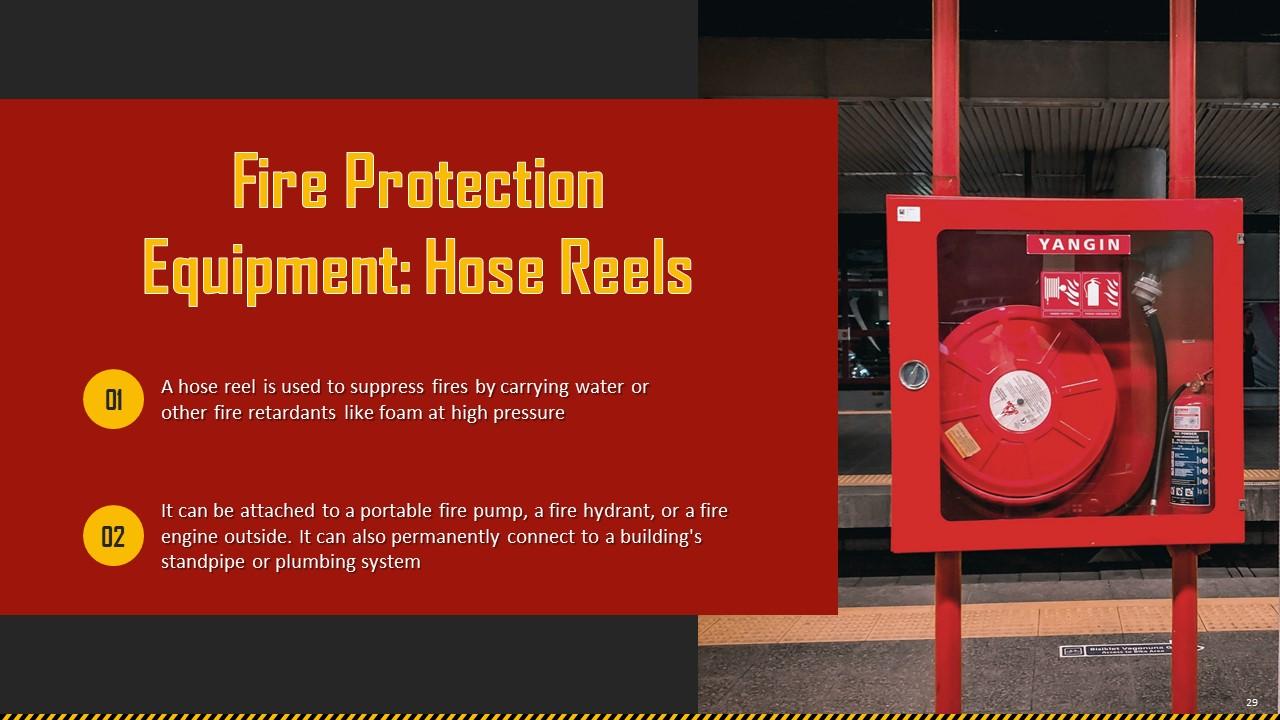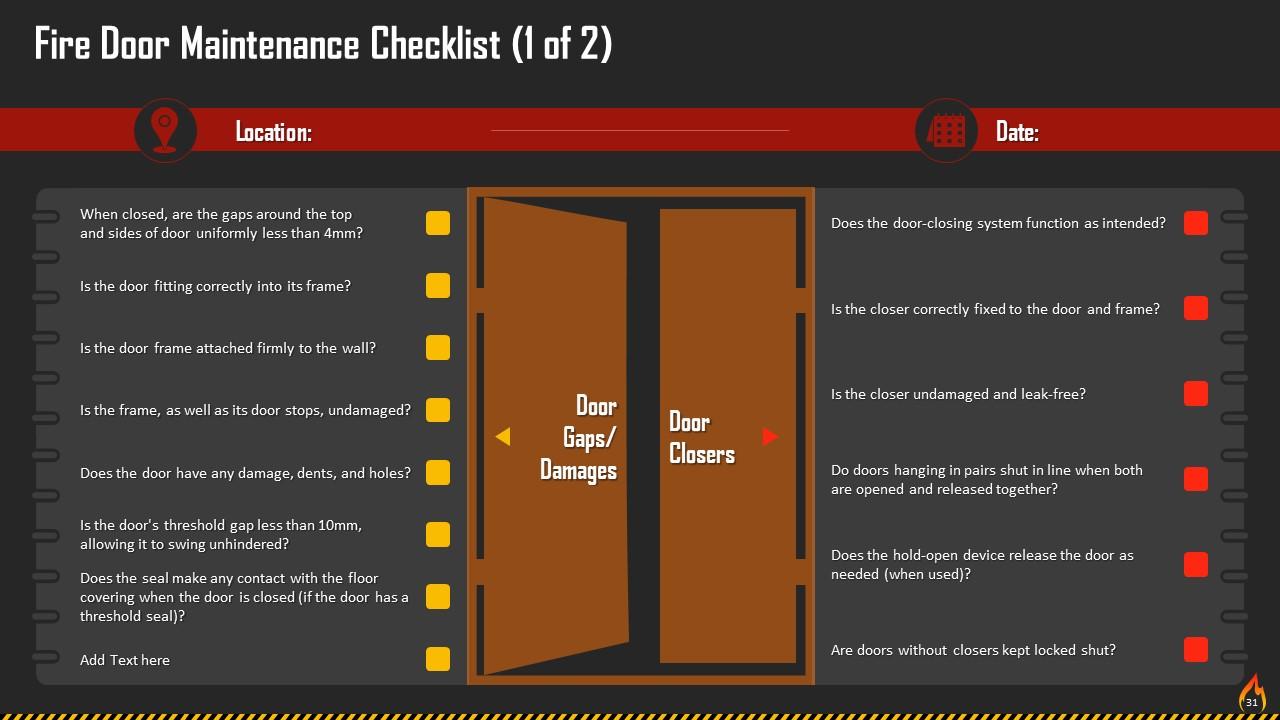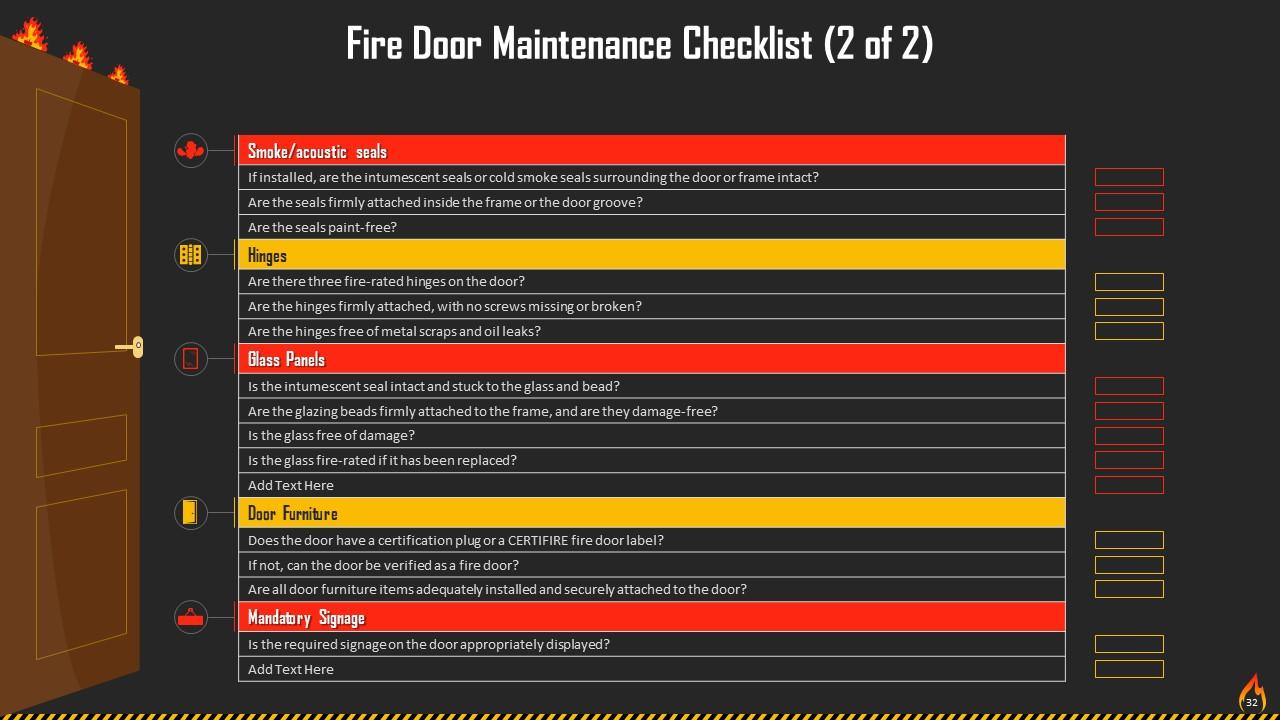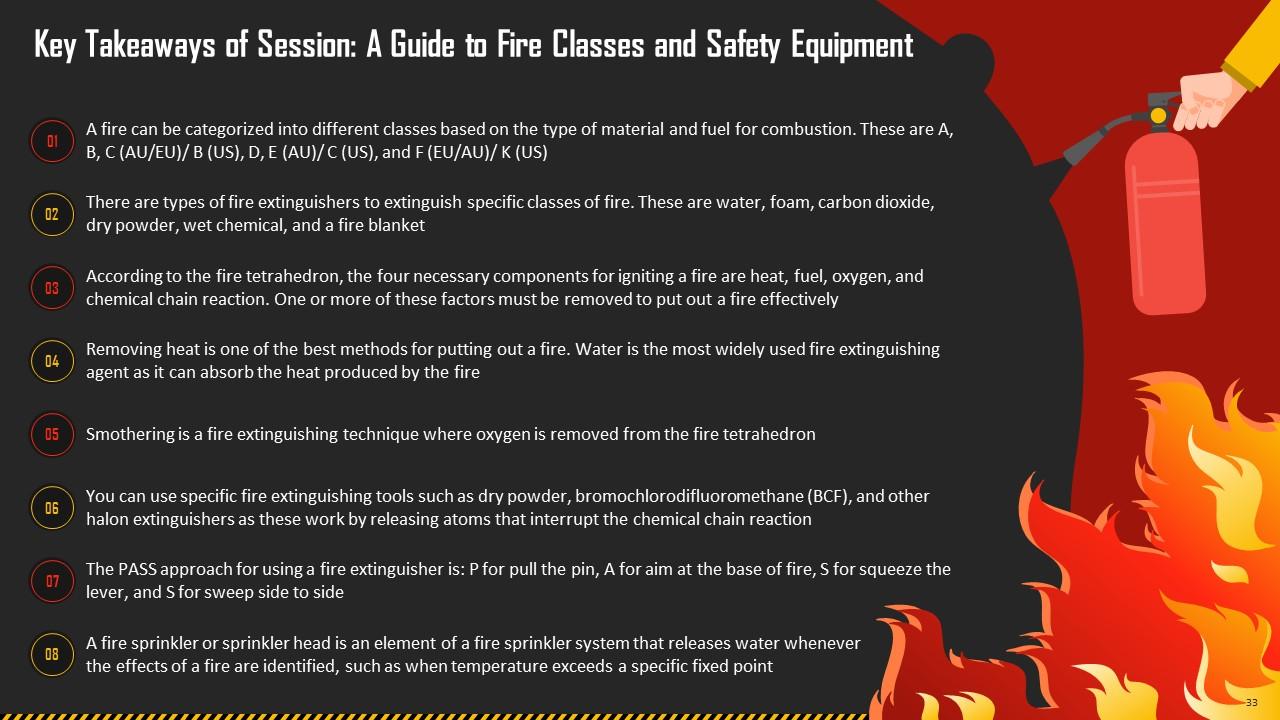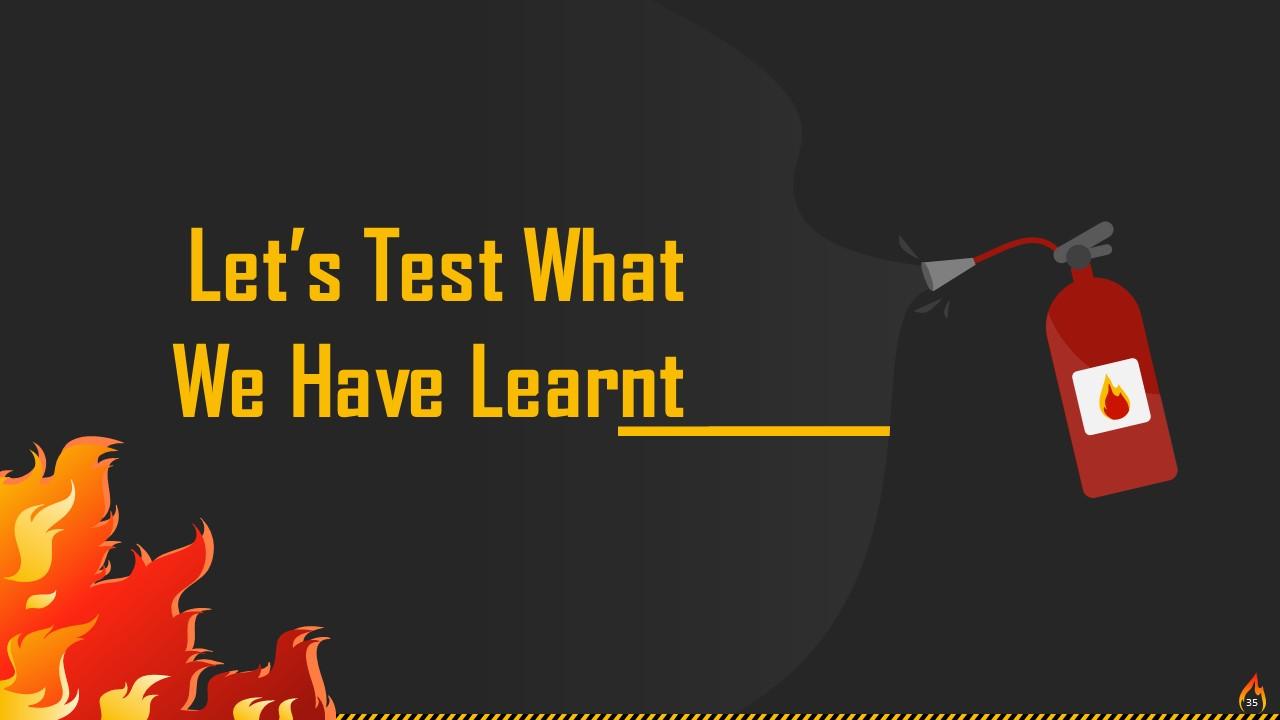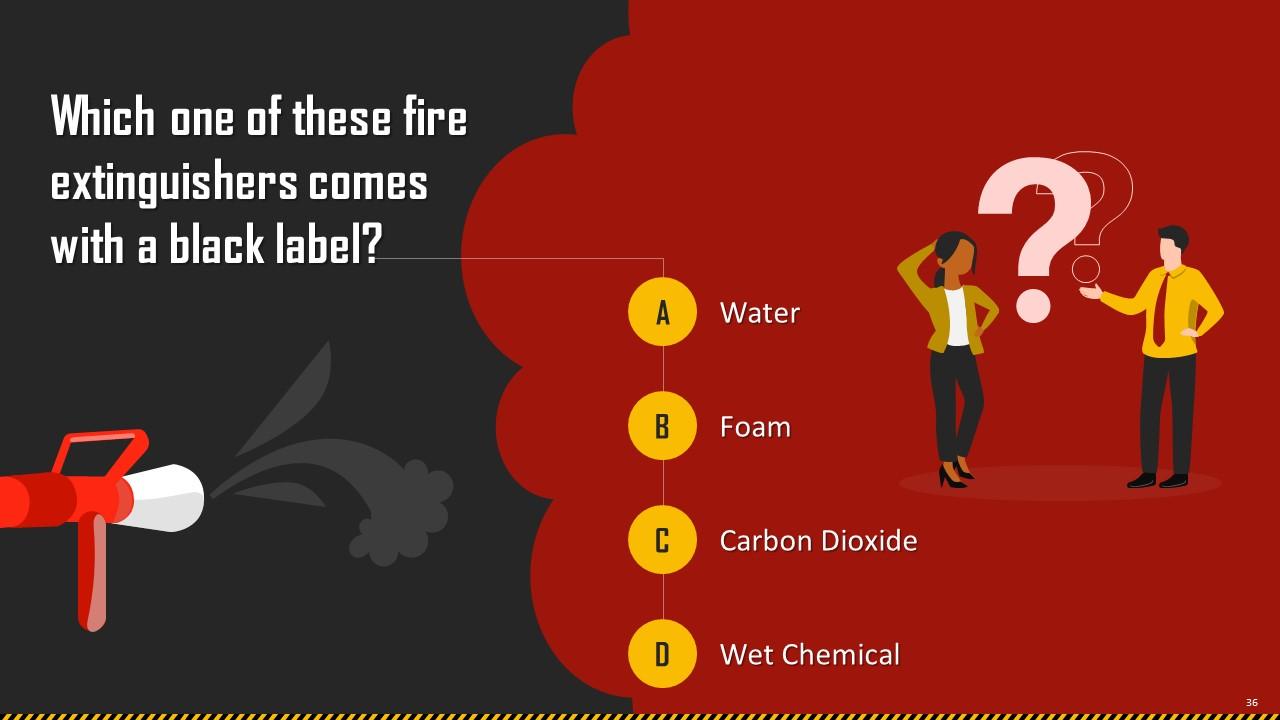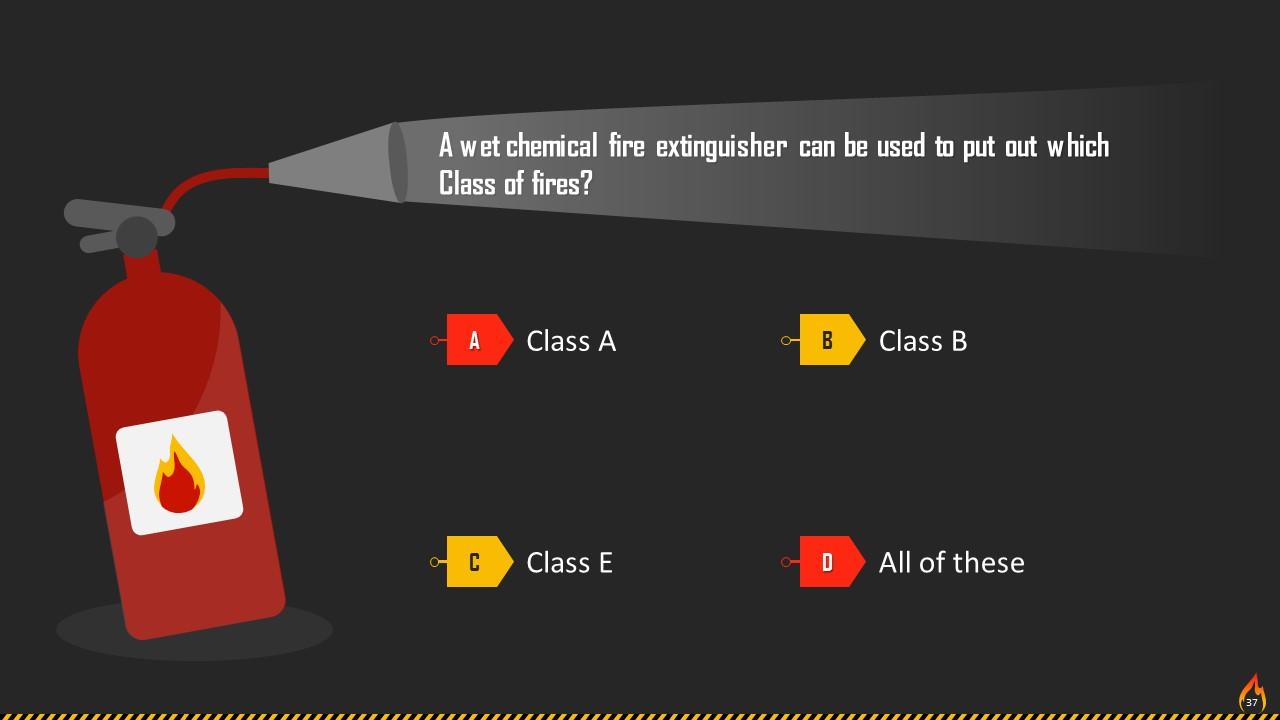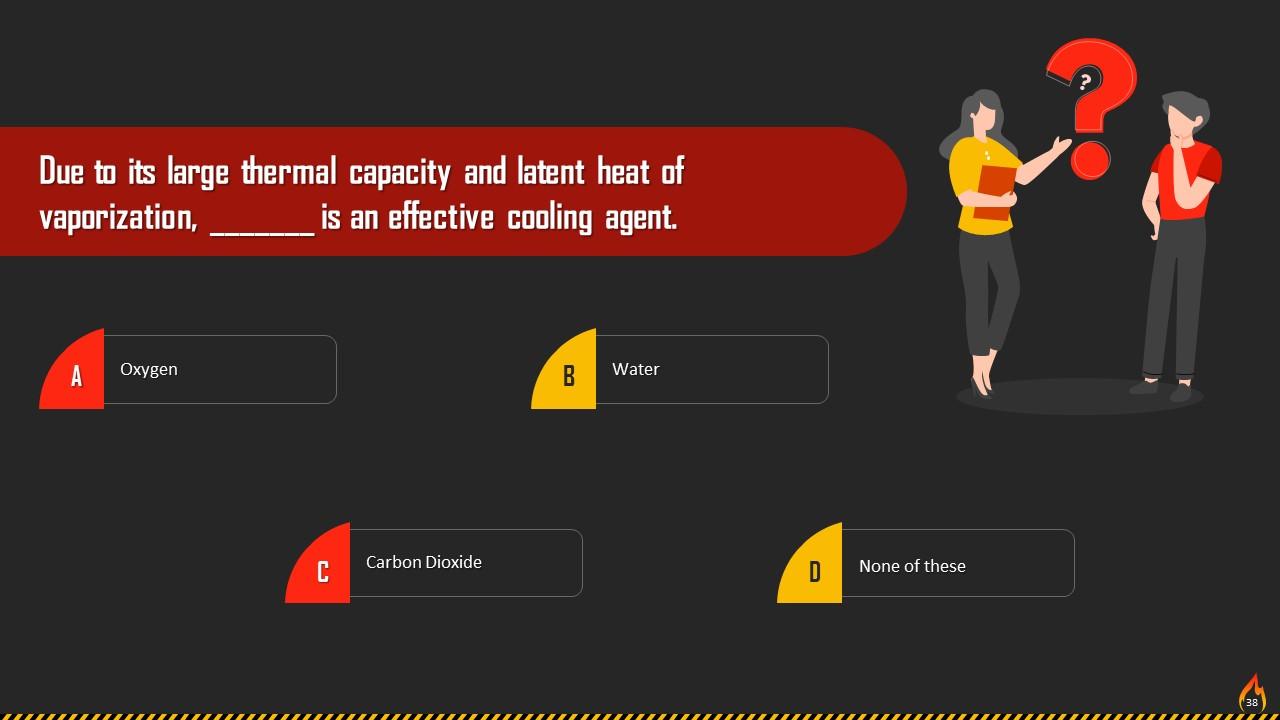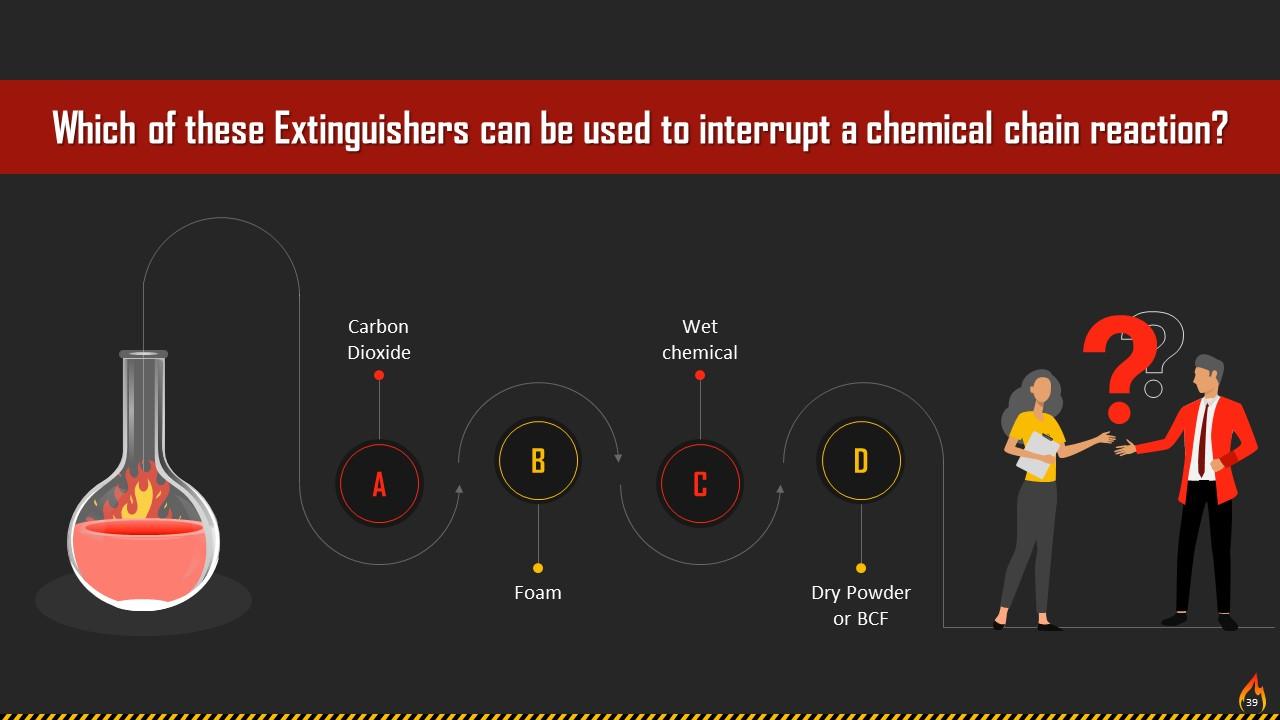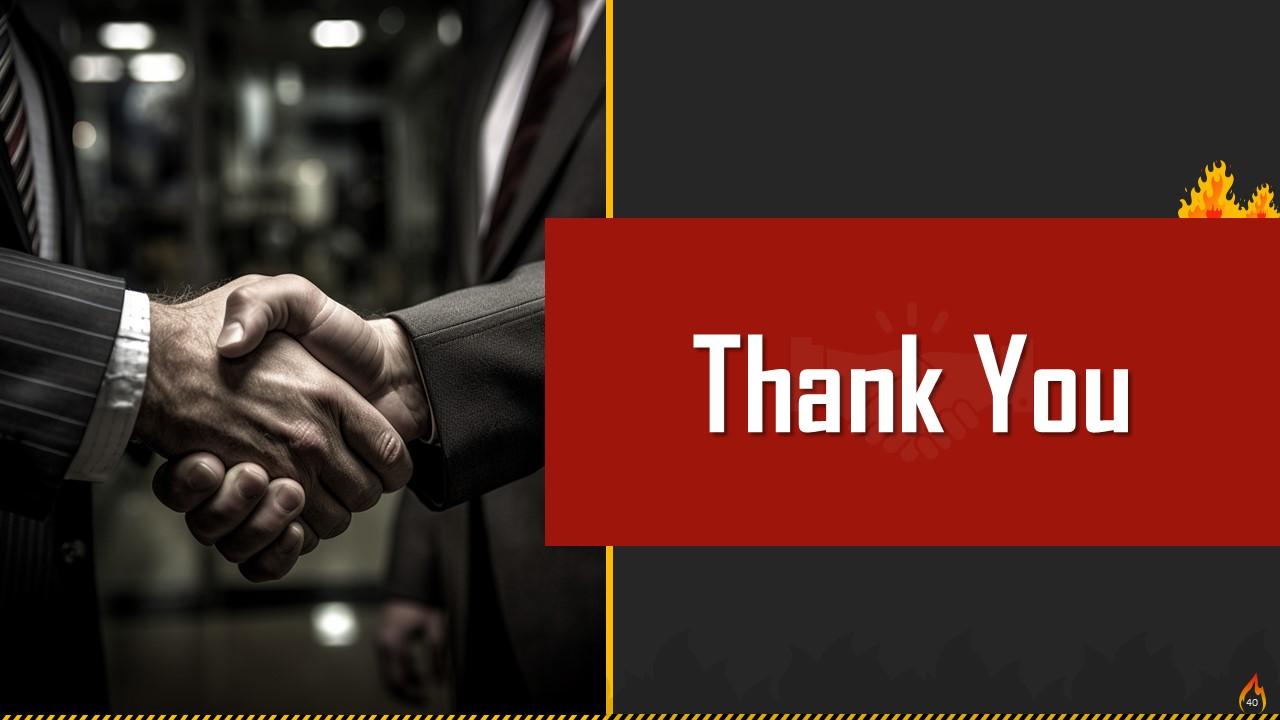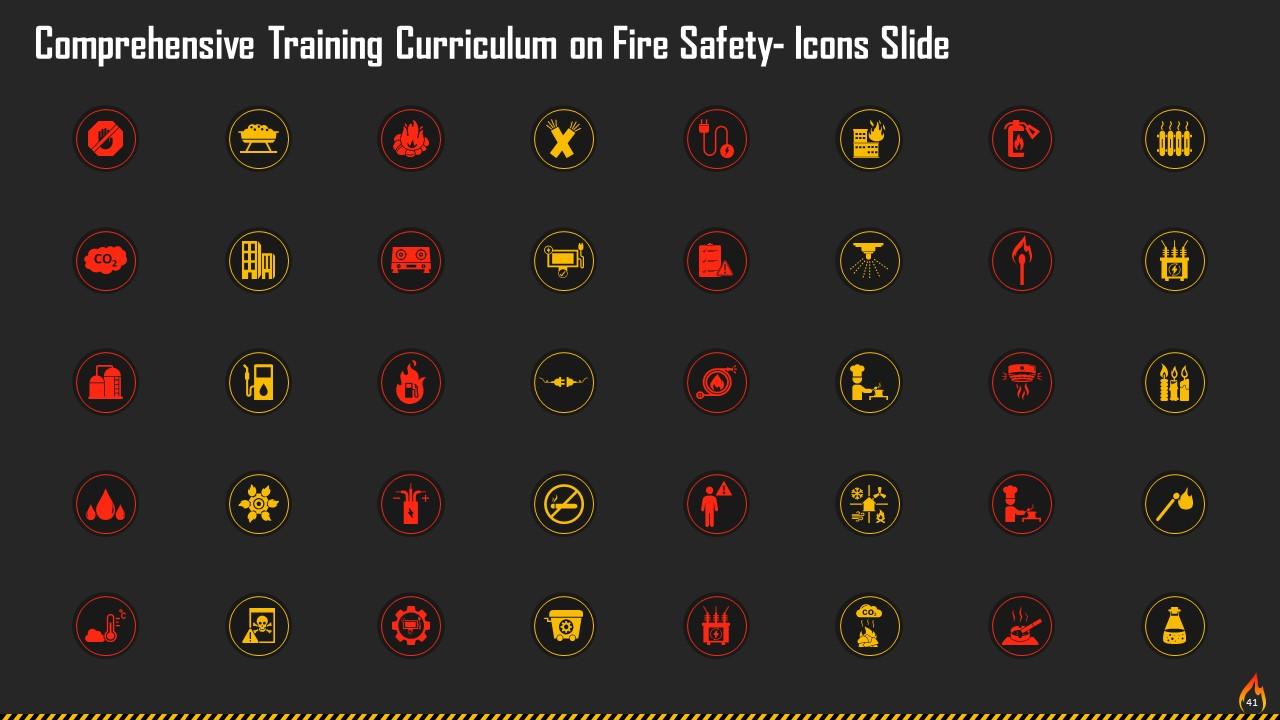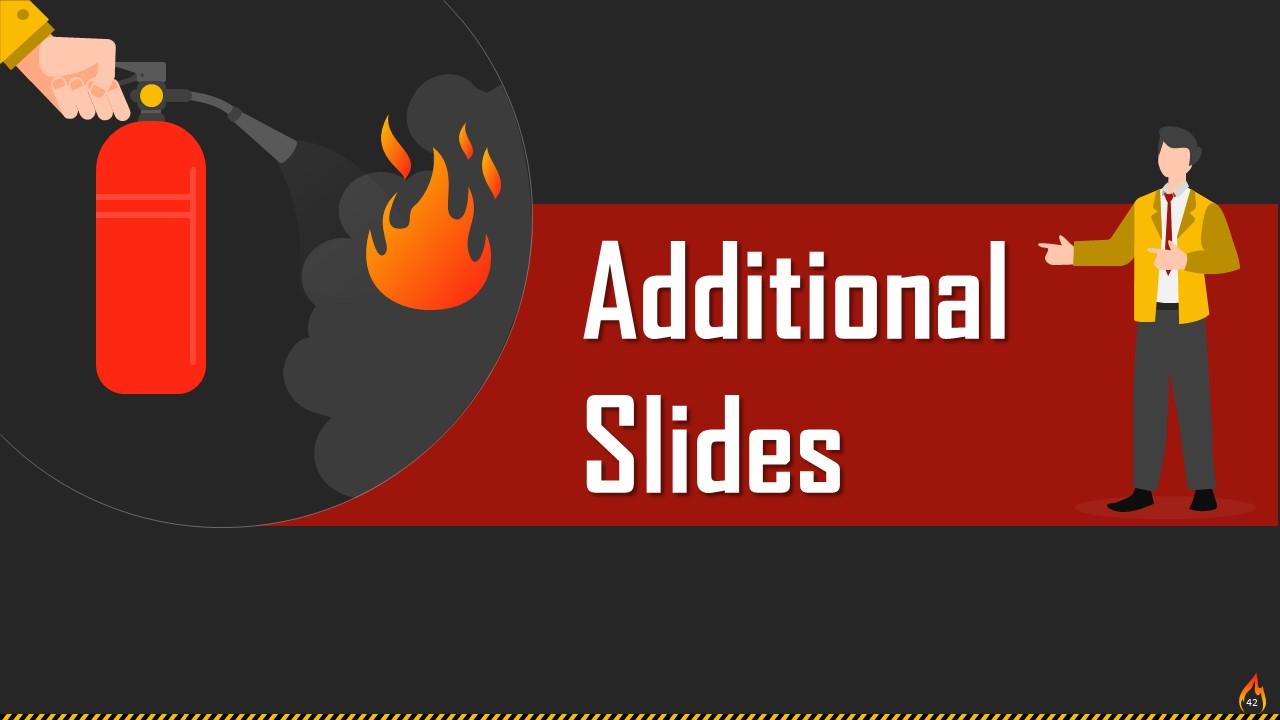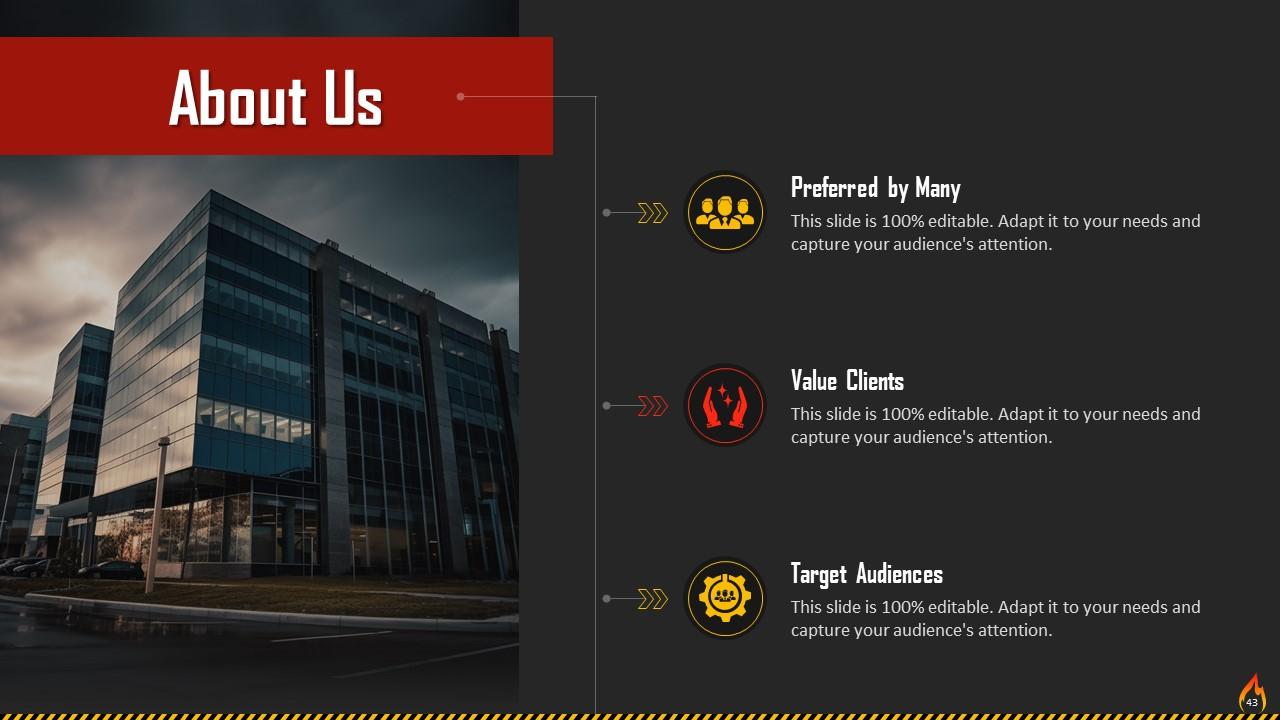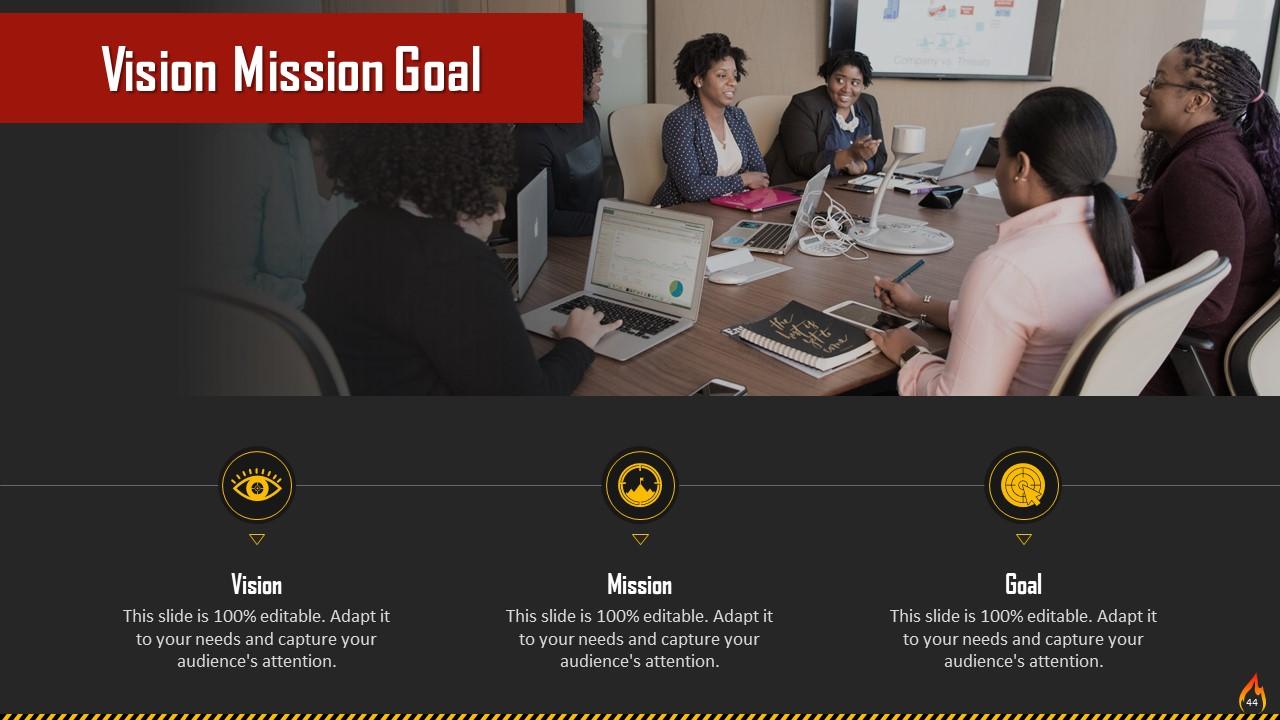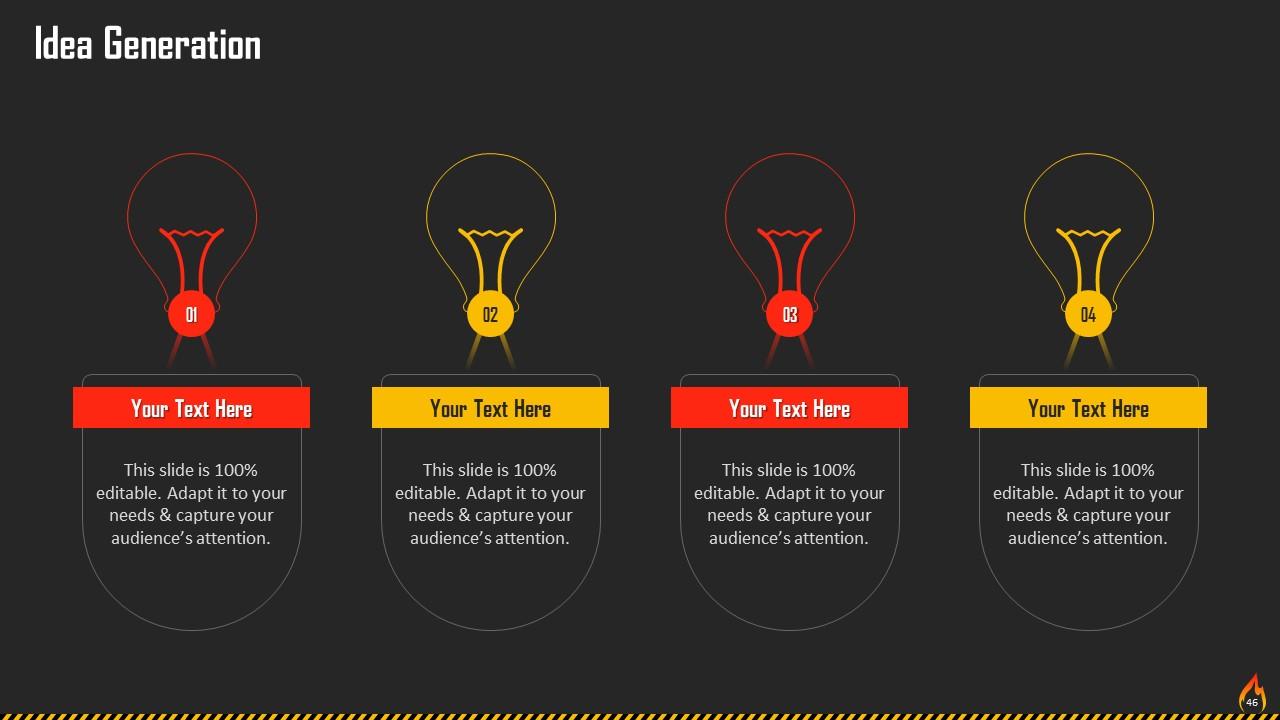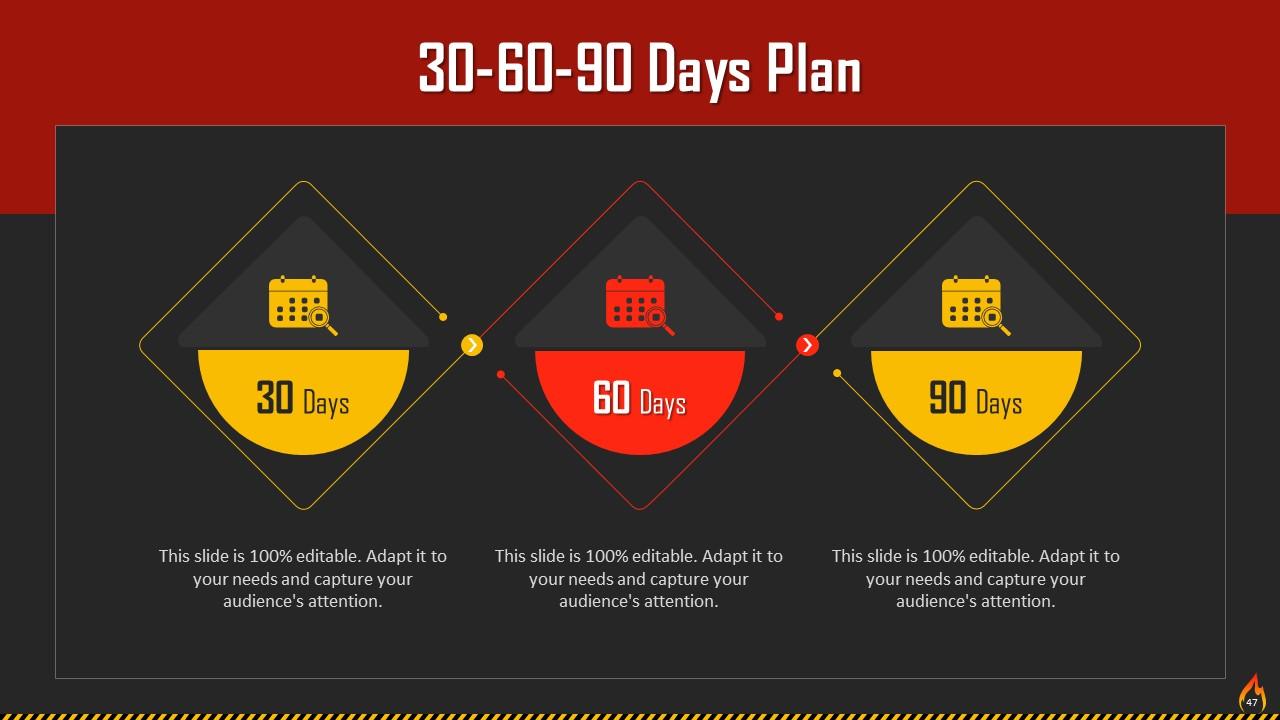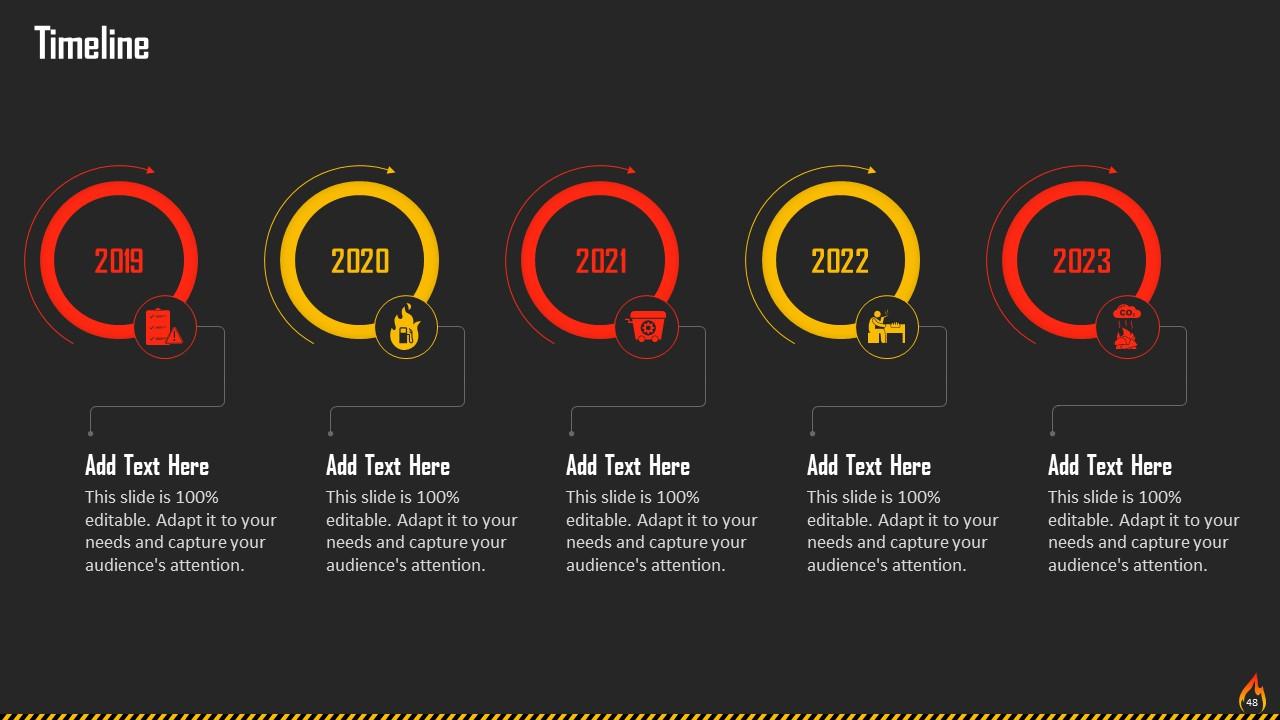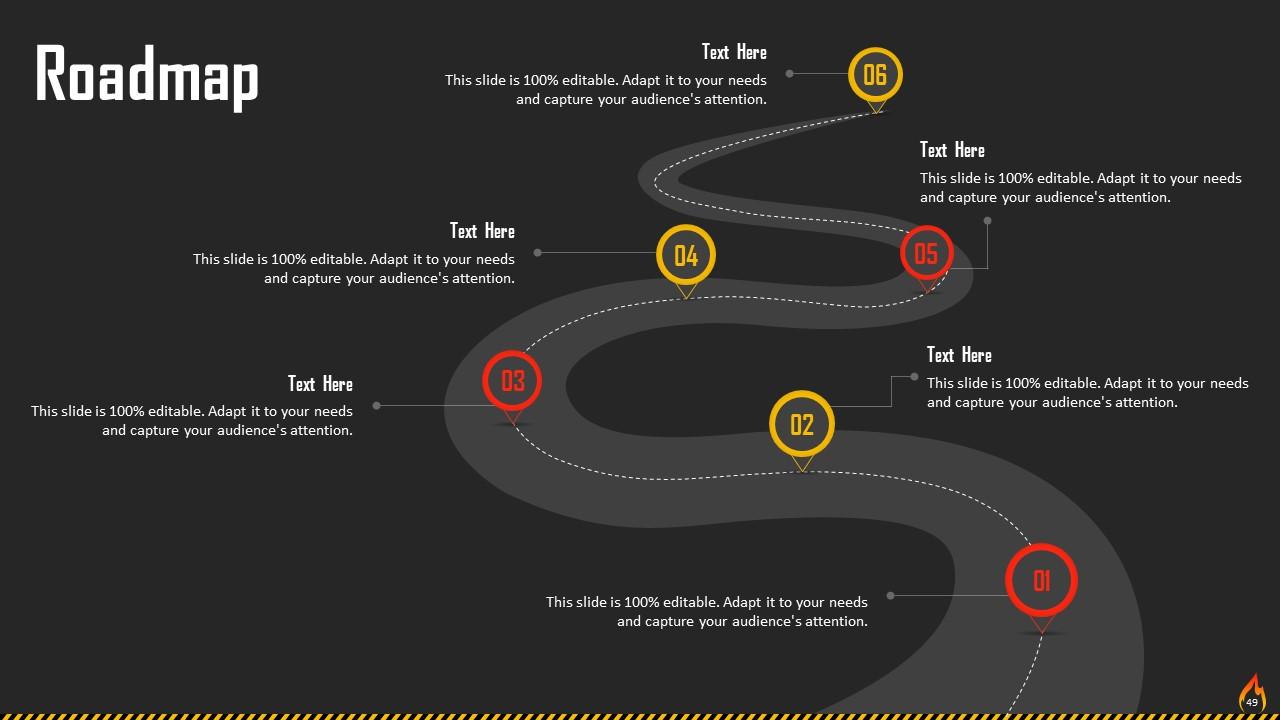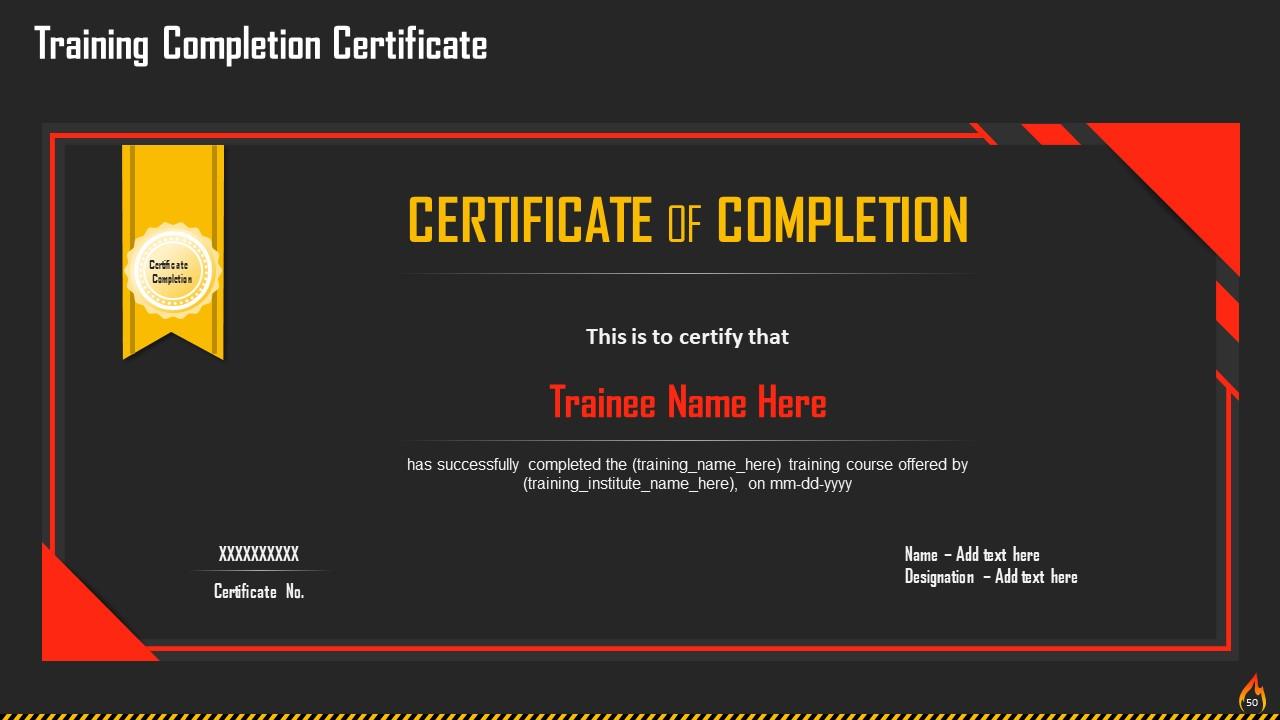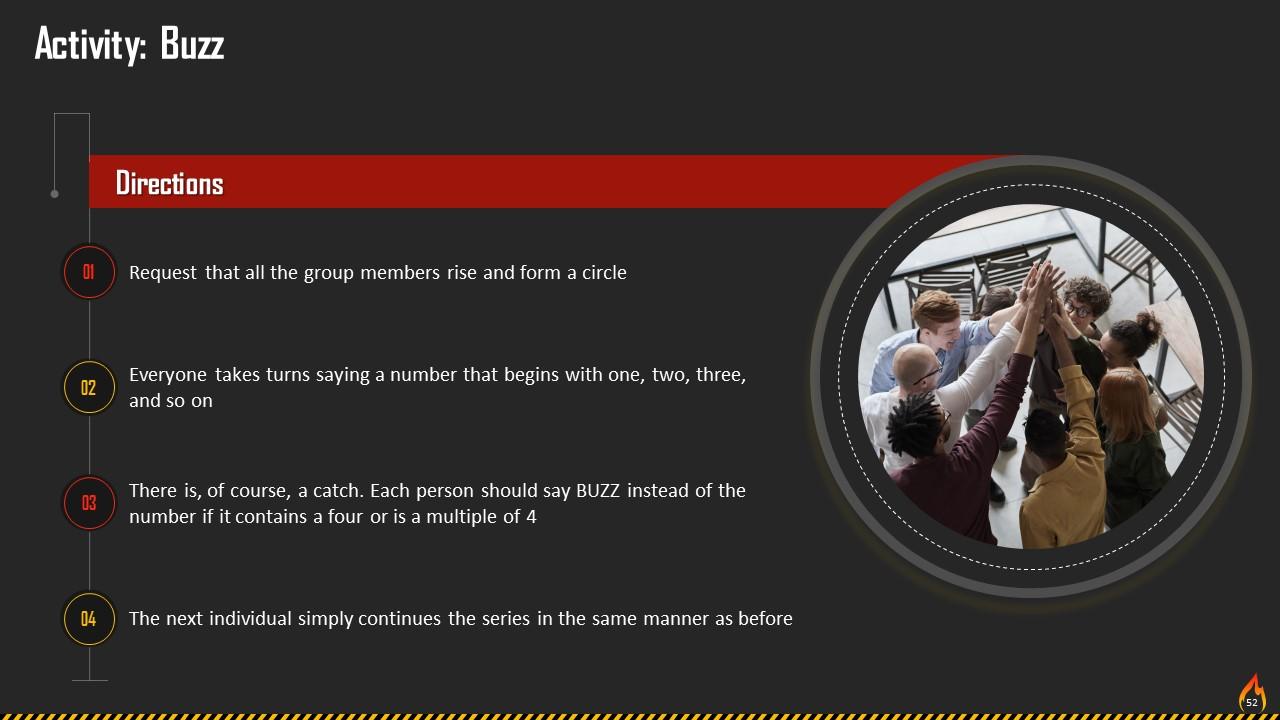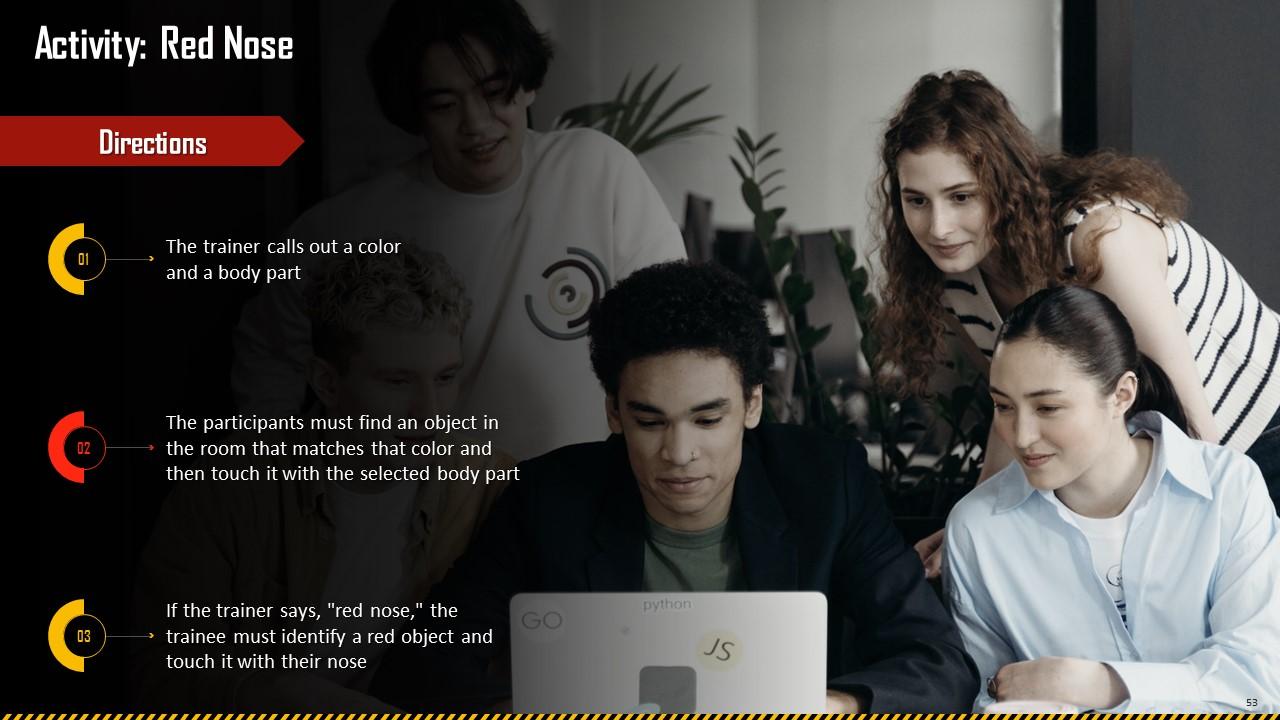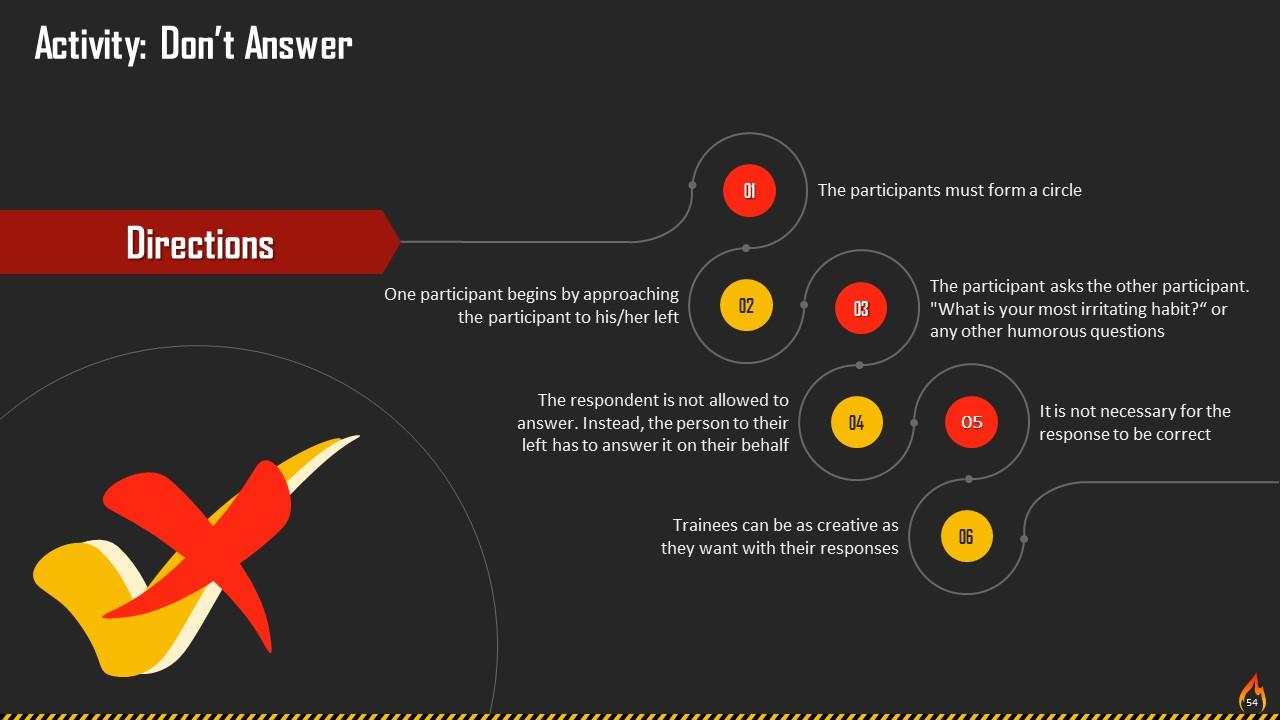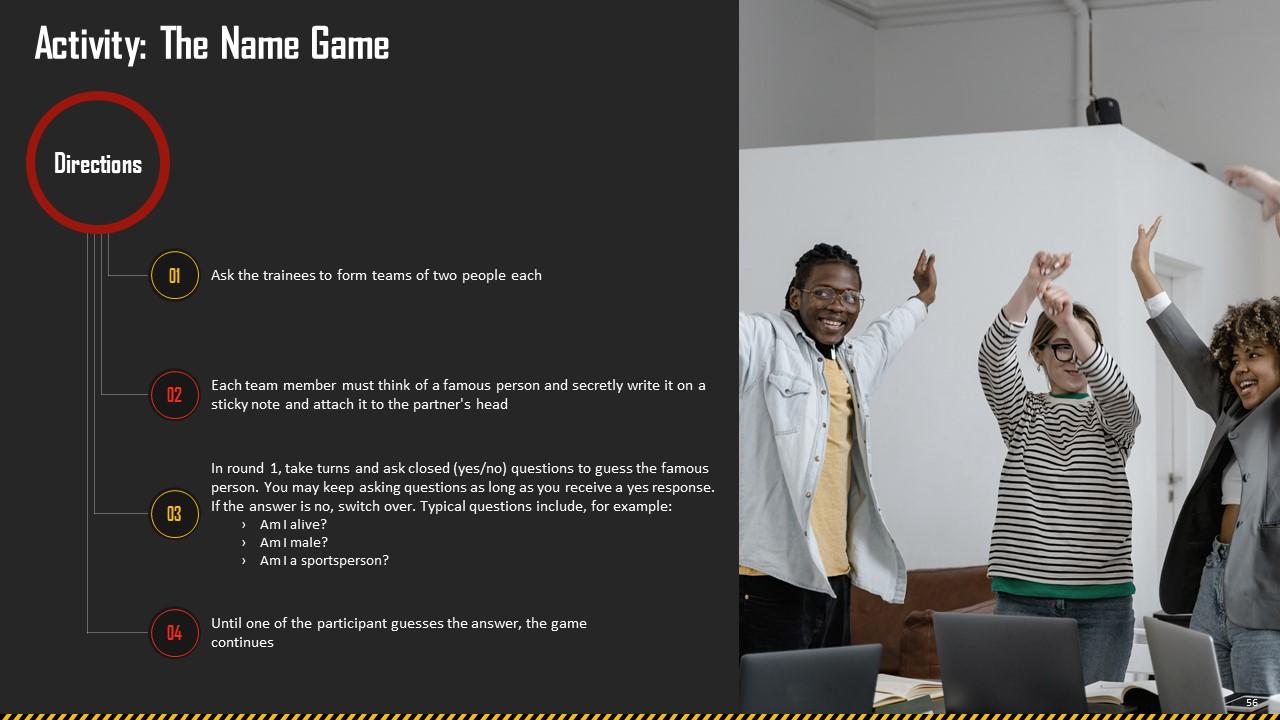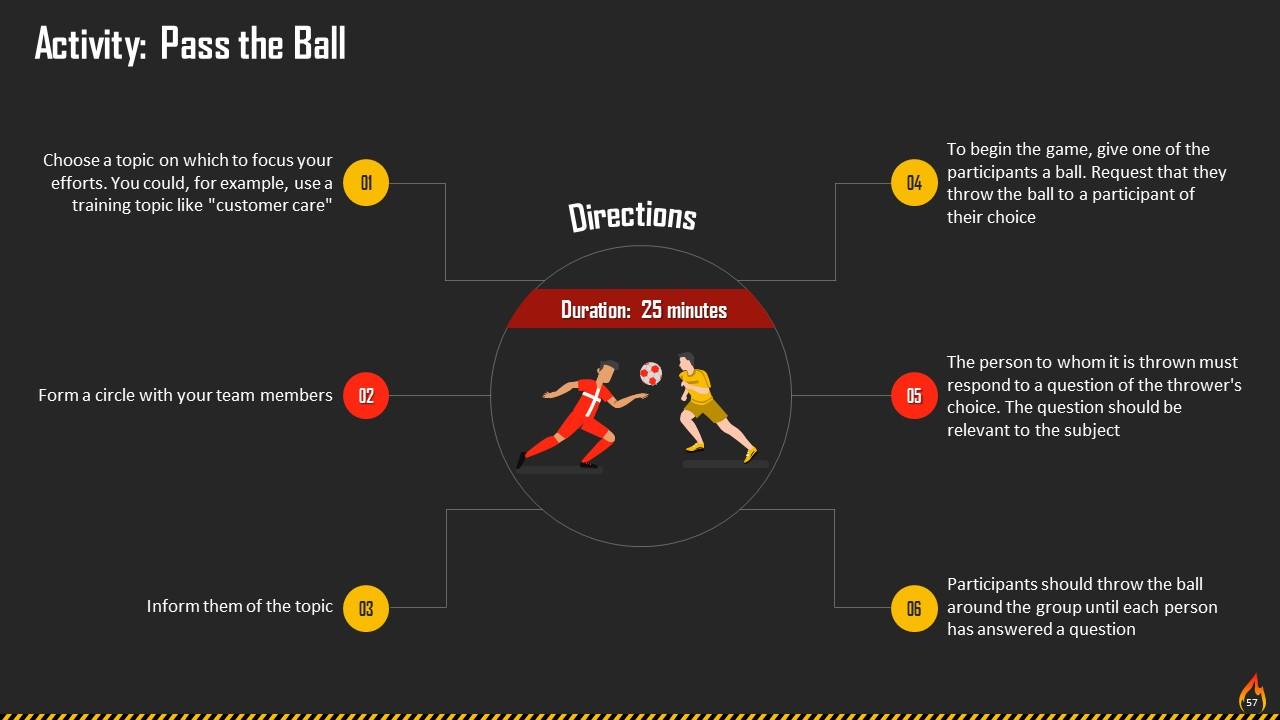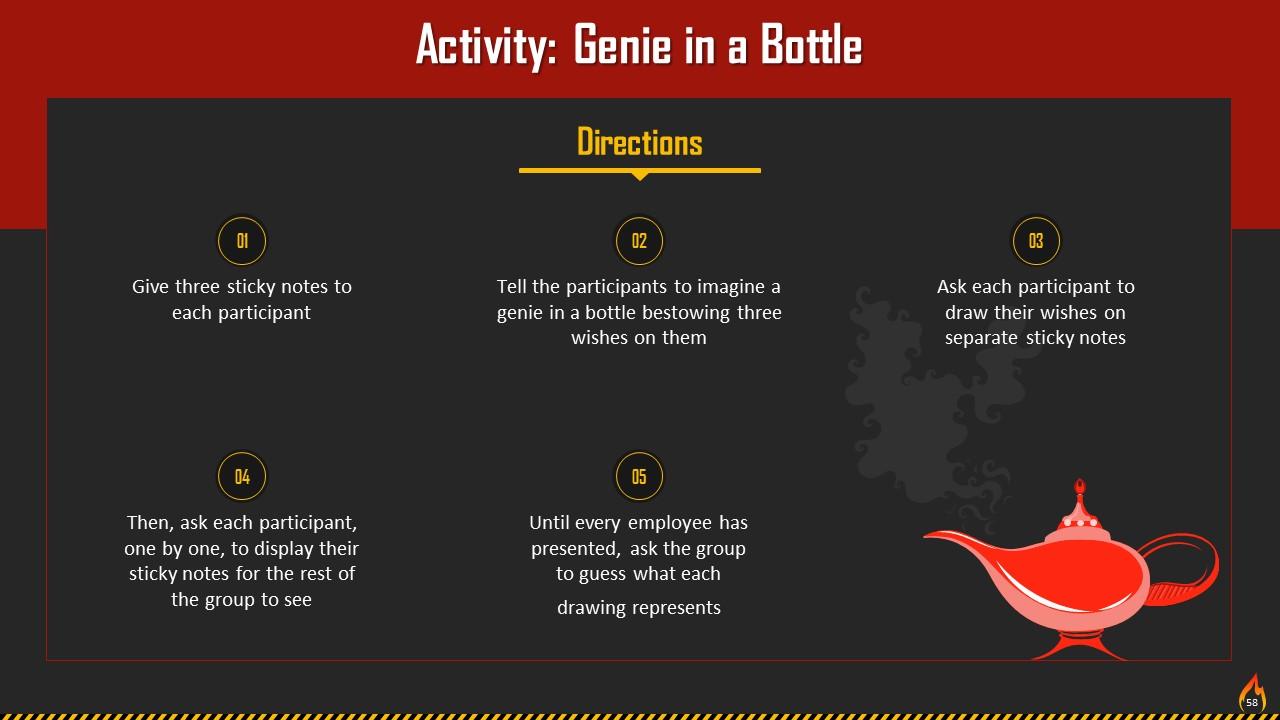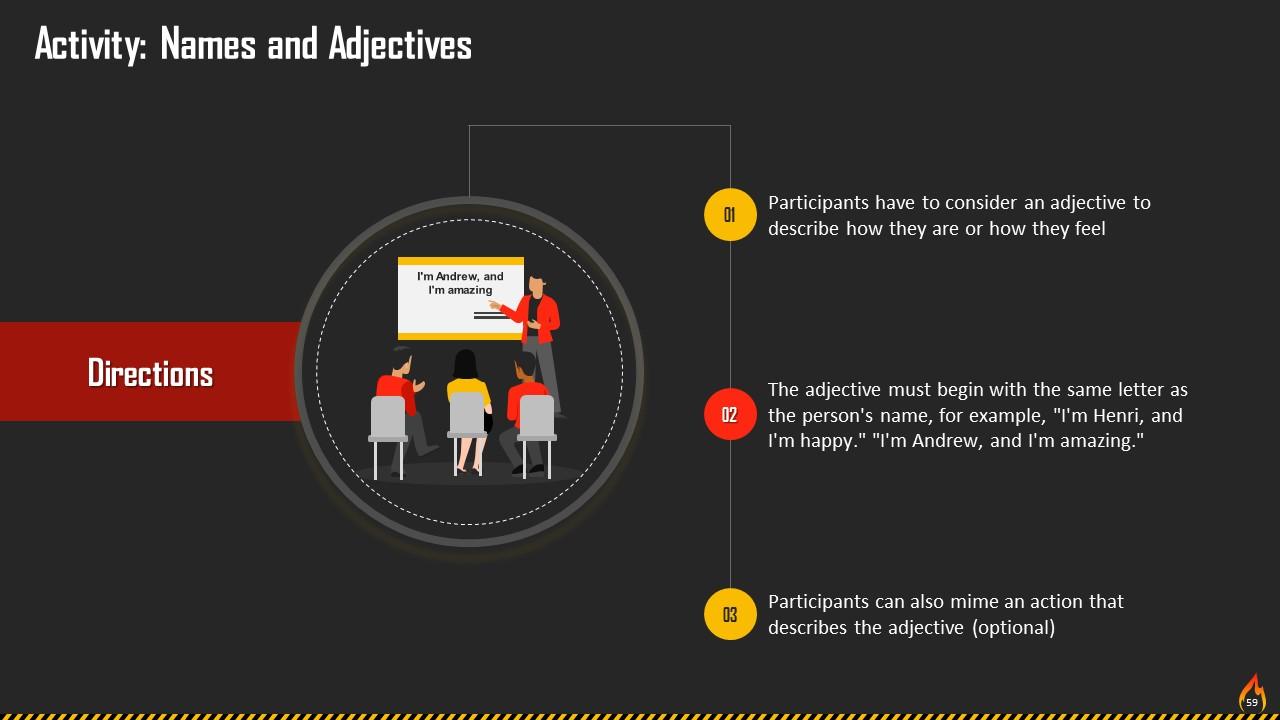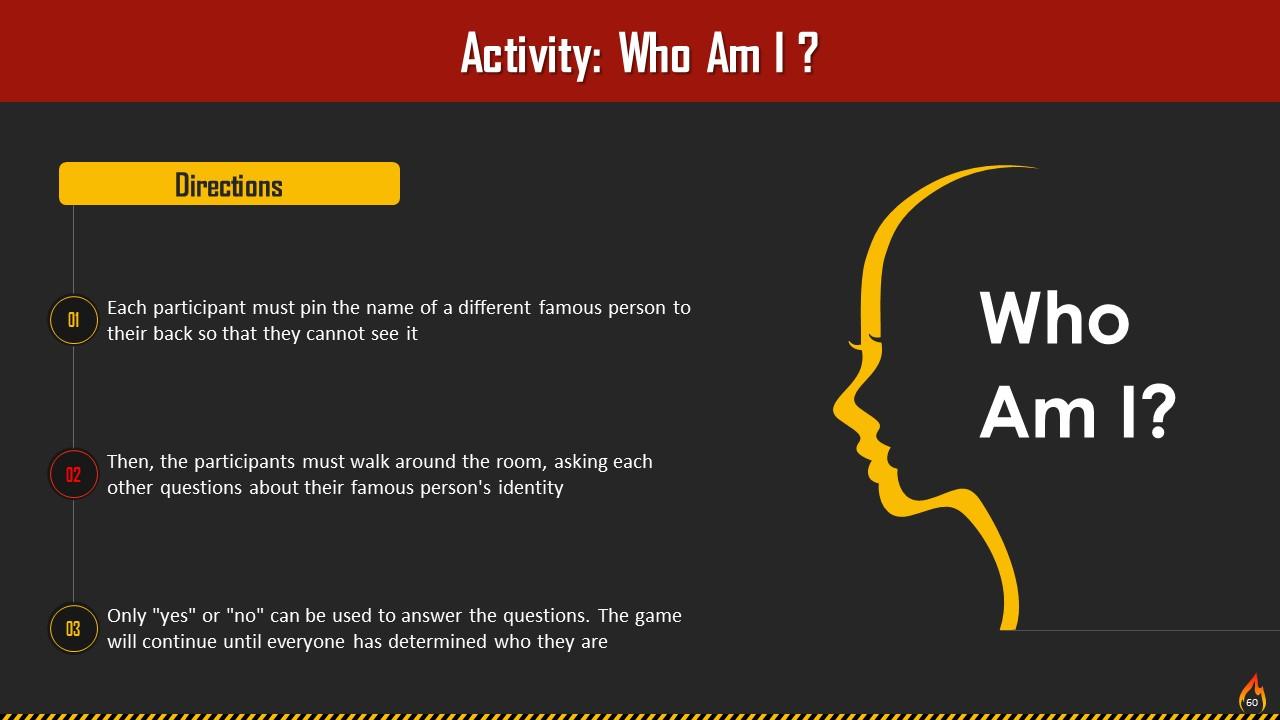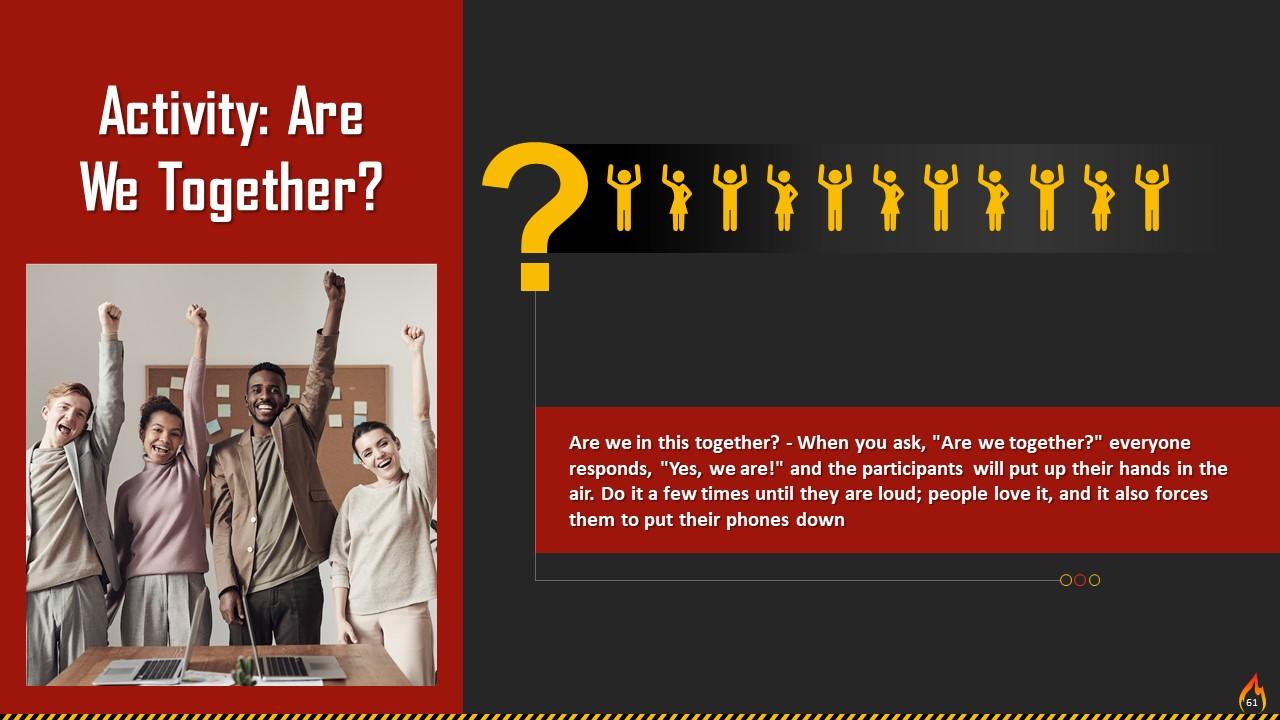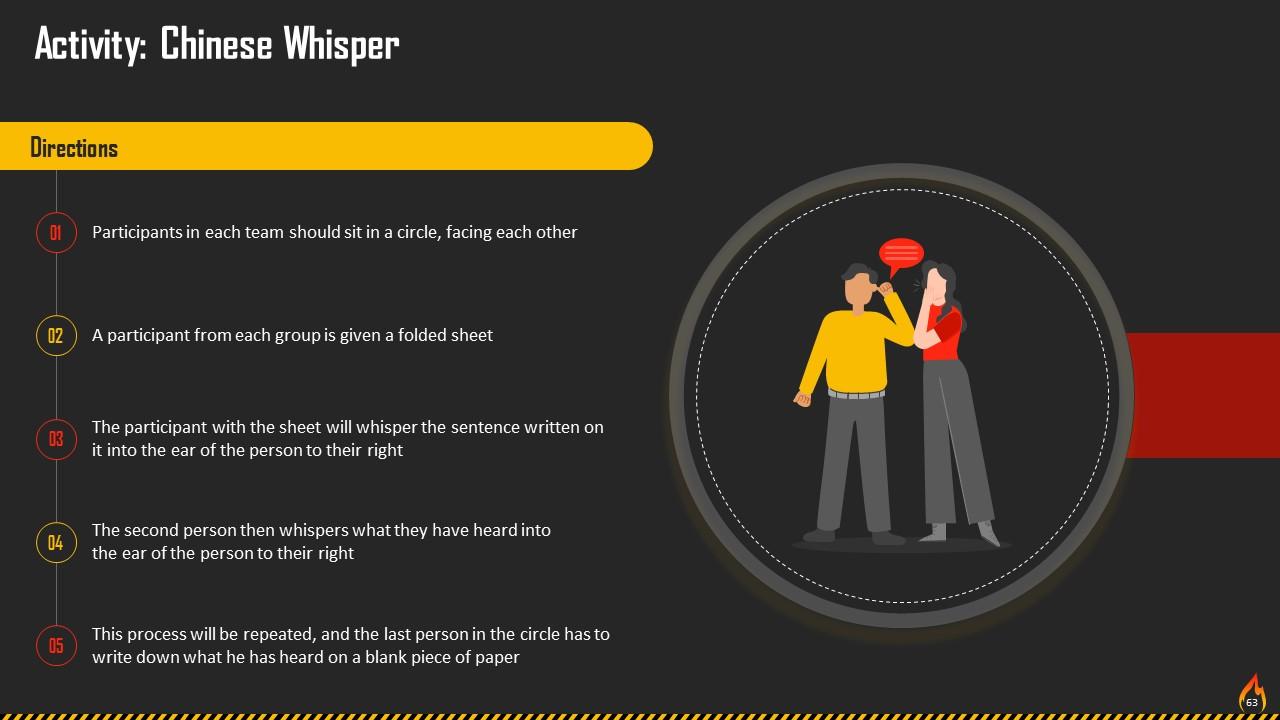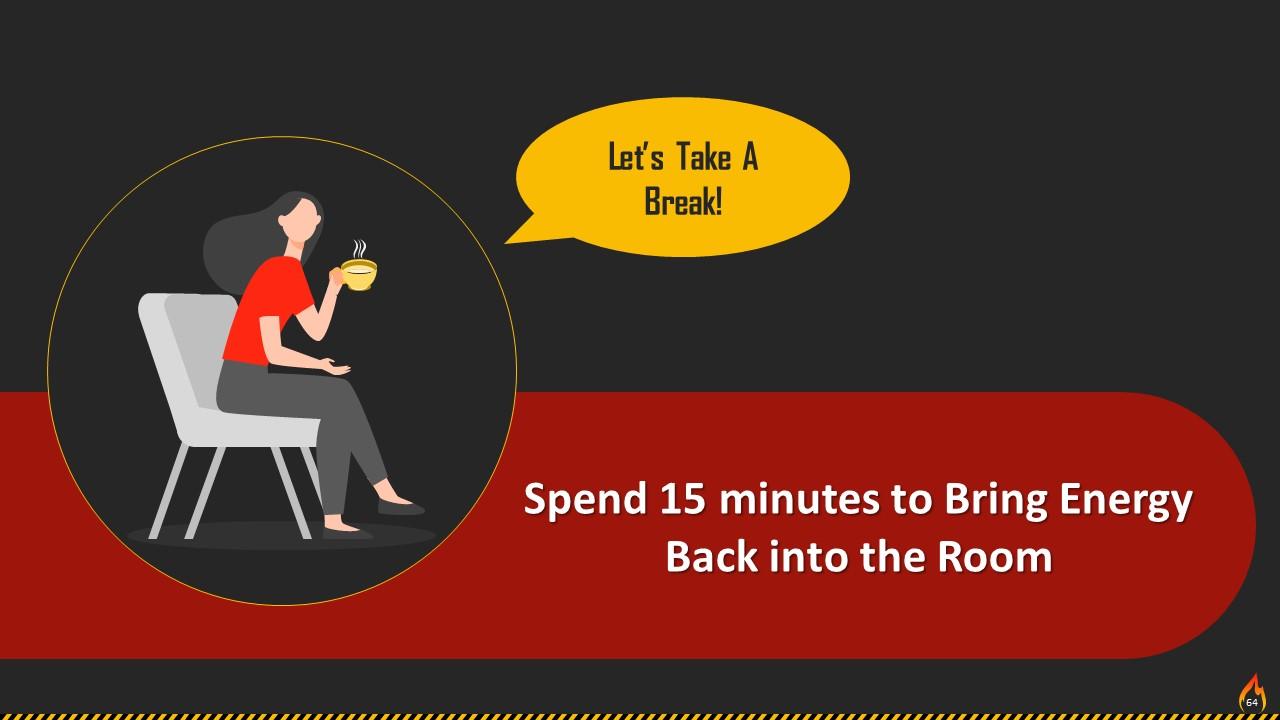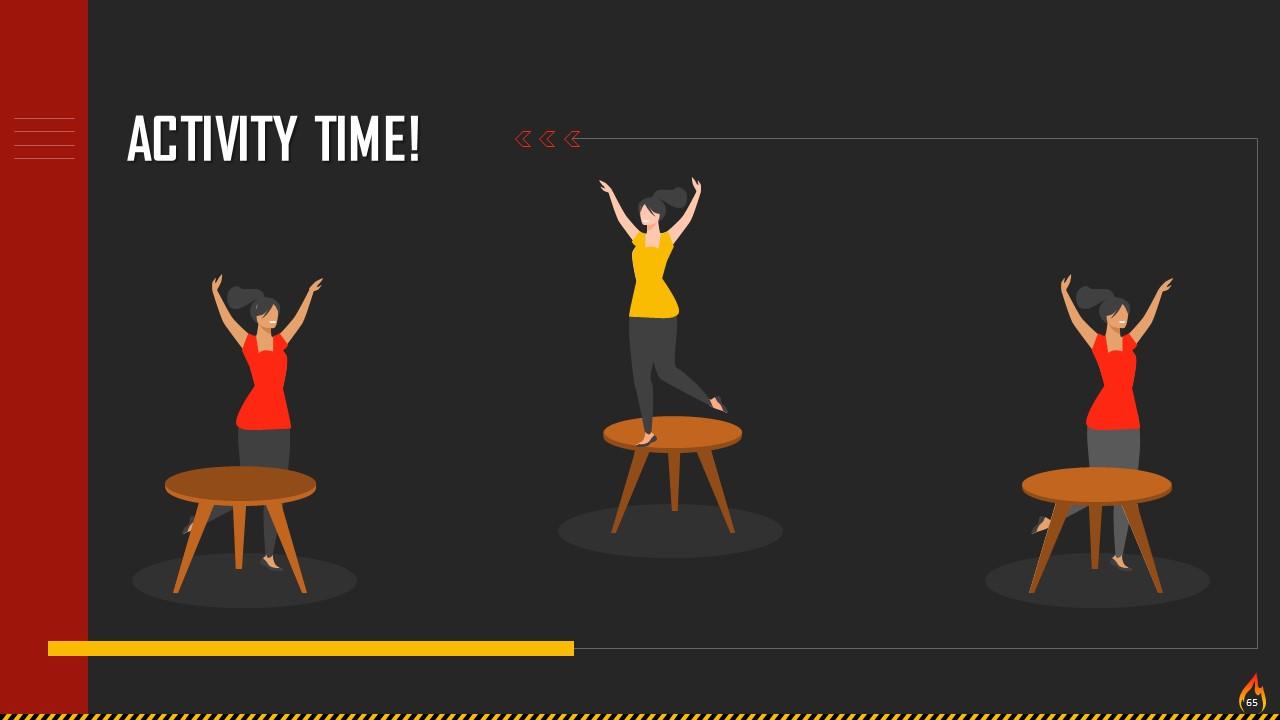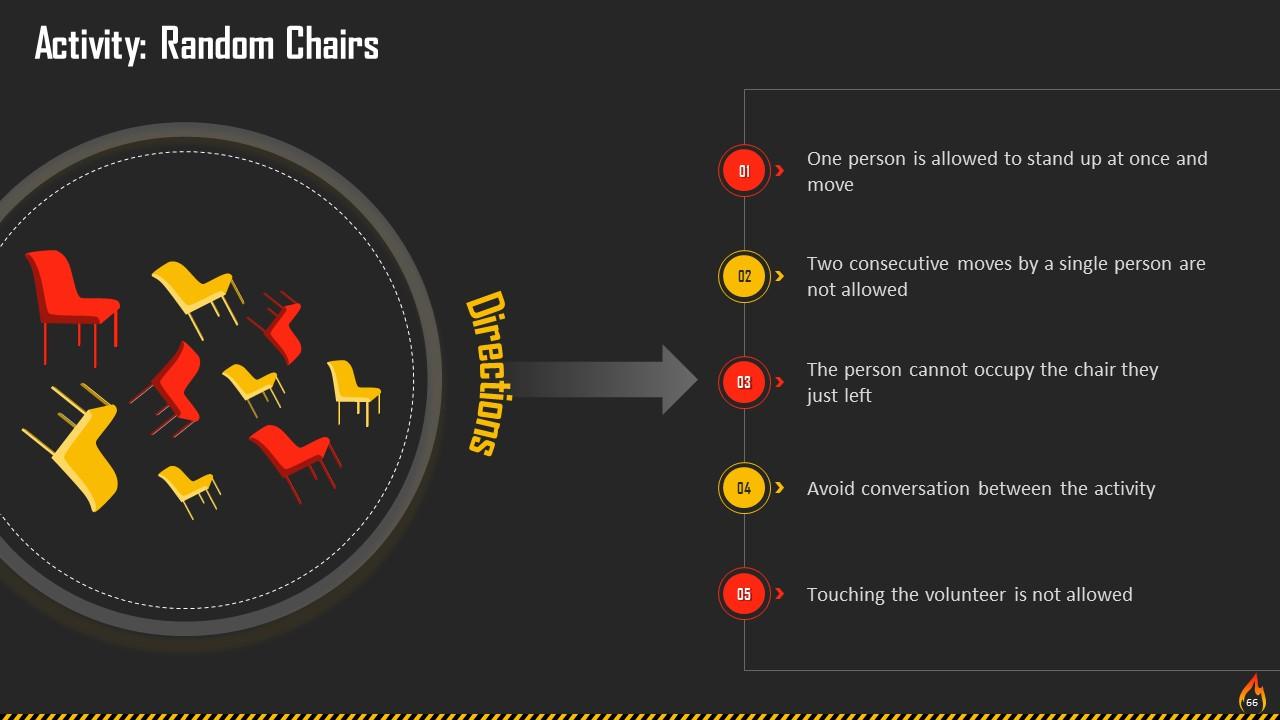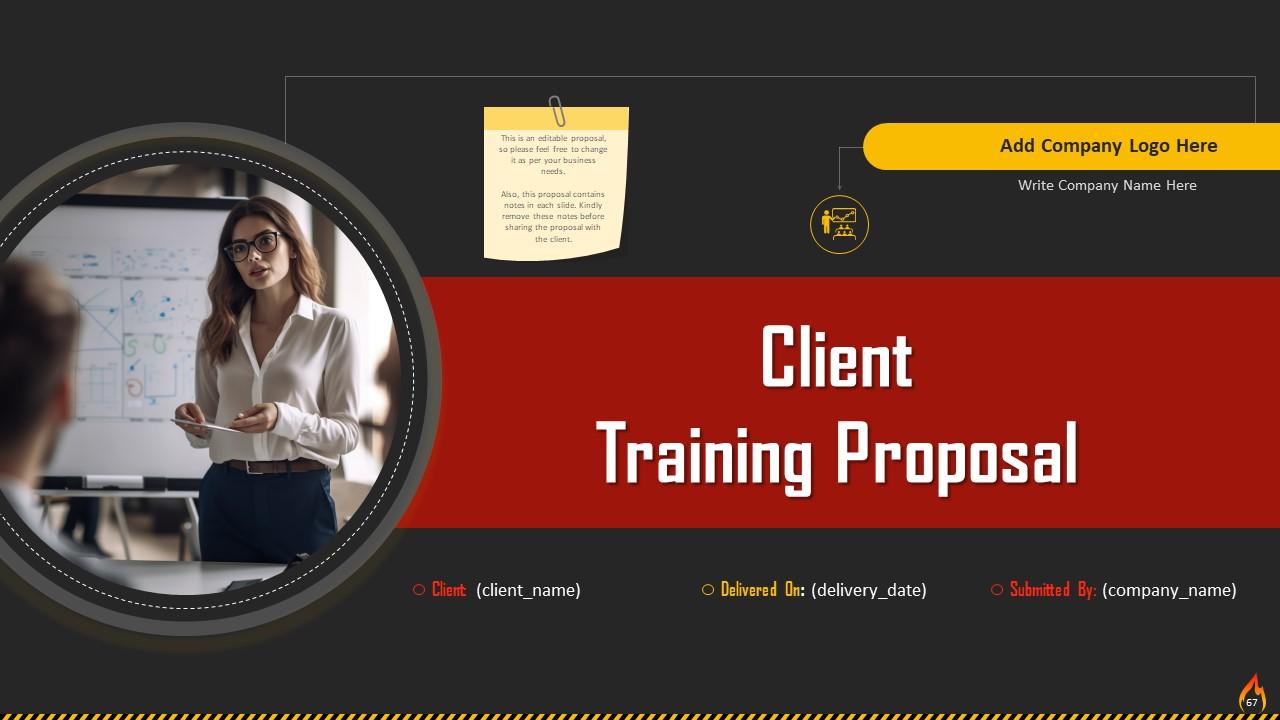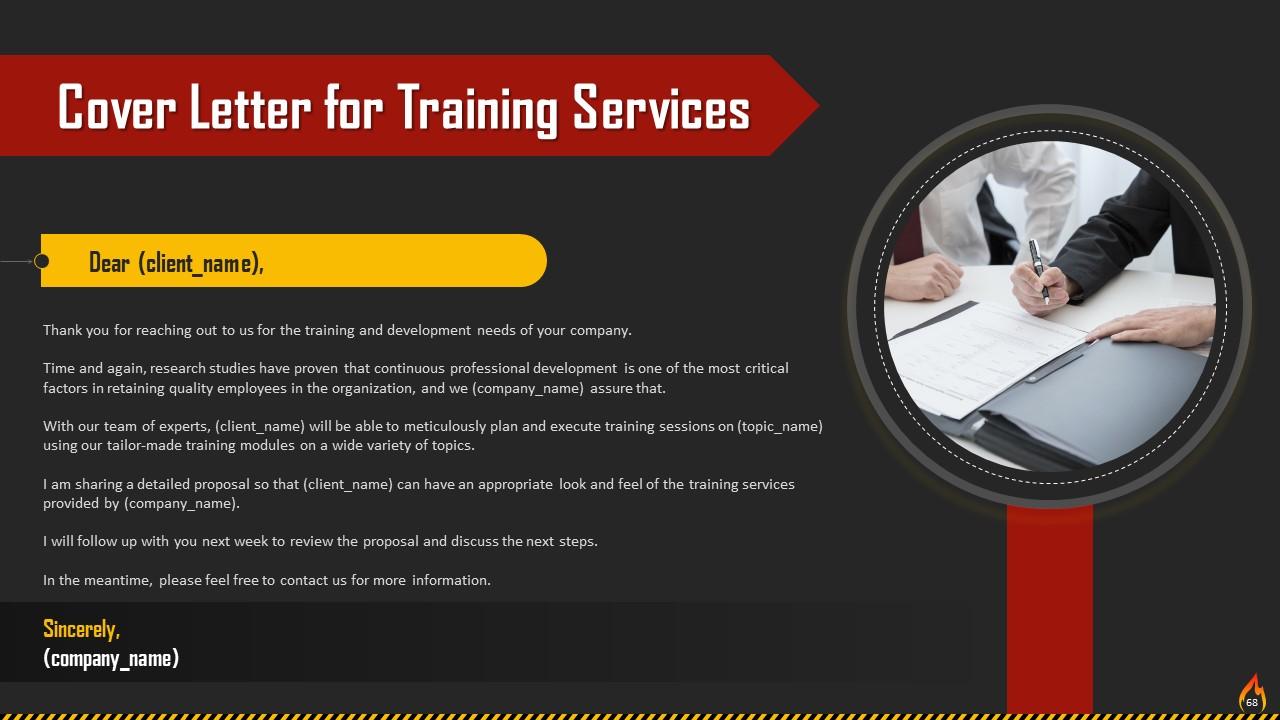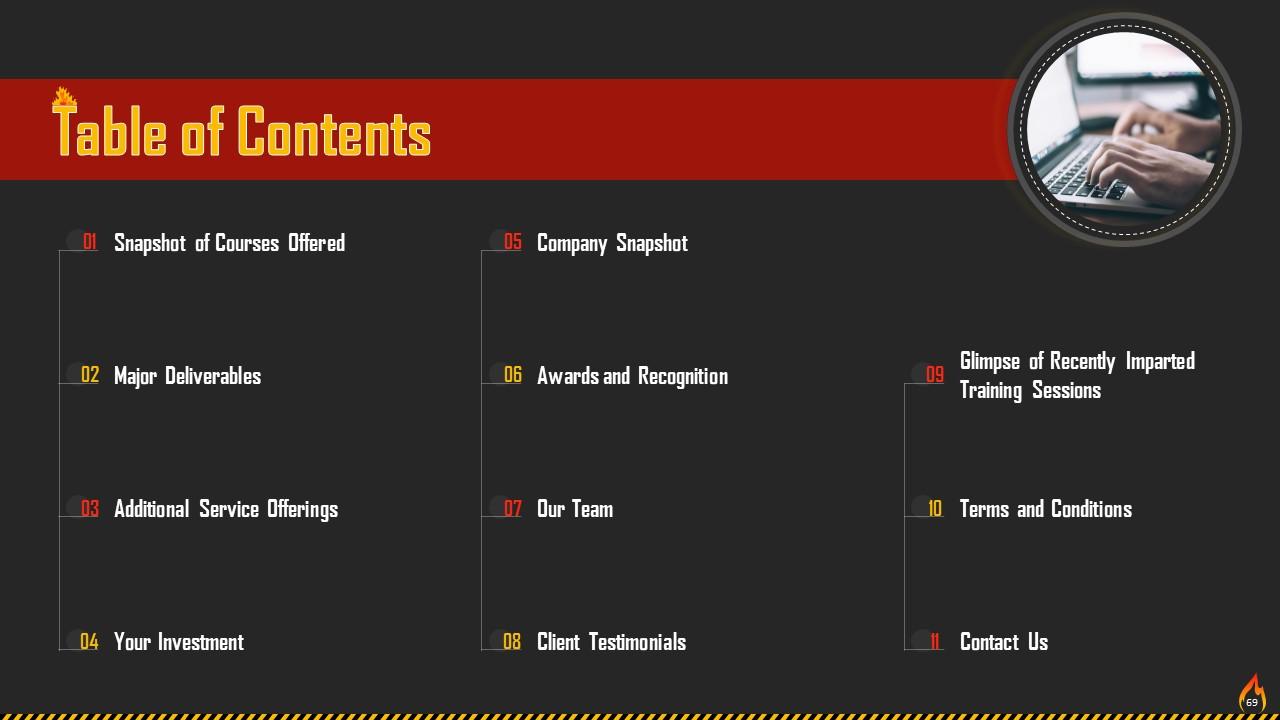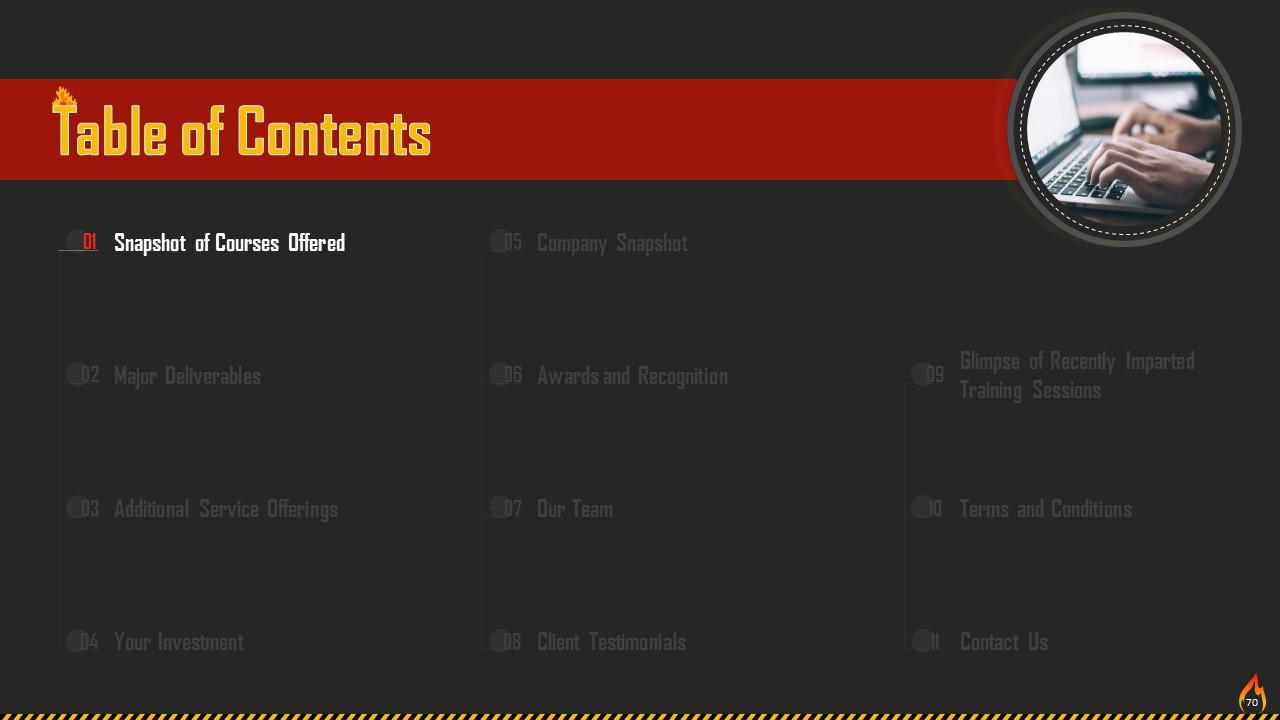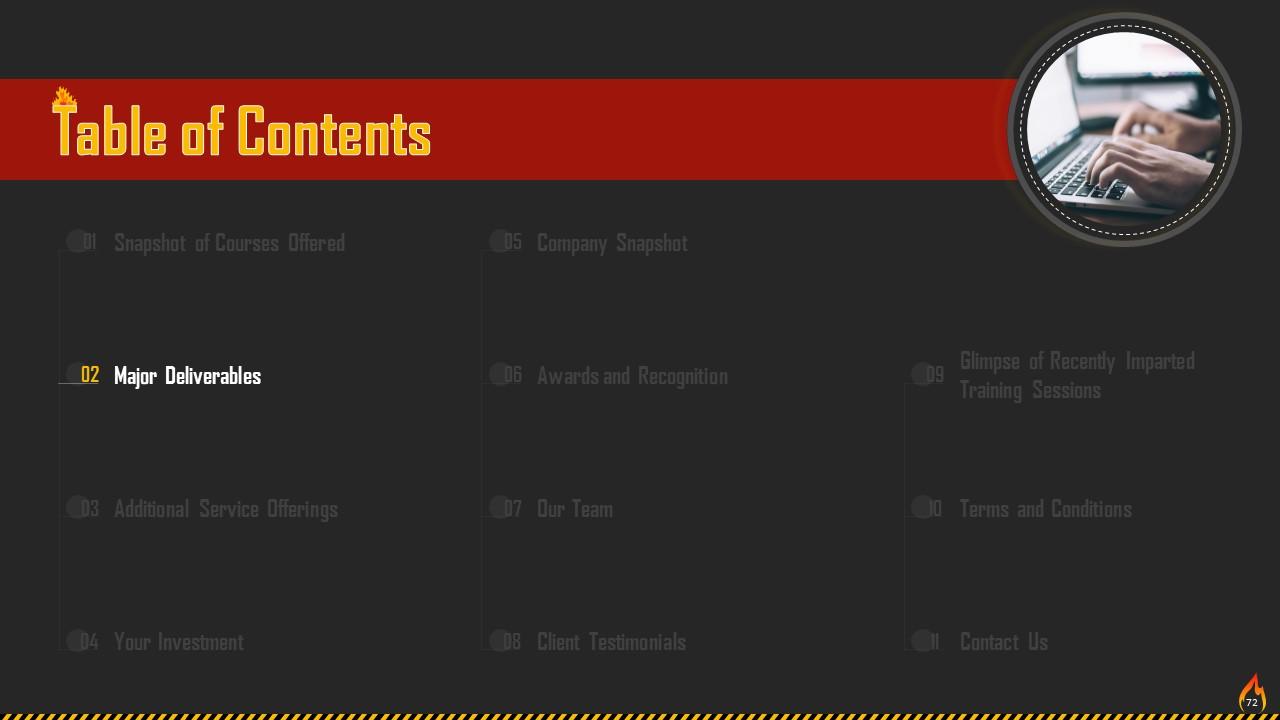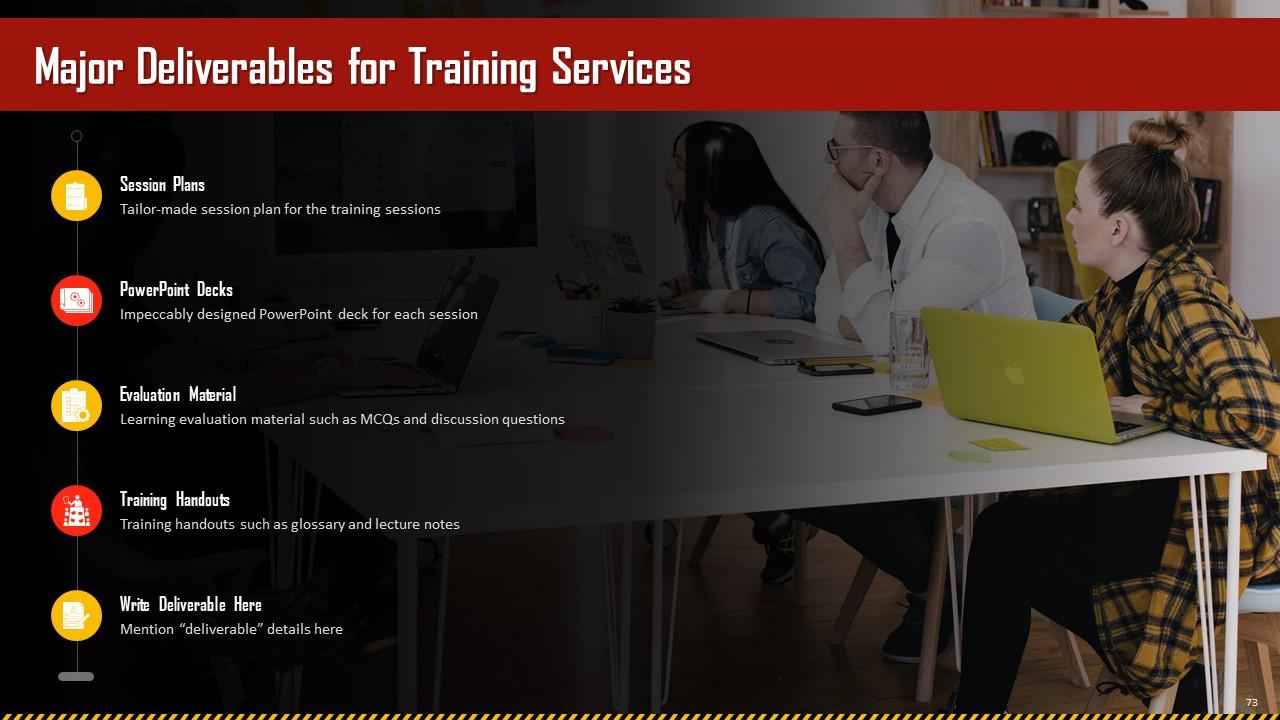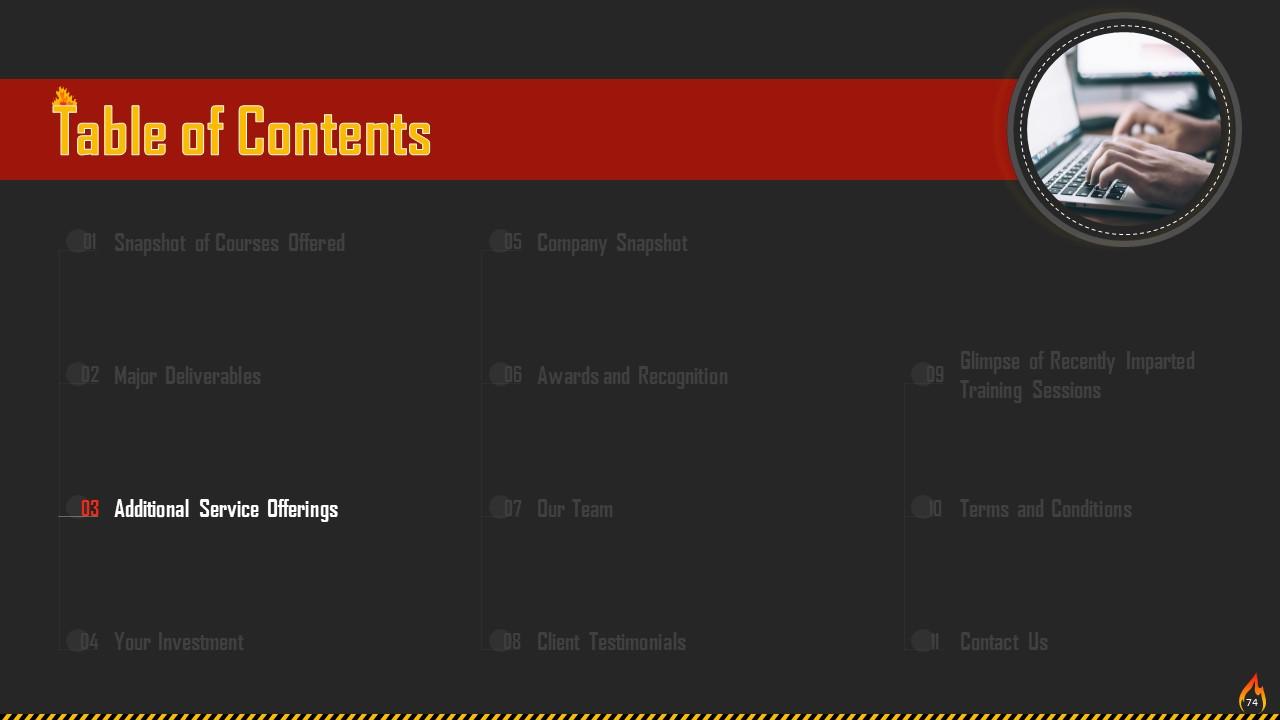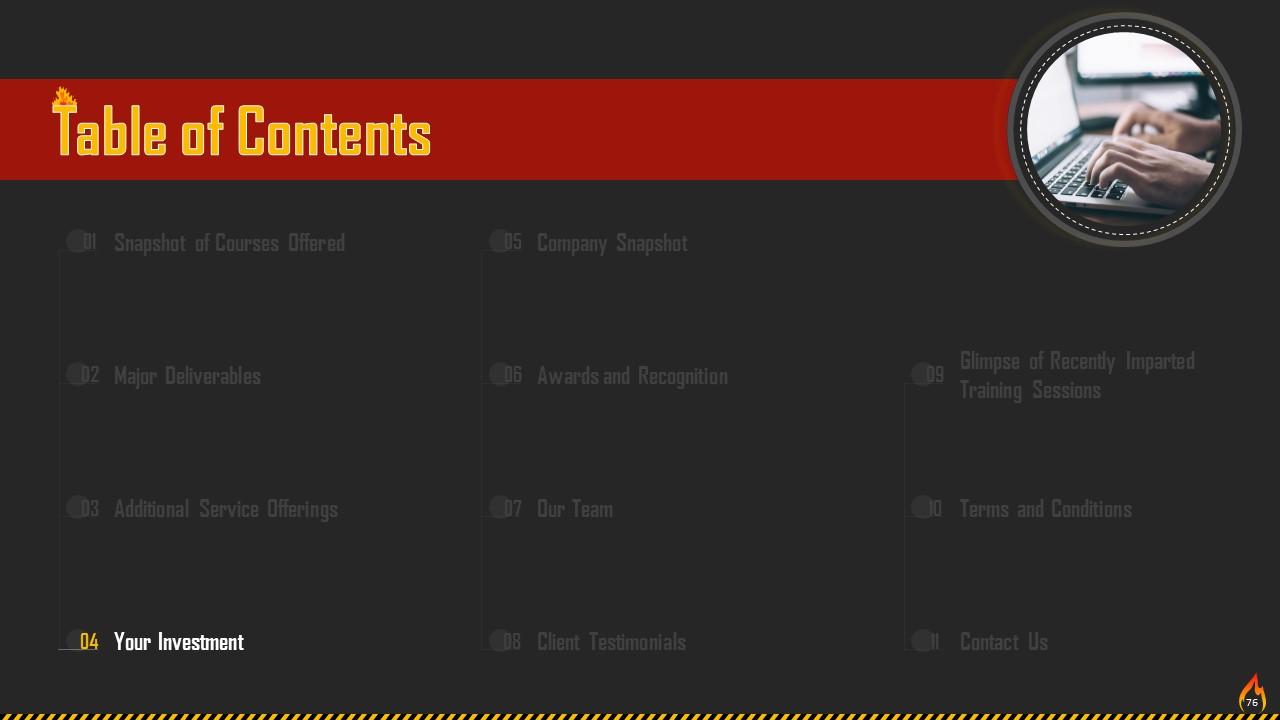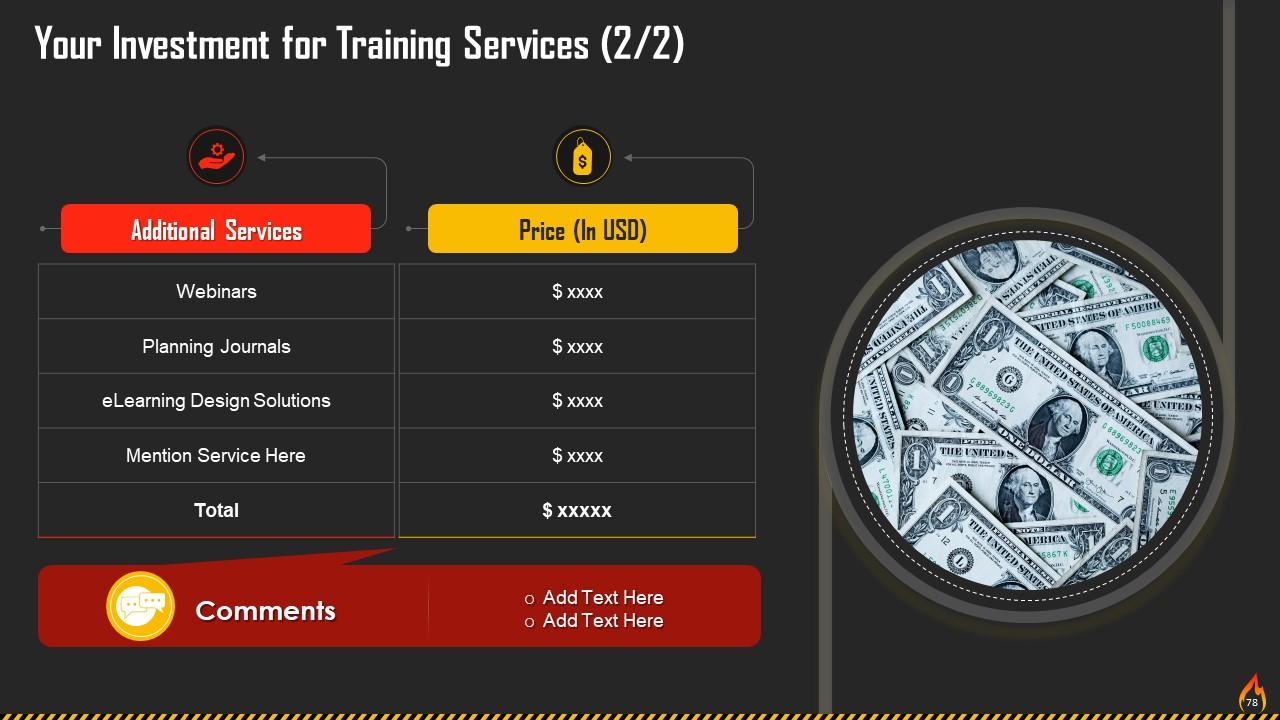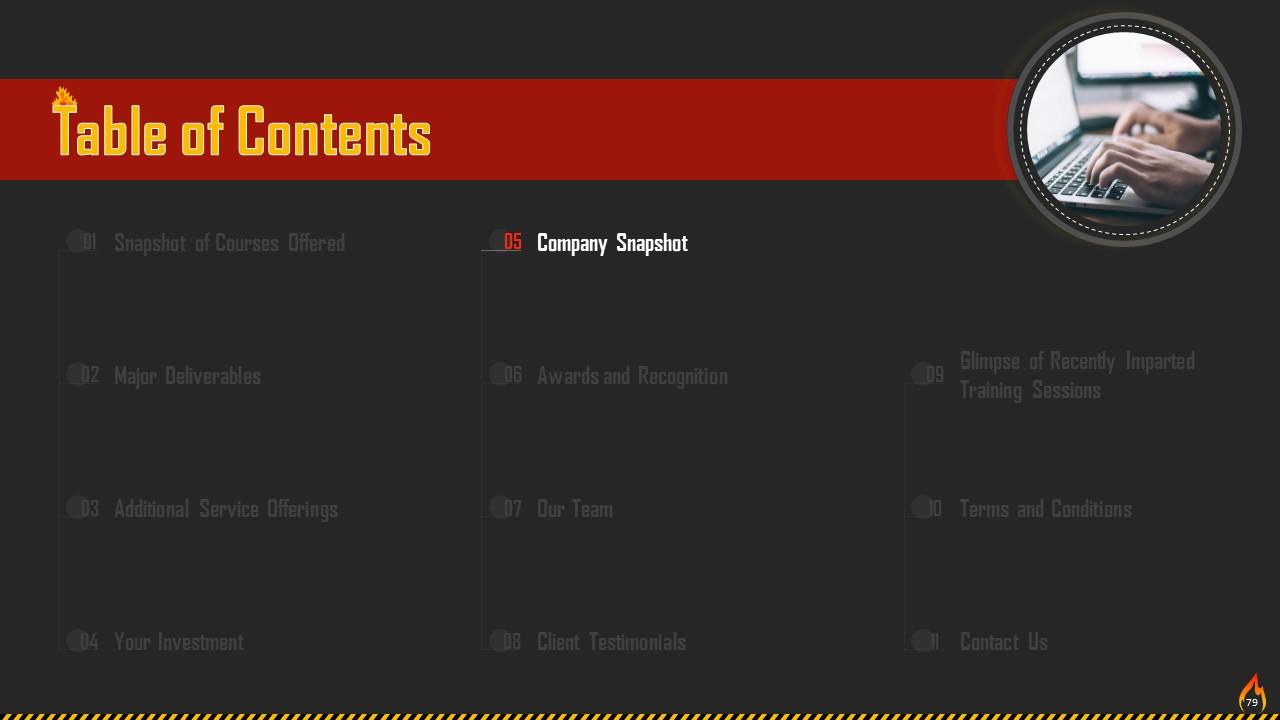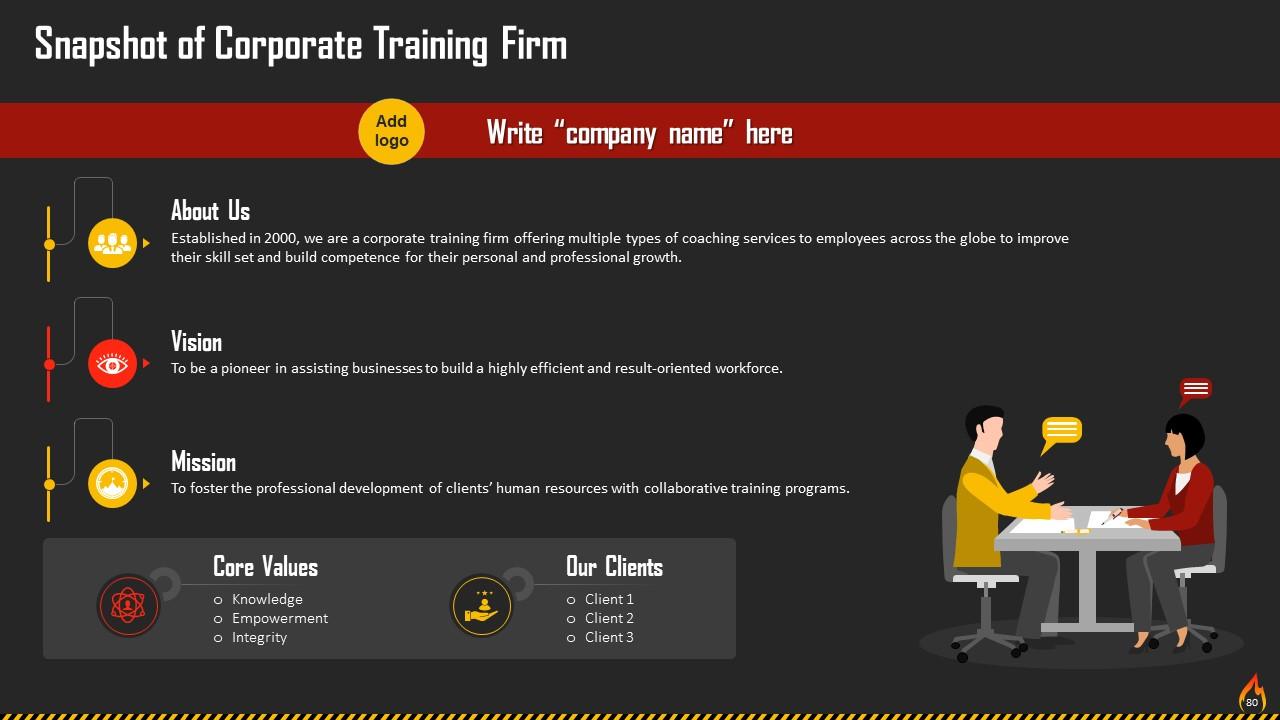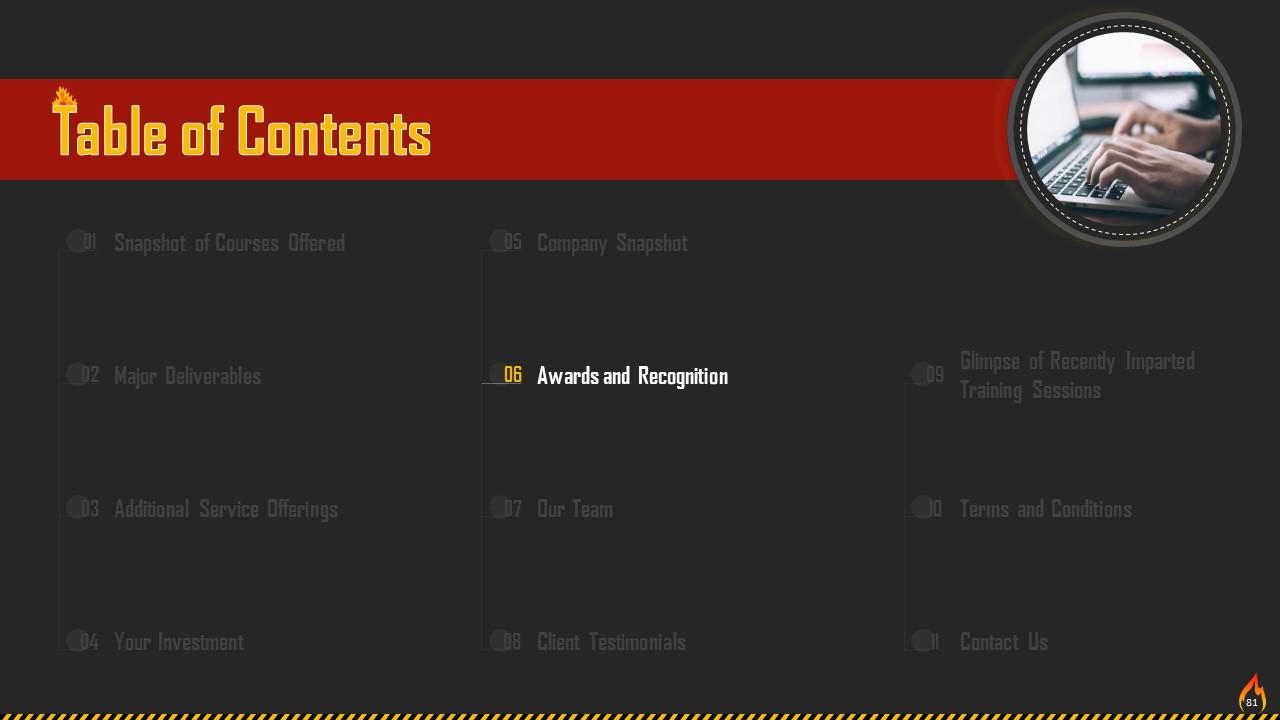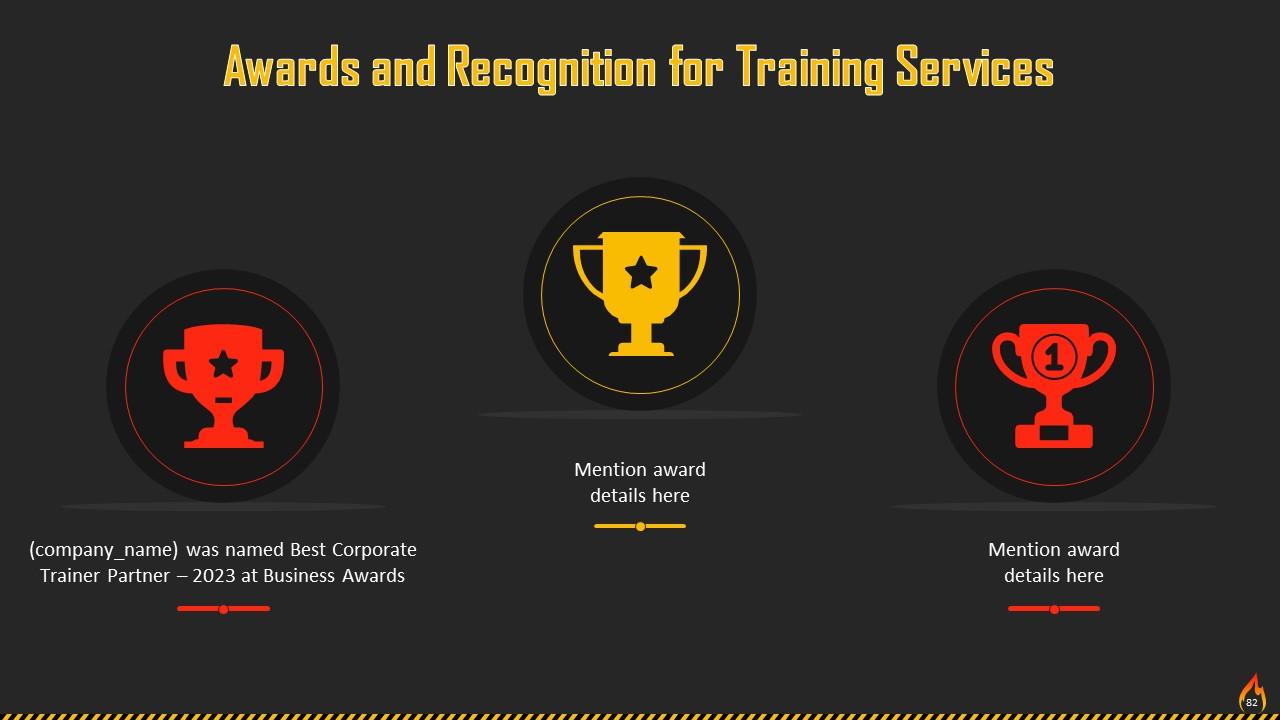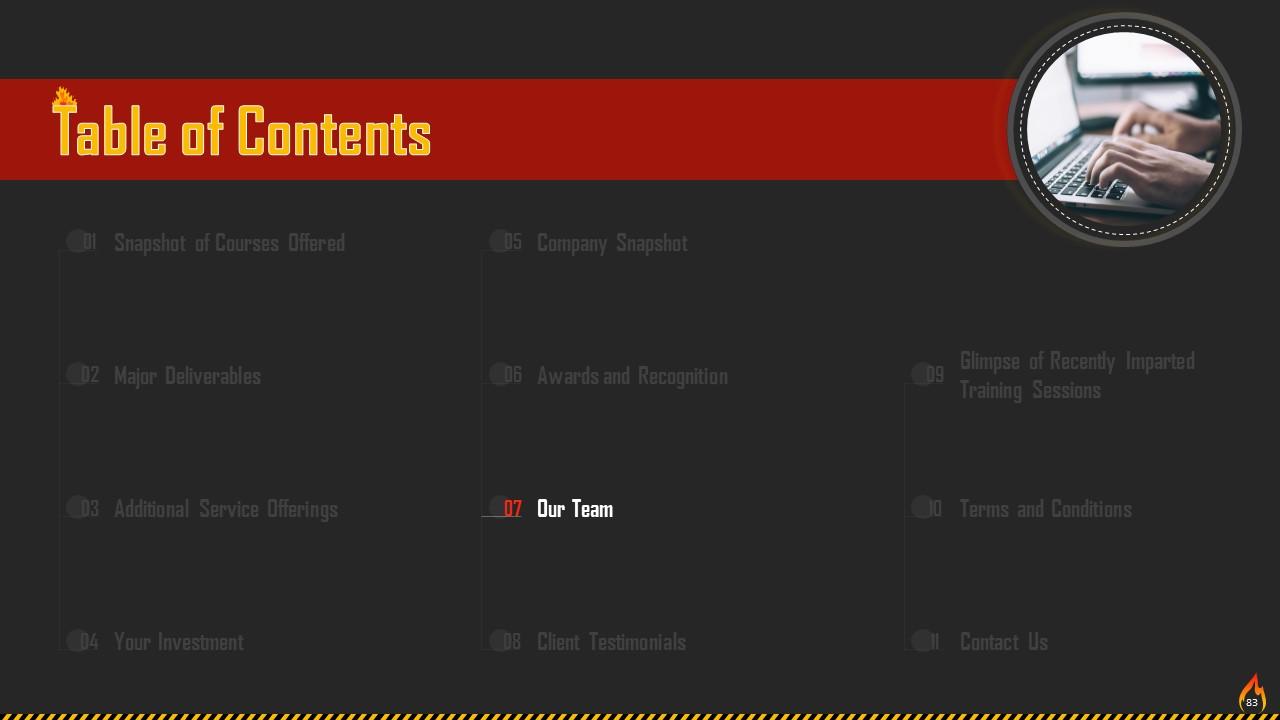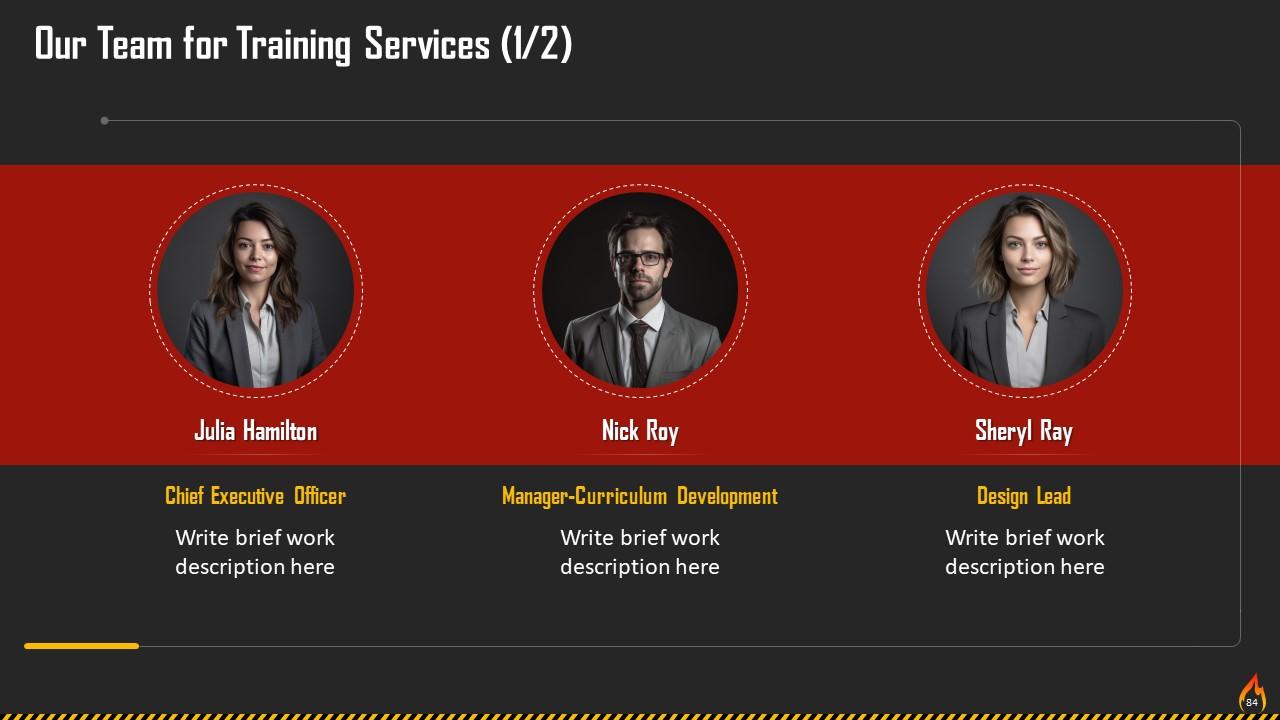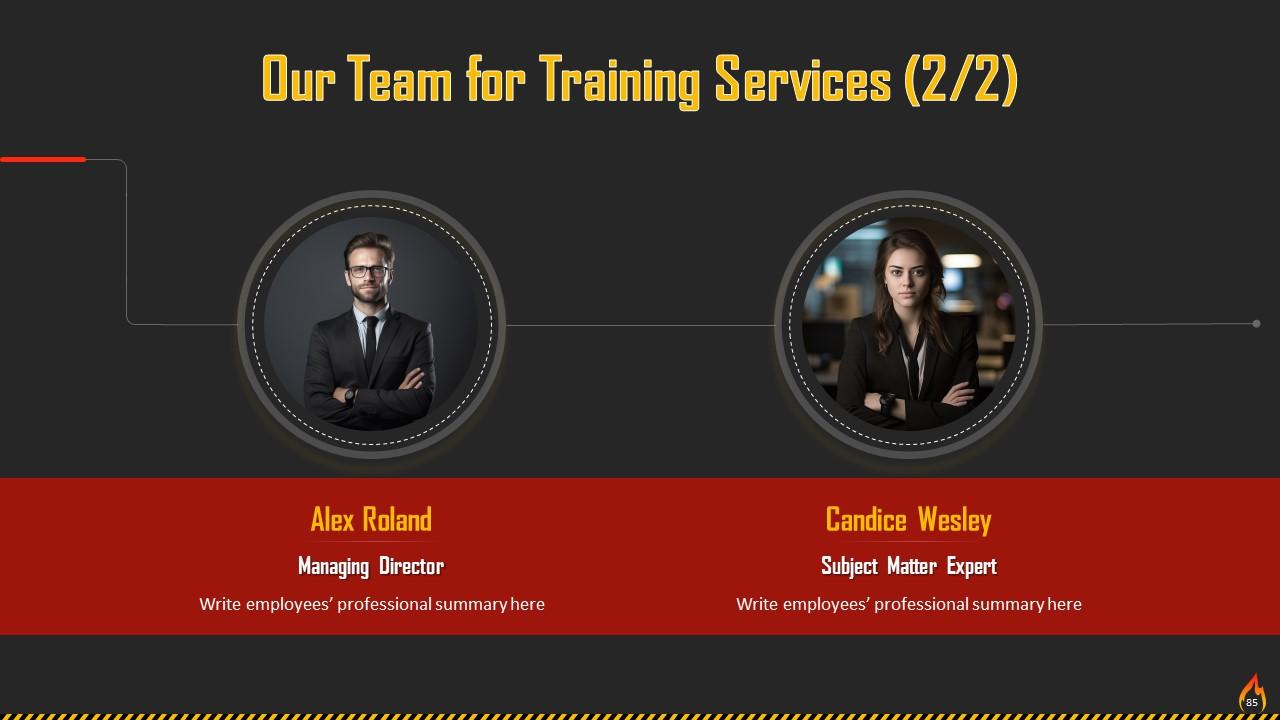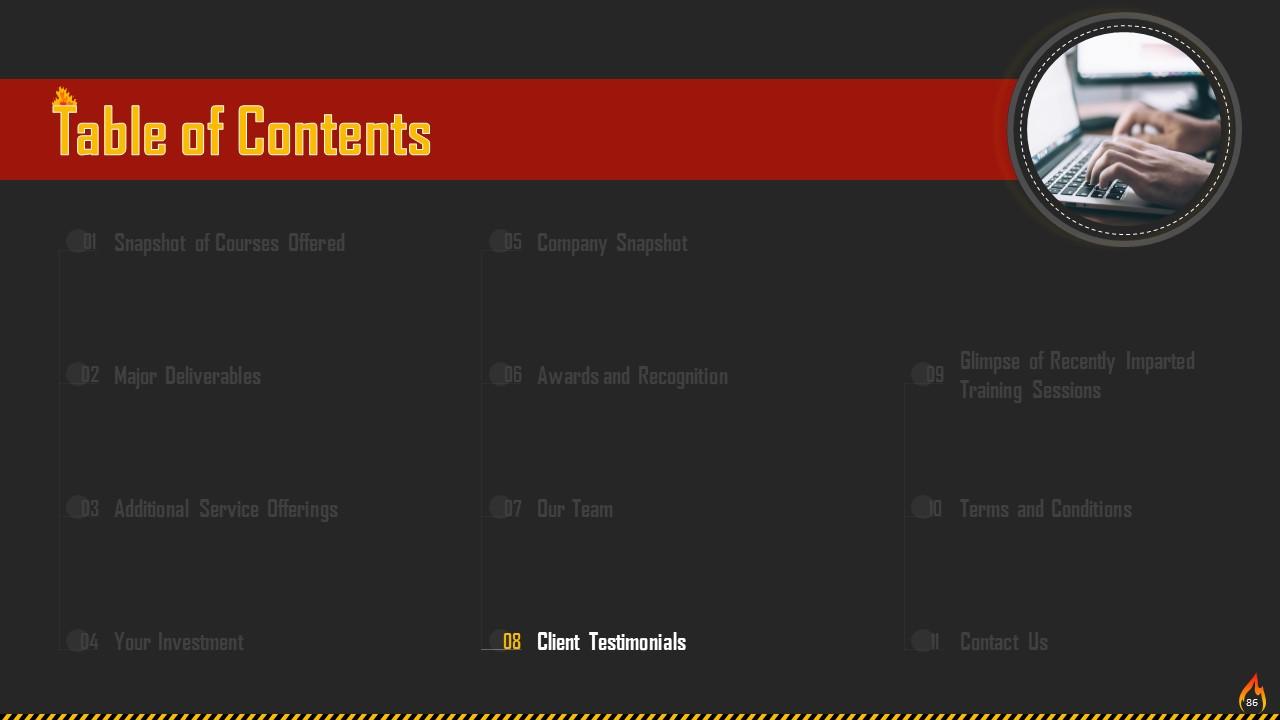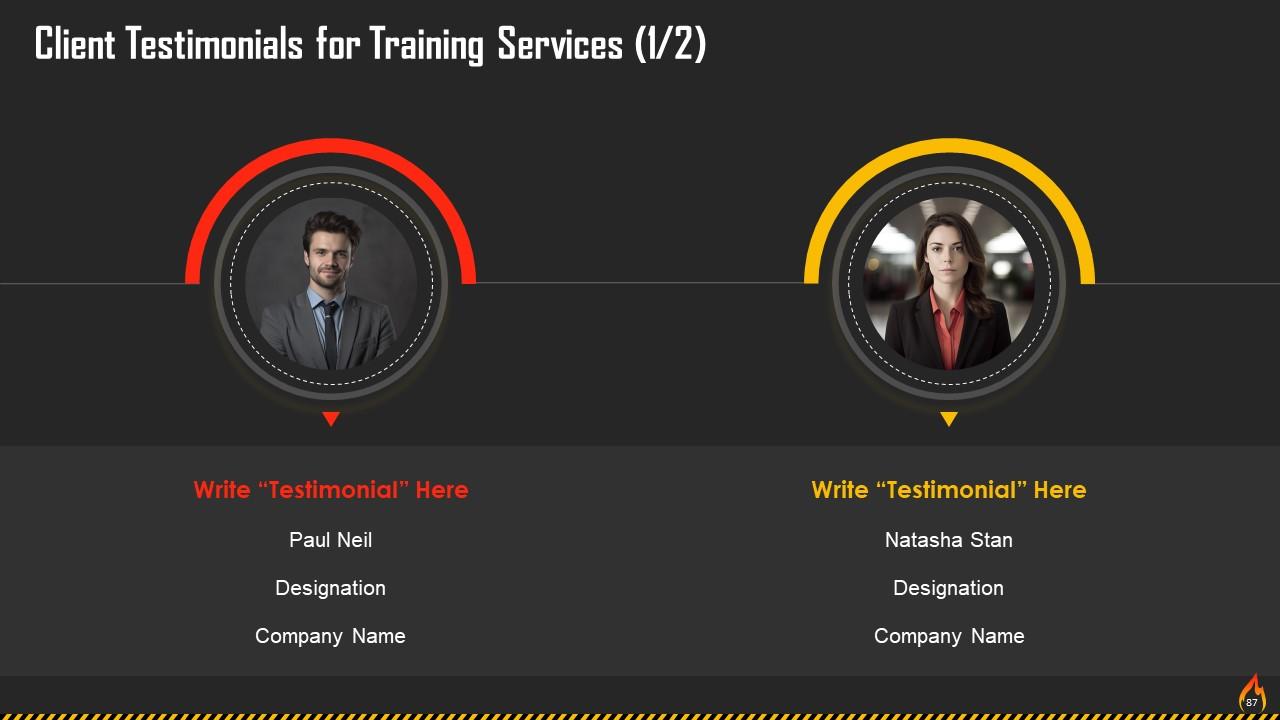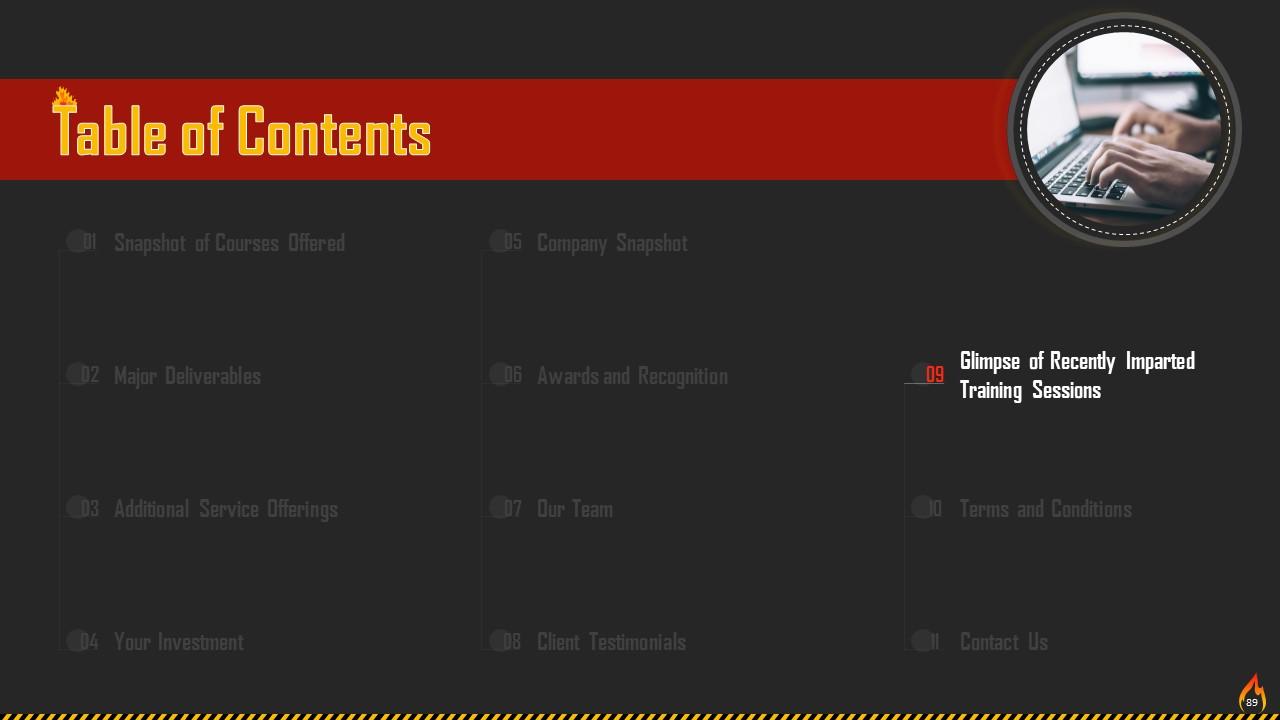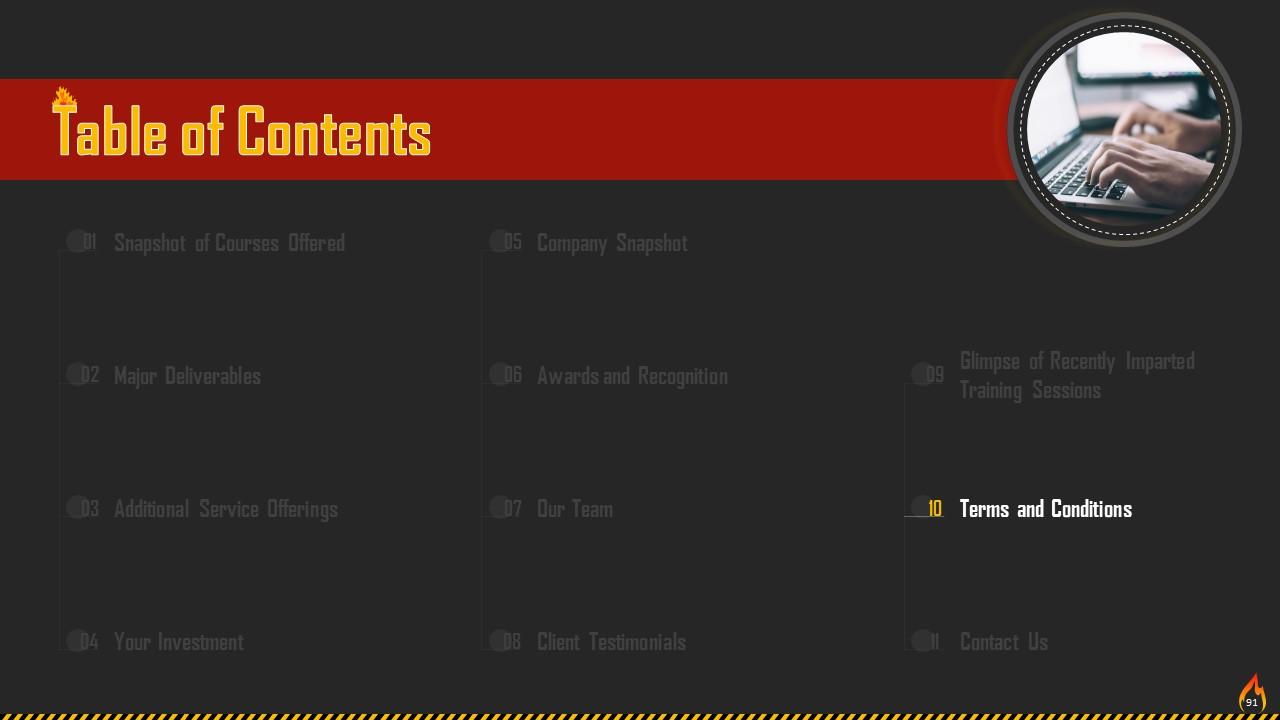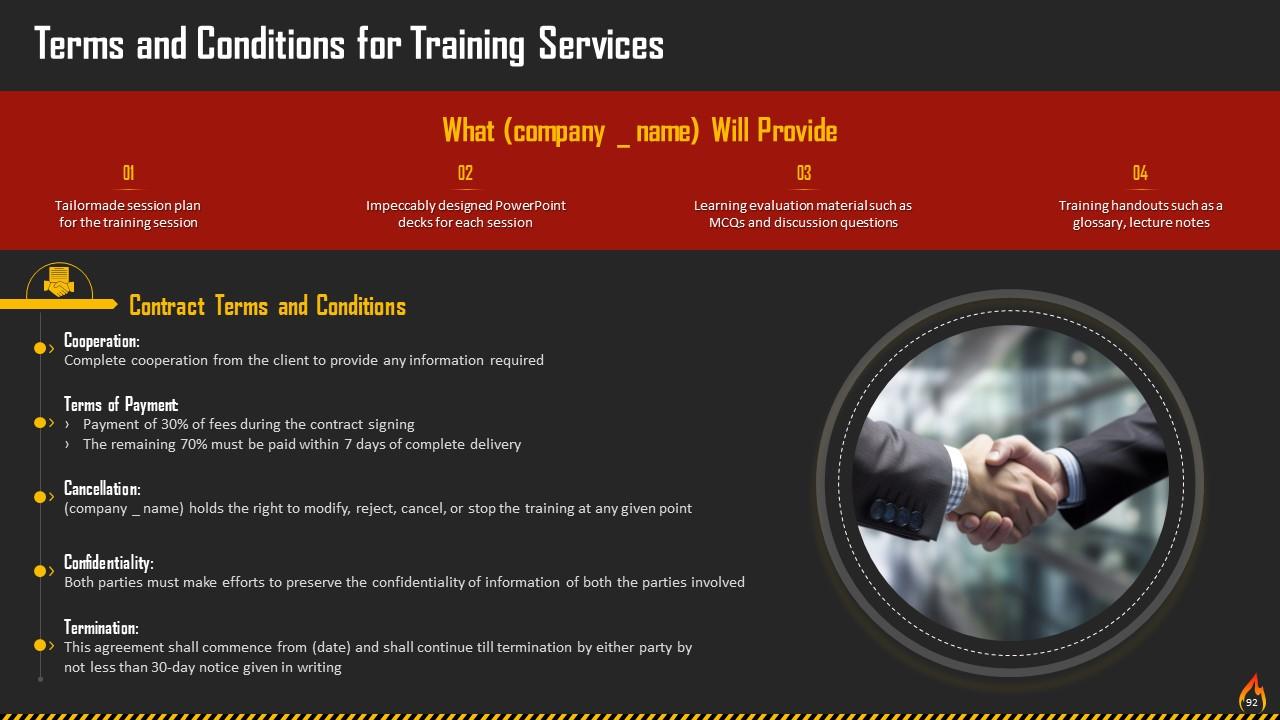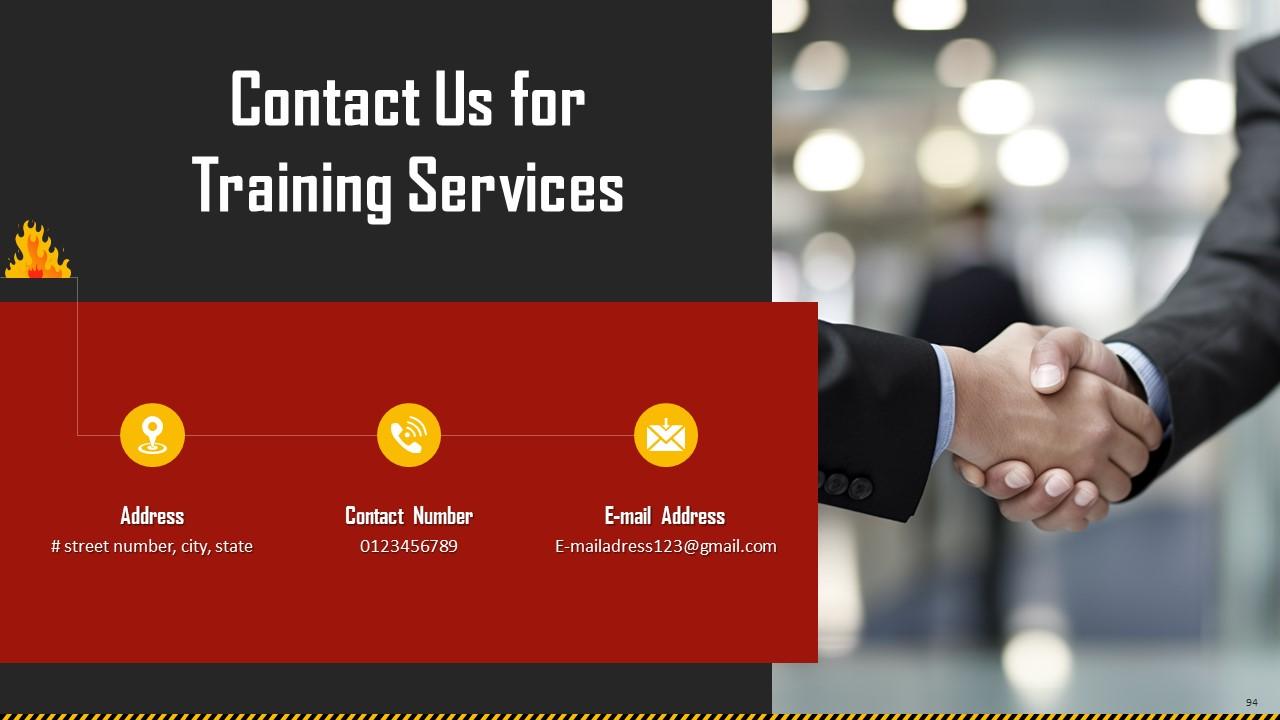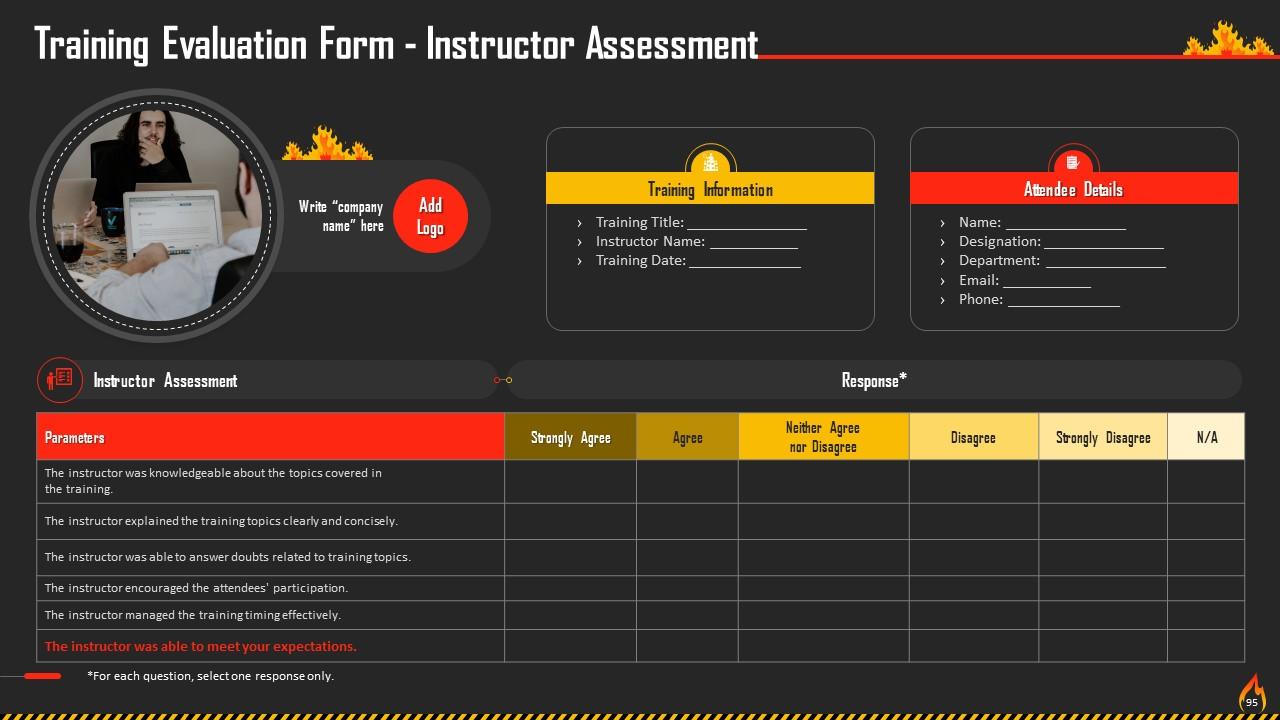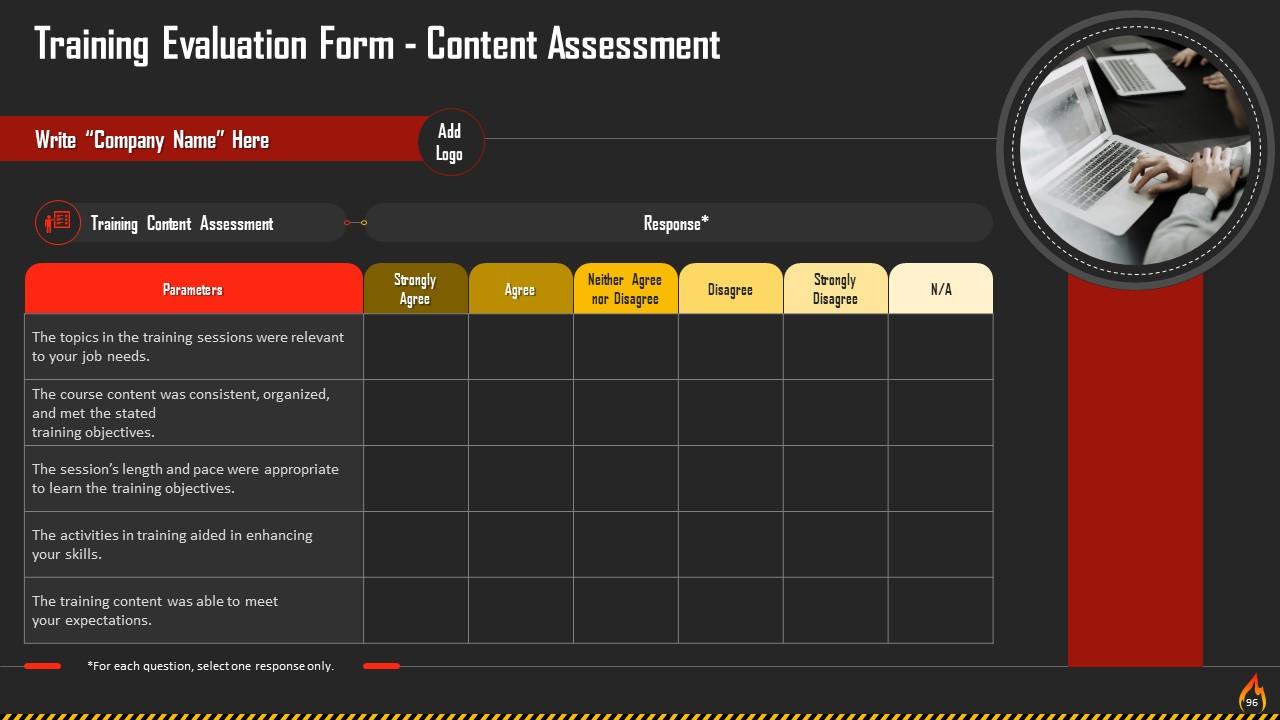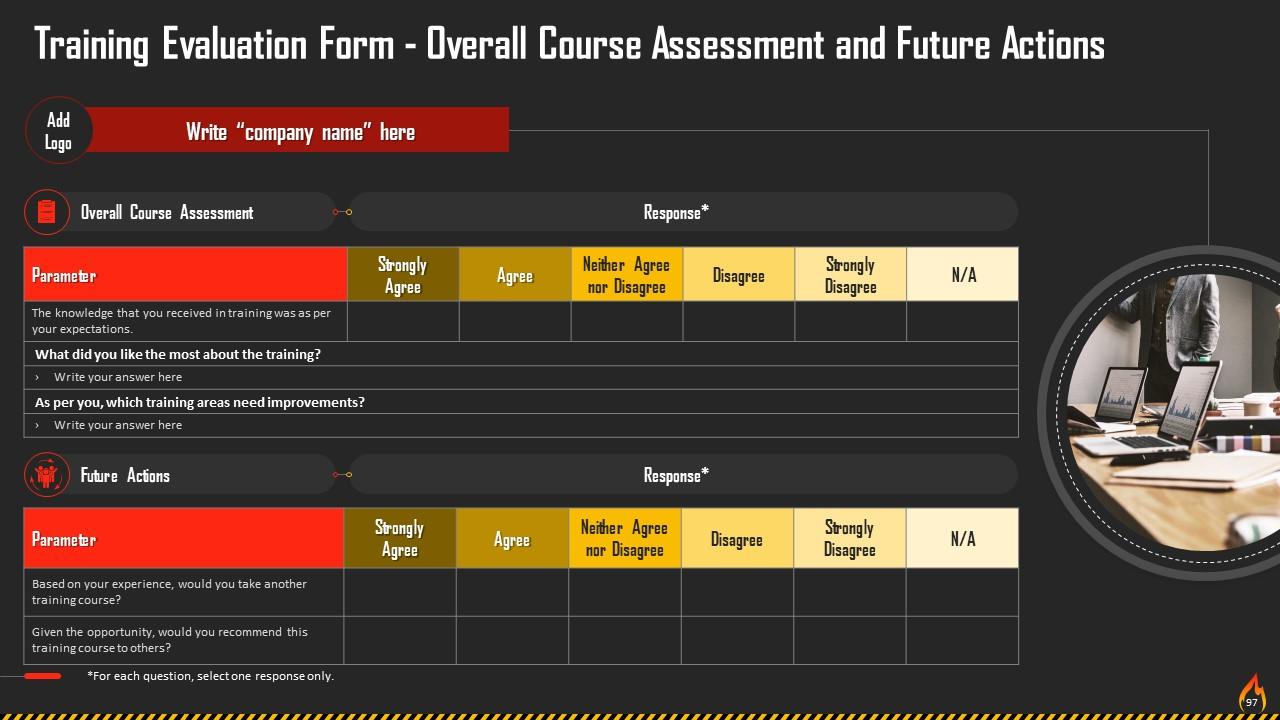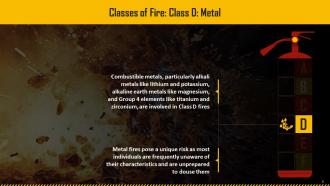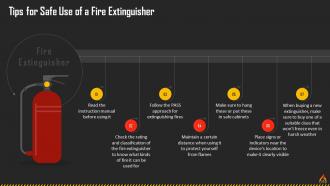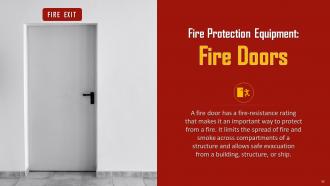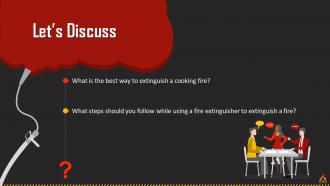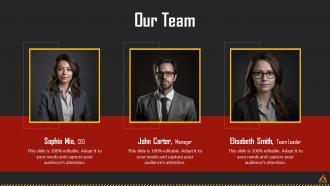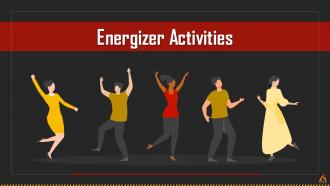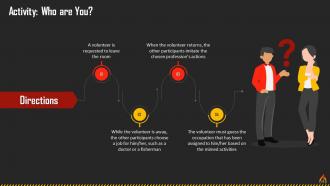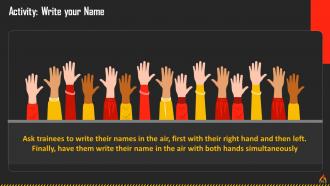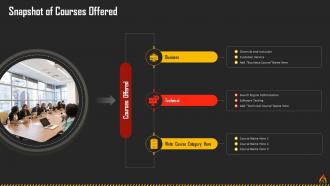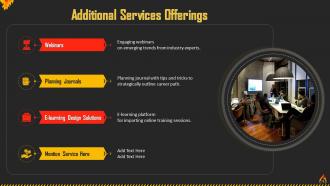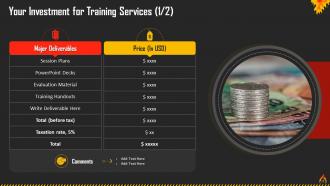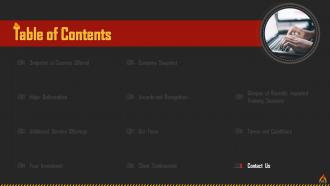A Guide To Fire Classes And Safety Equipment Training Ppt
The PPT Training Deck on A Guide to Fire Classes and Safety Equipment takes a comprehensive look at the different classes of fire, from Class A to Class F, each having unique properties and requiring specific types of fire extinguishers. It also provides an in-depth analysis of the different techniques to Extinguish a Fire, such as Cooling, Smothering, Starving, or interrupting the Combustion Process. However, knowledge without action is futile. So the PowerPoint Module walks through how to use a fire extinguisher properly with PASS Pull, Aim, Squeeze, Sweep Approach. Plus, it contains Tips for the safe use of Fire Extinguishers, Fire Blankets, and Critical Knowledge of what NOT to do when using a Fire Extinguisher. Further, the PowerPoint Module contains a section about common Fire Protection Equipment in Workplaces Fire Hydrants, Sprinklers, Dry Risers, CO2 Flooding Systems, Drenchers, Hose Reels, and Fire Doors. It has Key Takeaways and Discussion Questions related to the topic to make the training session more interactive. The Deck also contains PPT slides on About Us, Vision, Mission, Goal, 30-60-90 Days Plan, Timeline, Roadmap, Training Completion Certificate, Energizer Activities, Client Proposal, and Assessment Form.
The PPT Training Deck on A Guide to Fire Classes and Safety Equipment takes a comprehensive look at the different classes o..
- Google Slides is a new FREE Presentation software from Google.
- All our content is 100% compatible with Google Slides.
- Just download our designs, and upload them to Google Slides and they will work automatically.
- Amaze your audience with SlideTeam and Google Slides.
-
Want Changes to This PPT Slide? Check out our Presentation Design Services
- WideScreen Aspect ratio is becoming a very popular format. When you download this product, the downloaded ZIP will contain this product in both standard and widescreen format.
-

- Some older products that we have may only be in standard format, but they can easily be converted to widescreen.
- To do this, please open the SlideTeam product in Powerpoint, and go to
- Design ( On the top bar) -> Page Setup -> and select "On-screen Show (16:9)” in the drop down for "Slides Sized for".
- The slide or theme will change to widescreen, and all graphics will adjust automatically. You can similarly convert our content to any other desired screen aspect ratio.
Compatible With Google Slides

Get This In WideScreen
You must be logged in to download this presentation.
PowerPoint presentation slides
Presenting Training Deck on A Guide to Fire Classes and Safety Equipment. This deck comprises of 97 slides. Each slide is well crafted and designed by our PowerPoint experts. This PPT presentation is thoroughly researched by the experts, and every slide consists of appropriate content. All slides are customizable. You can add or delete the content as per your need. Not just this, you can also make the required changes in the charts and graphs. Download this professionally designed business presentation, add your content and present it with confidence.
People who downloaded this PowerPoint presentation also viewed the following :
Content of this Powerpoint Presentation
Slide 4
This slide lists classes of fire. A fire can be categorized into classes based on the type of material and fuel for combustion. These are A, B, C (AU/EU)/ B (US), D, E (AU)/ C (US), and F (EU/AU)/ K (US).
Slide 5
This slide talks about Class A fires that consist of ordinary combustibles. Most of us are familiar with Class A fires as they are the most common type. These are solid combustible substances like plastic, trash, paper, cloth, or wood.
Slide 6
This slide talks about Class B fires that consist of flammable liquid. These fires follow the same fundamental fire tetrahedron as regular combustible fires (heat, fuel, oxygen, chemical reaction), except that the fuel in question is a flammable liquid like gasoline or natural gas
Slide 7
This slide talks about Class C (EU/AU)/Class B (US) fires that consist of flammable gases. These fires are difficult to put out because the fuel is gaseous. The best ways to put out a combustible gas fire are to either displace the oxygen or stop the fuel flow (by shutting off any gas taps or valves)
Instructor’s Notes: In the European/Australian system, fires involving flammable or combustible fuel are categorized as "Class C"; however, in the US system, flammable liquids and gases together are categorized as "Class B" fires
Slide 8
This slide talks about Class D fires that consist of metal. Combustible metals, particularly alkali metals like lithium and potassium, alkaline earth metals like magnesium, and Group 4 elements like titanium and zirconium, are involved in Class D fires
Instructor’s Notes: Metal fires are typically dangerous when metal is present as sawdust, machine shavings, or other metal "fines," which ignite more quickly than bigger blocks due to their higher surface area
Slide 9
This slide talks about Class E (AU)/ Class C (US) fires that involve electricity. Overloaded electrical wires or short-circuiting machinery are two potential causes of this kind of fire.
Instructor’s Notes: Firefighters who use water or other conductive materials to put out these fires risk serious injury because electricity can travel through the water to the firefighter's body and subsequently to the earth
Slide 10
This slide talks about Class F (EU/AU)/ Class K (US) fires that consist of cooking oils and fats. Although these fires are essentially a subclass of flammable liquid/gas fires, their unique characteristics, particularly their higher flash point, are considered significant enough for these to be categorized as a separate class.
Slide 11
This slide highlights types of fire extinguishers. These are water, foam, carbon dioxide, dry powder, wet chemical, and a fire blanket.
Instructor’s Notes:
- Water: Water fire extinguishers are labelled red and are used for extinguishing Class A fires. They effectively put out fires caused by solid combustibles like wood, paper, and textiles
- Foam: Foam fire extinguishers come with a cream label and are highly effective in extinguishing Class A and Class B fires
- Carbon Dioxide: Carbon Dioxide fire extinguishers have a black label and were designed to extinguish flammable liquid fires; hence they have a Class B fire rating. They can also be used to put out electrical fires, as carbon dioxide is not a conductor, and these do not leave any toxic residue
- Dry Powder: Dry Powder fire extinguishers come with a blue label and can be used to extinguish Class A, B, C, and electrical fires
- Wet Chemical: Wet chemical fire extinguishers come with a yellow label and are designed specifically for extinguishing fires involving combustible cooking material such as burning oil and fat
- Fire Blanket: A fire blanket is a safety tool designed to put out incipient or developing fires. It consists of a sheet made of fire-resistant material that can be placed over a fire to smother it. In addition to being frequently used for chip pan and toaster fires, they can also be found in laboratories and waste bins
Slide 12
This slide depicts a fire classification and extinguisher table. It highlights types of fire extinguishers that can be used for putting out types of fires.
Slide 13
This slide talks about the methods that can be used to extinguish a fire. According to the fire tetrahedron, the four necessary elements for igniting a fire are heat, fuel, oxygen, and chemical chain reaction. One or more of these factors must be removed to put out a fire effectively. Fire extinguishing techniques can be categorized based on the removal of these factors.
Slide 14
This slide discusses the cooling technique to extinguish a fire. Removing heat is one of the best methods for putting out a fire. Water is the most widely used fire extinguishing agent as it can absorb the heat that the fire produces.
Slide 15
This slide talks about the smothering technique to extinguish a fire. Smothering is a fire extinguishing technique where oxygen is removed from the fire tetrahedron. This can be done by smothering a pan with a fire blanket, introducing carbon dioxide or an inert gas within the immediate vicinity of the fire.
Slide 16
This slide discusses the starving technique to extinguish a fire. There are many ways to do this, including restricting the flow of liquid or gaseous fuel, eliminating solid fuel from the fire's path, or letting the fire burn until all of the fuel is consumed.
Slide 17
This slide talks about interrupting the combustion process as a technique to extinguish a fire. You can use specific fire extinguishing tools such as dry powder, bromochlorodifluoromethane (BCF), and other halon extinguishers.
Slide 19
This slide depicts the PASS approach for using a fire extinguisher. P stands for pull the pin, A for aim at the base of fire, S for squeeze the lever, and S for sweep side to side.
Instructor’s Notes:
- P: The first step of using a fire extinguisher is pulling the pin on its handle
- A: In the next step, the nozzle of the fire extinguisher must be aimed at the fire’s base
- S: In this step, the lever below the handle should be squeezed. By doing this, the extinguishing agent is discharged, and releasing the lever stops it. Some extinguishers may have a button that can be pressed for the same
- S: Finally, the extinguisher should be swept from side to side, aiming at the fire’s base until the flames appear to be out. This process should be repeated if the fire appears to re-ignite
Slide 20
This slide talks about some tips for the safe use of a fire extinguisher. Some of these include reading the instruction manual carefully before using it, checking the rating and classification of the extinguisher, following the PASS approach.
Slide 21
This slide highlights the things that shouldn’t be done while extinguishing a fire with an extinguisher. Some of these not trying to use the wrong type of extinguisher to put out a fire, ignoring the instructions printed on the fire extinguisher.
Slide 22
This slide shows us how to use a fire blanket in case of a substance in flames and for a person in flames.
Slide 23
This slide lists types of fire protection equipment that can be used at workplaces. These are fire hydrants, sprinklers, dry risers, CO2 flooding system, drenchers, hose reels, and fire doors.
Slide 24
This slide tells us about fire hydrants that can be used at workplaces as fire protection equipment. A fire hydrant, also known as a water plug, is a connection point through which firefighters can access a water supply. It is an active fire protection component.
Slide 25
This slide talks about sprinklers that can be used at workplaces as fire protection equipment. A fire sprinkler or sprinkler head is an element of a fire sprinkler system that releases water whenever the effects of a fire are identified, such as exceeding a specified fixed temperature.
Slide 26
This slide tells us about dry risers that can be used at workplaces as fire protection equipment. A dry riser is typically an empty pipe that firefighters can connect externally to a pressurized water source.
Slide 27
This slide talks about CO2 Flooding System that can be used at workplaces as fire protection equipment. A CO2 Gas Flooding System spreads a layer of heavy gas that reduces the oxygen content in the atmosphere to a level where combustion is no longer feasible
Slide 28
This slide tells us about drenchers that can be used at workplaces as fire protection equipment. A drencher system consists of water heads that are used for fire protection. As opposed to sprinklers found internally, drenchers are typically installed on the exterior of a structure to protect against fire from a surrounding building.
Slide 29
This slide provinces information about hose reels that can be used at workplaces as fire protection equipment. A hose reel is used to suppress fires by carrying water or other fire retardants like foam at high pressure.
Slide 30
This slide tells us about fire doors that can be used at workplaces as fire protection equipment. A fire door has a fire-resistance rating that makes it an important way to protect from a fire.
Slide 51 to 66
These slides contain energizer activities to engage the audience of the training session.
Slide 67 to 94
These slides contain a training proposal covering what the company providing corporate training can accomplish for the client.
Slide 95 to 97
These slides include a training evaluation form for instructor, content and course assessment.
A Guide To Fire Classes And Safety Equipment Training Ppt with all 102 slides:
Use our A Guide To Fire Classes And Safety Equipment Training Ppt to effectively help you save your valuable time. They are readymade to fit into any presentation structure.
-
Requested a complete pitch deck. Delivered immediately and with high quality well researched content.
-
SlideTeam is a great place for PPT templates. They have many templates on a single topic. It has made my life a lot easier.


